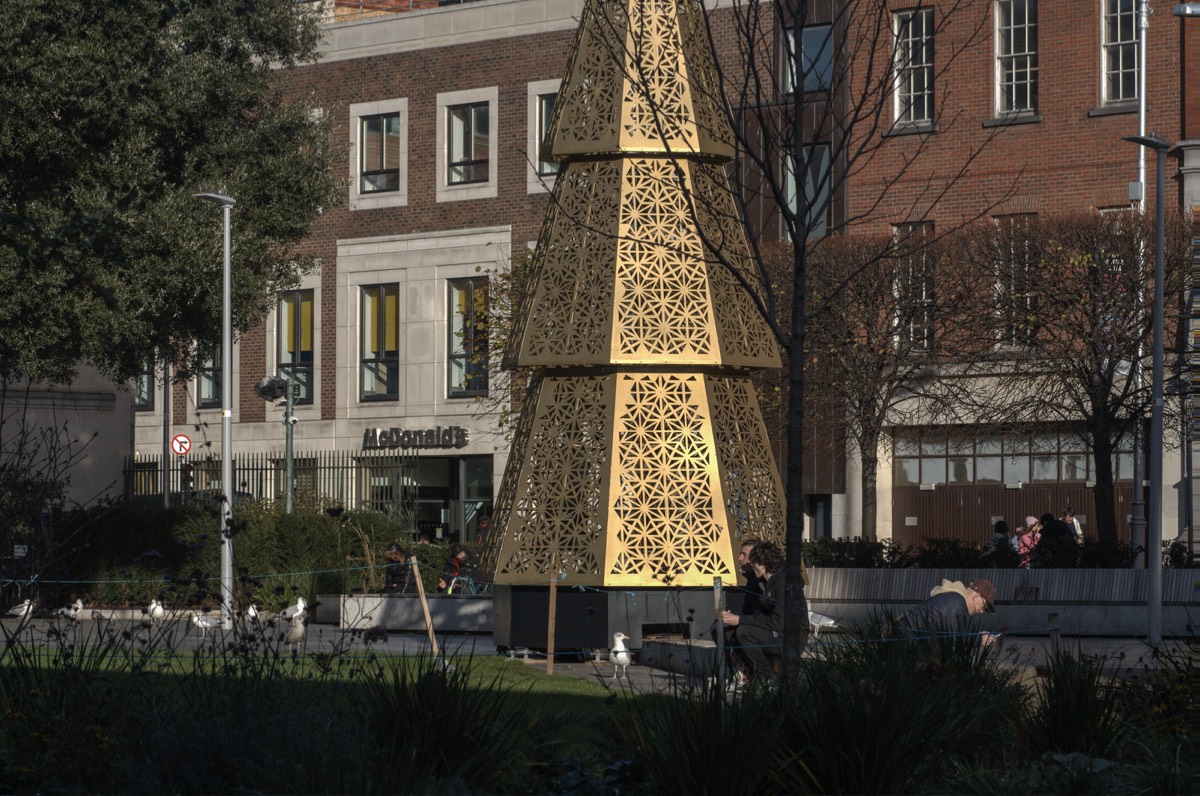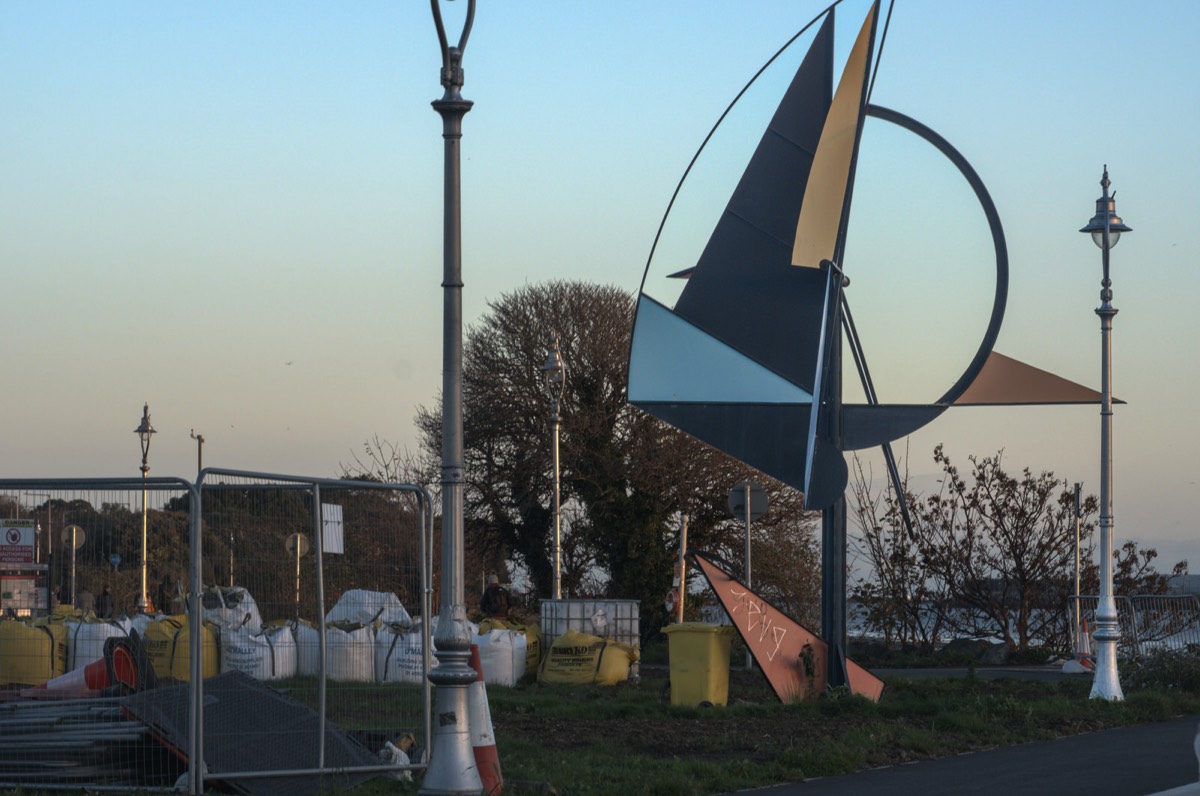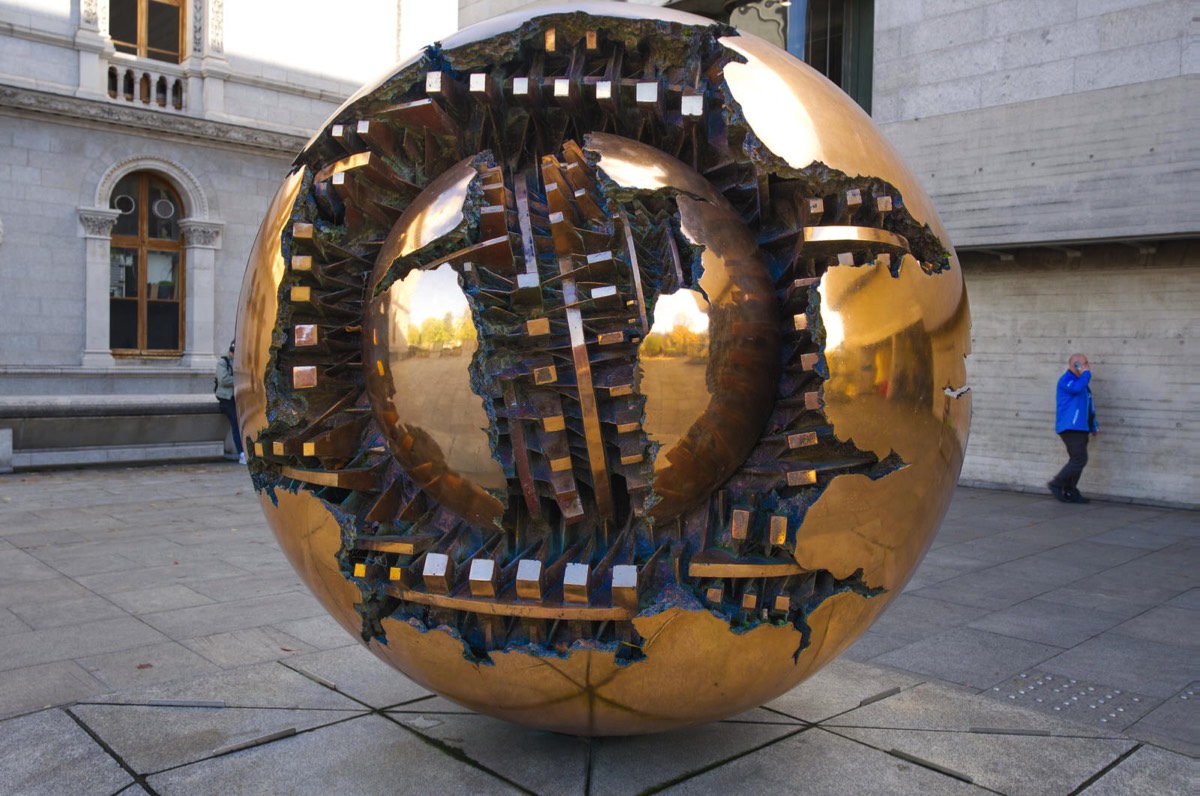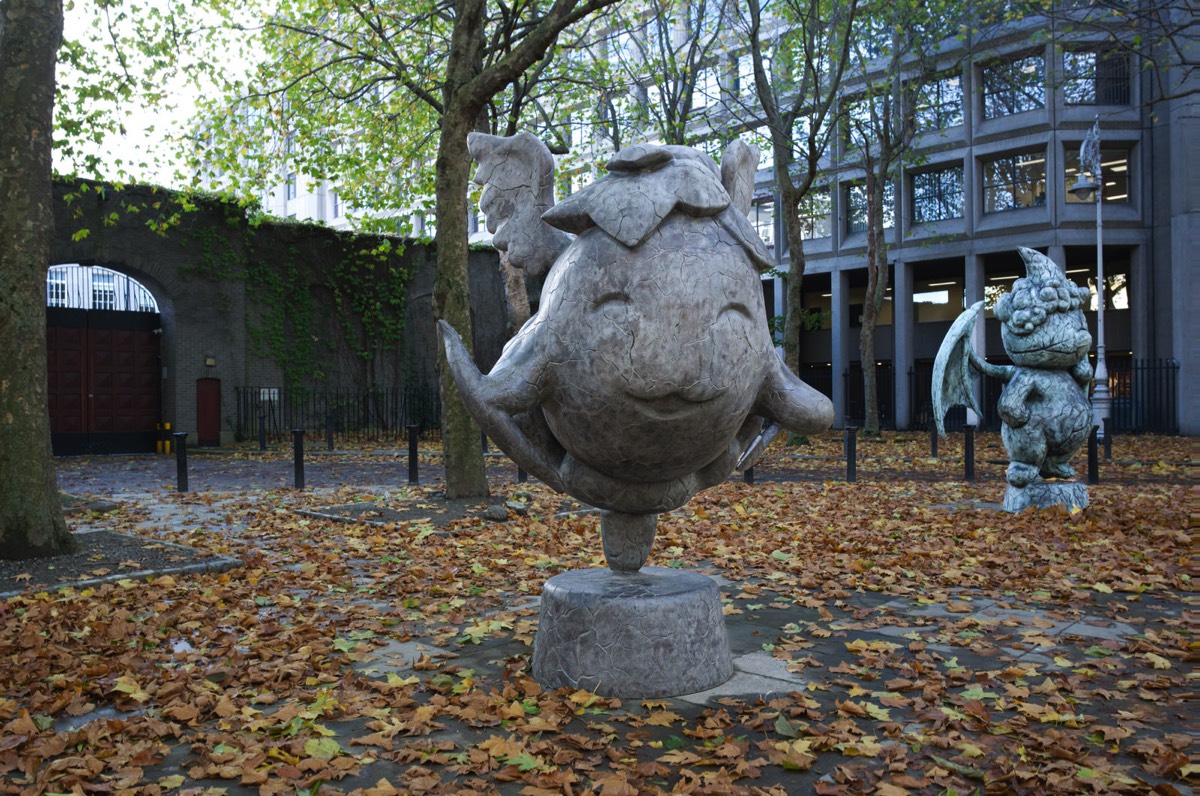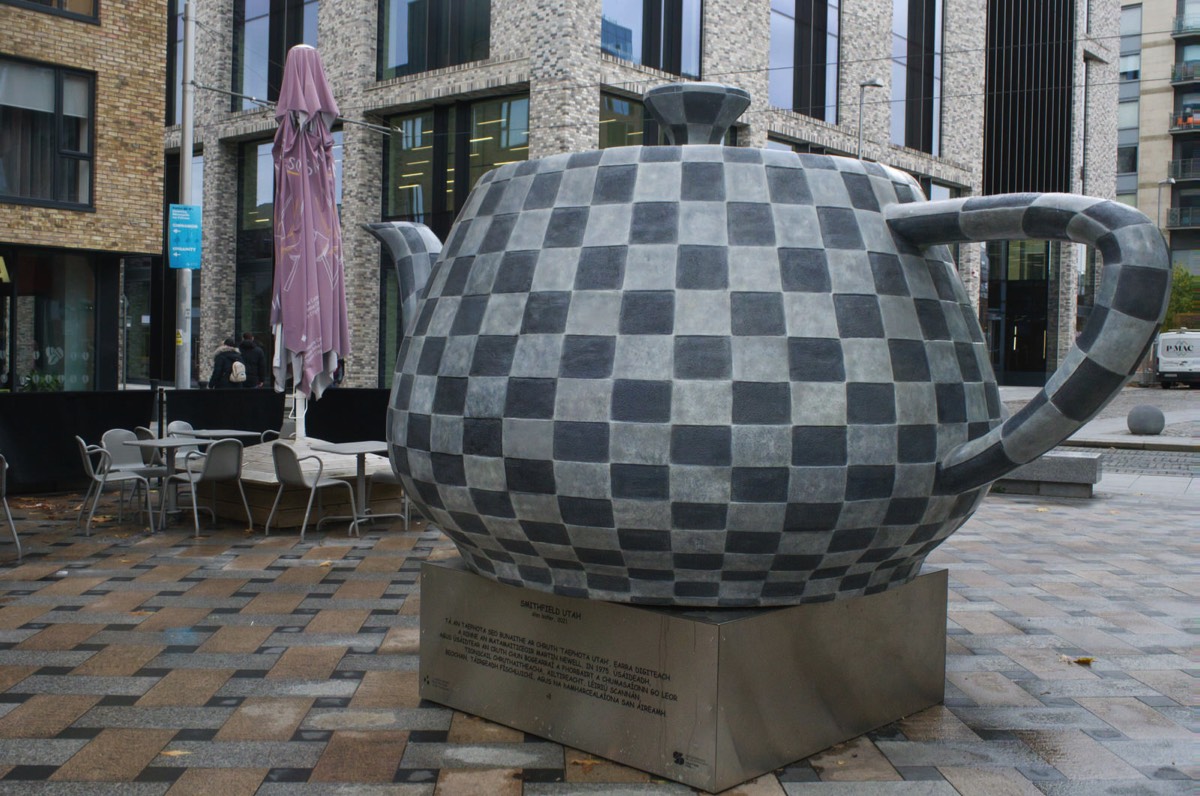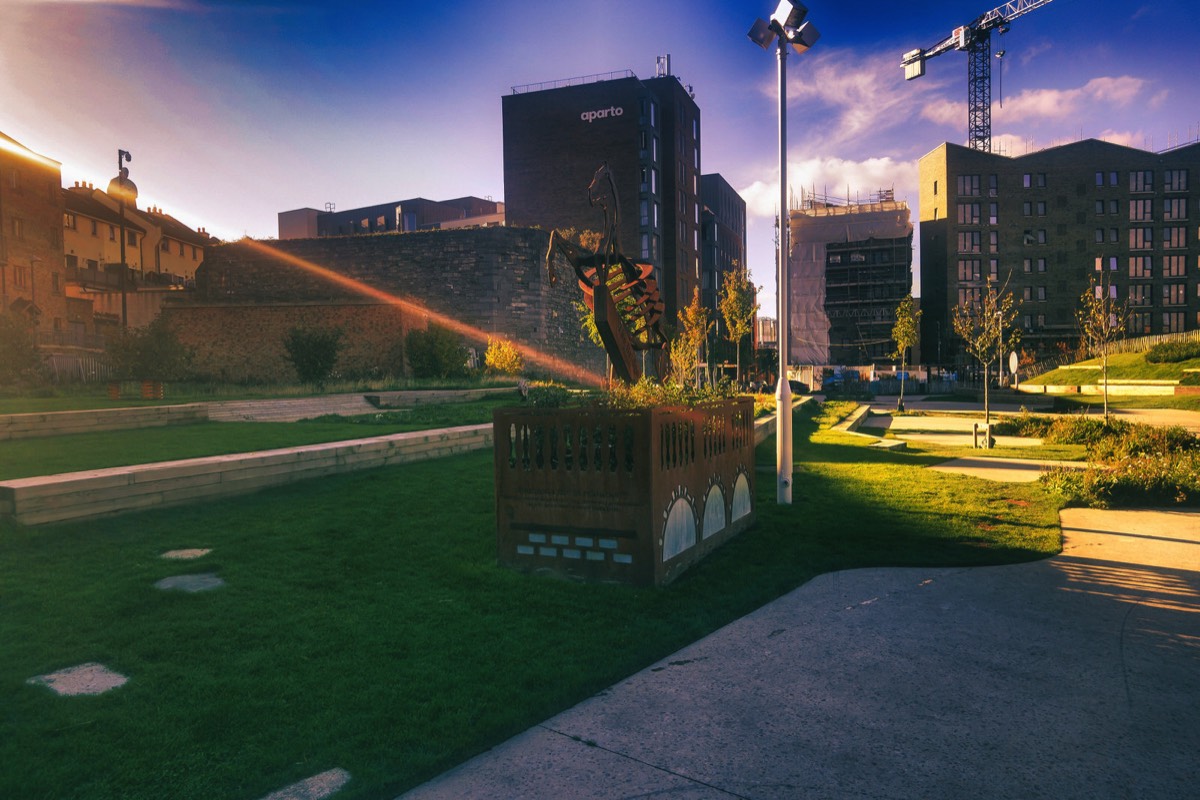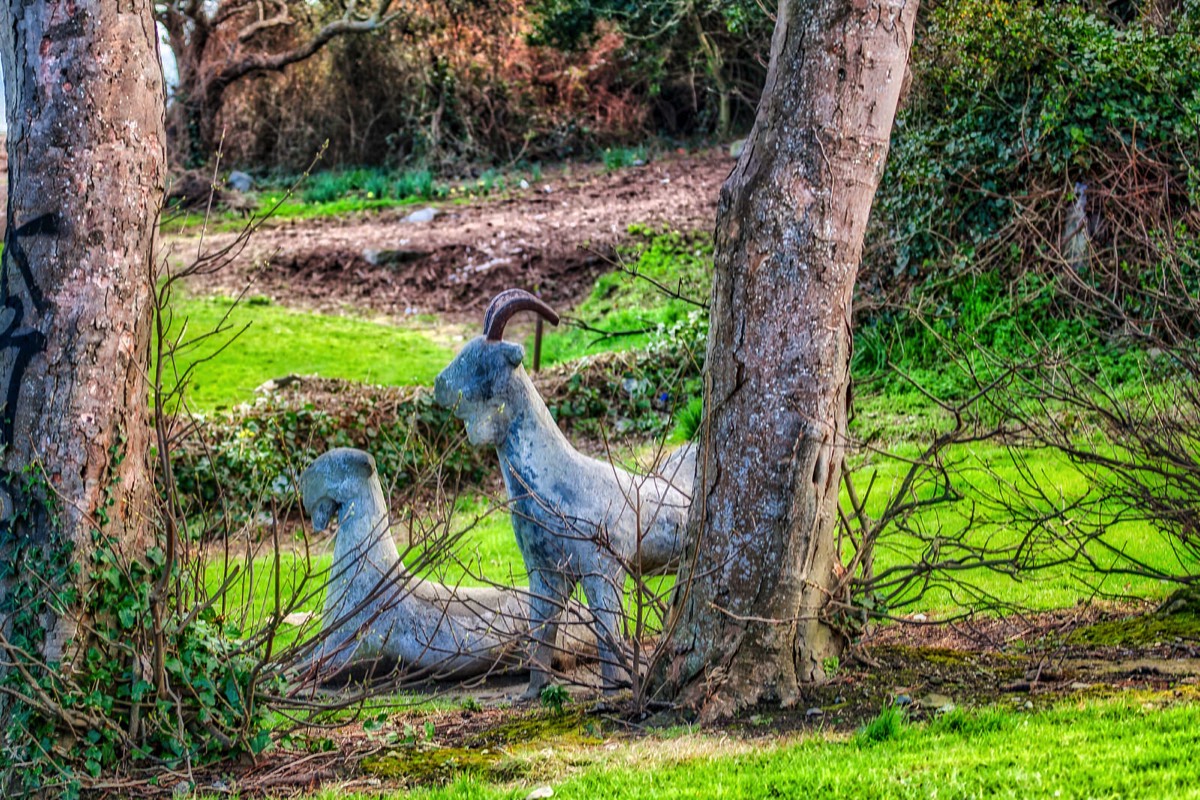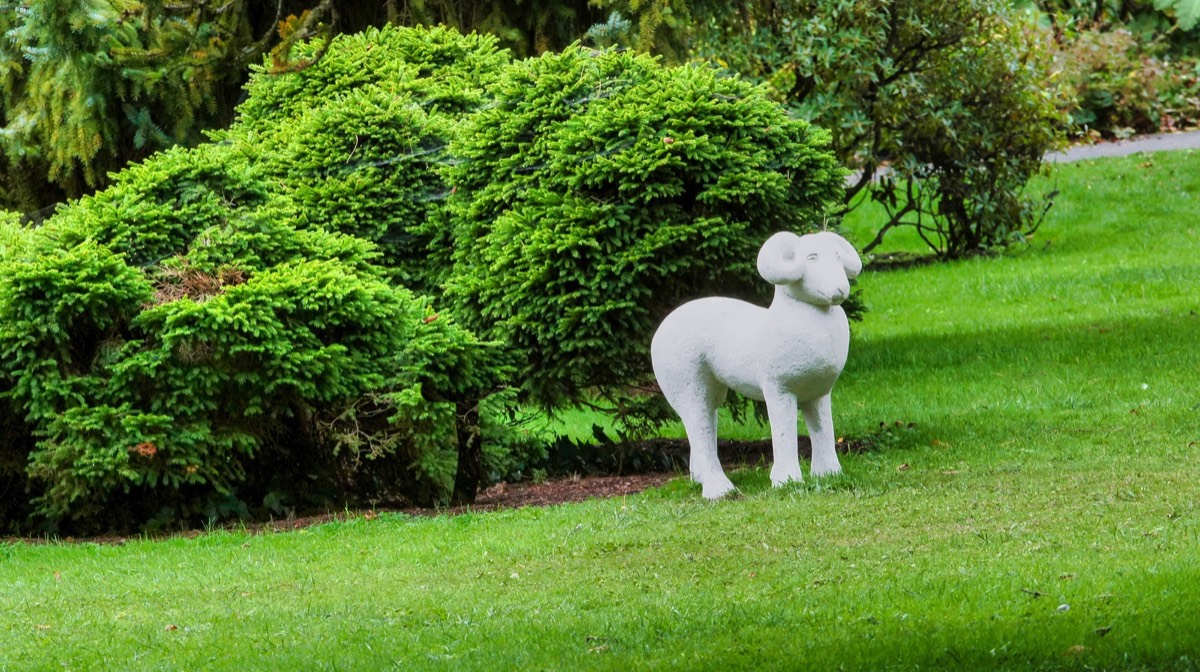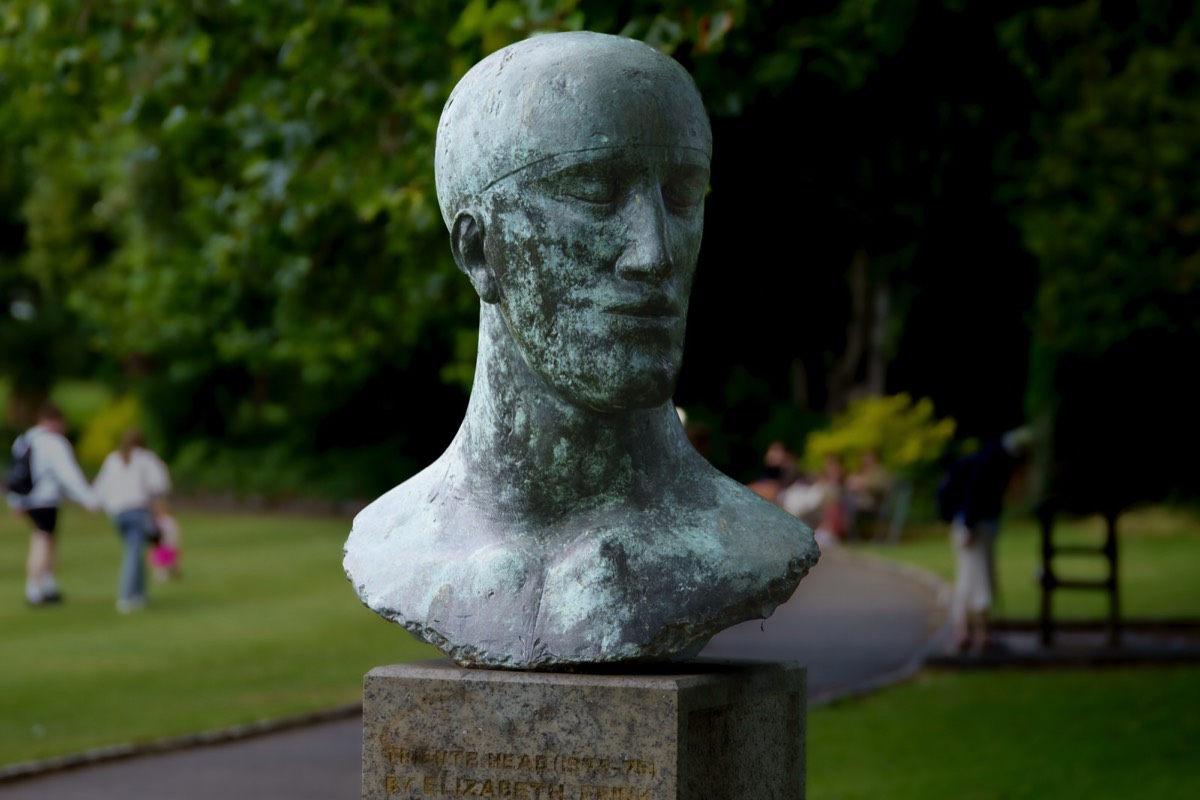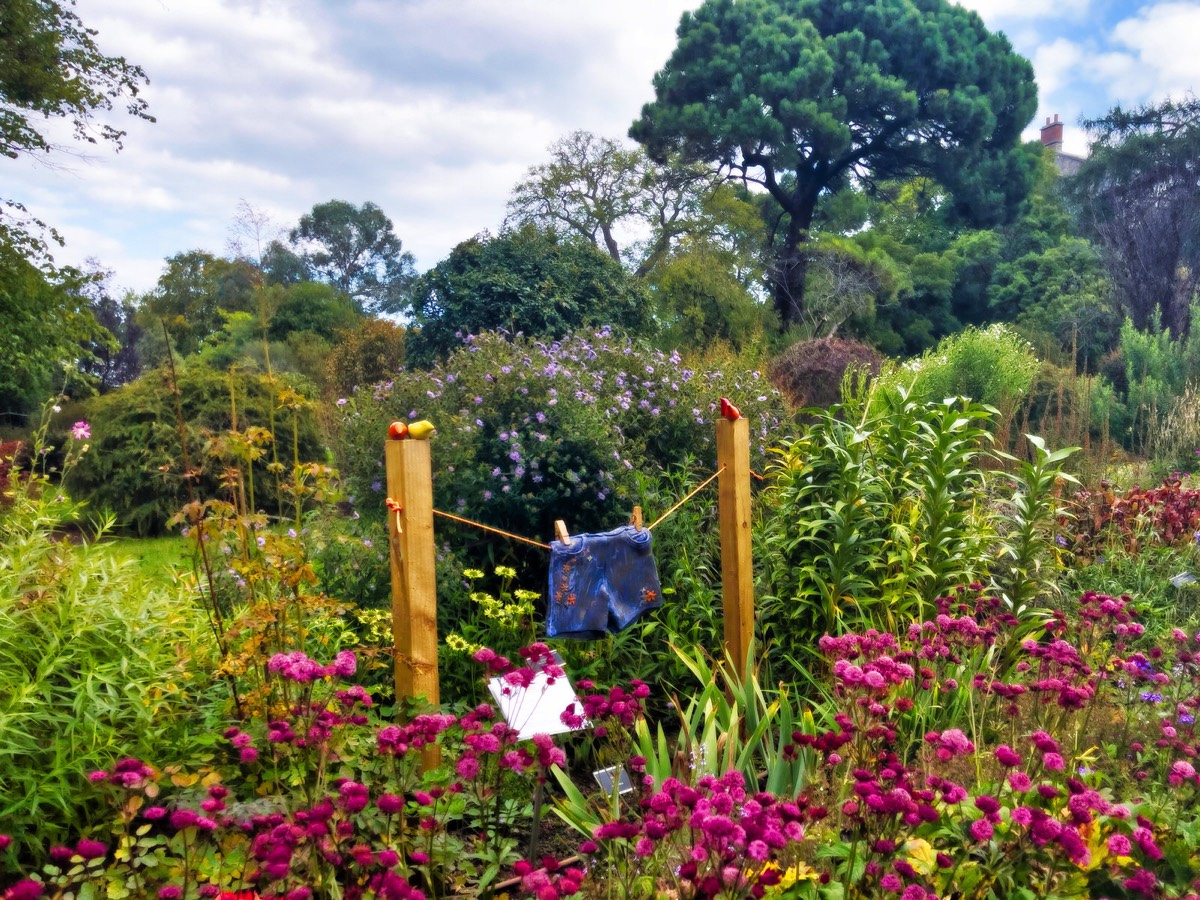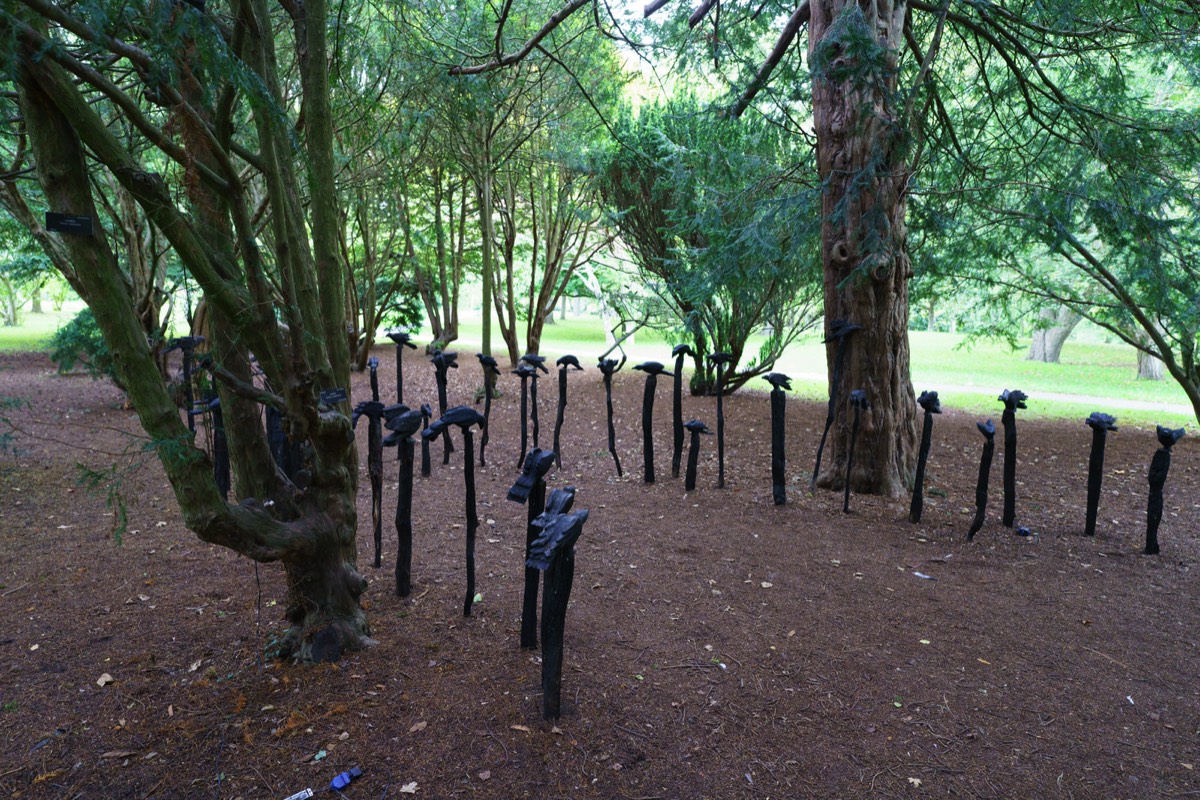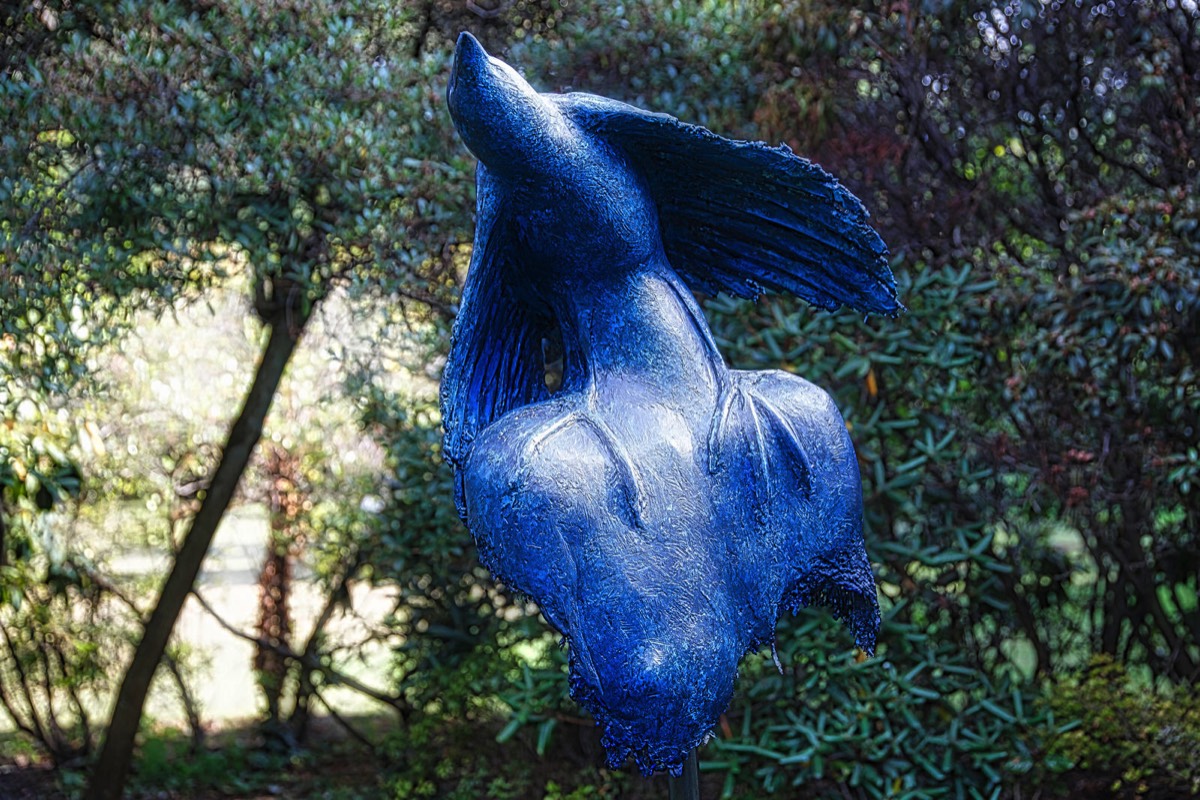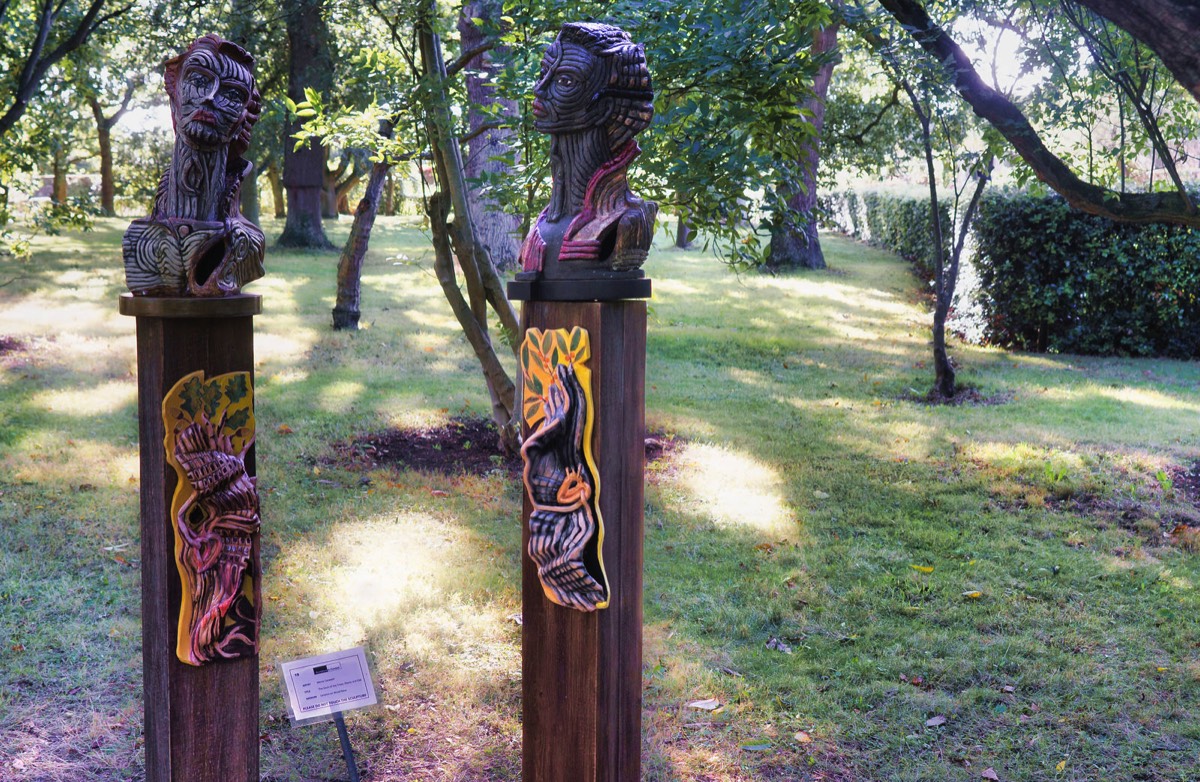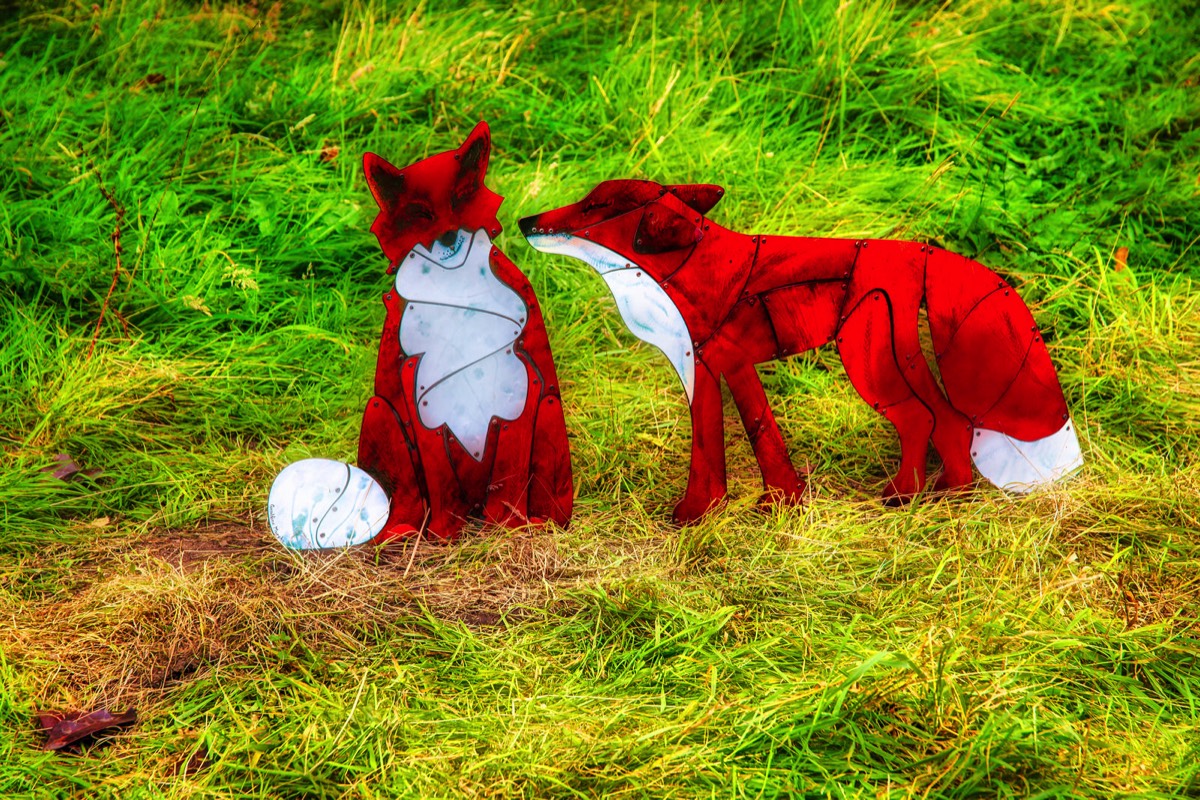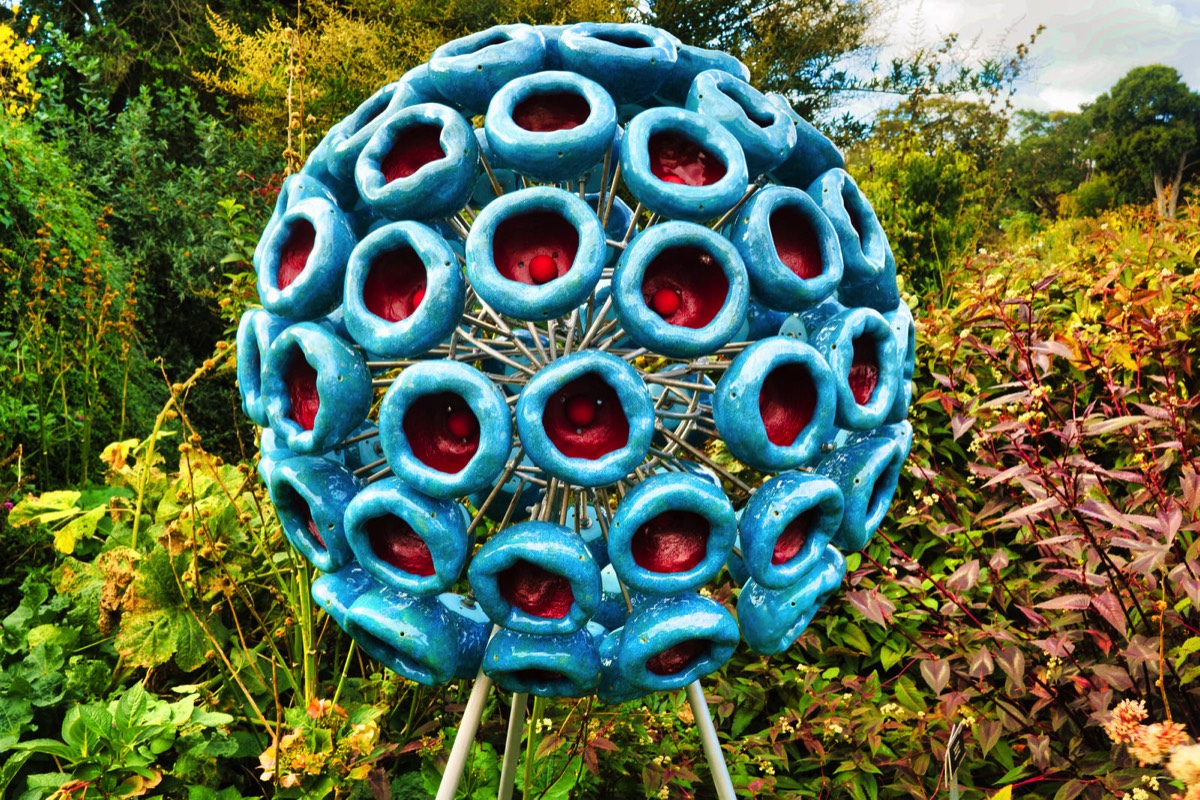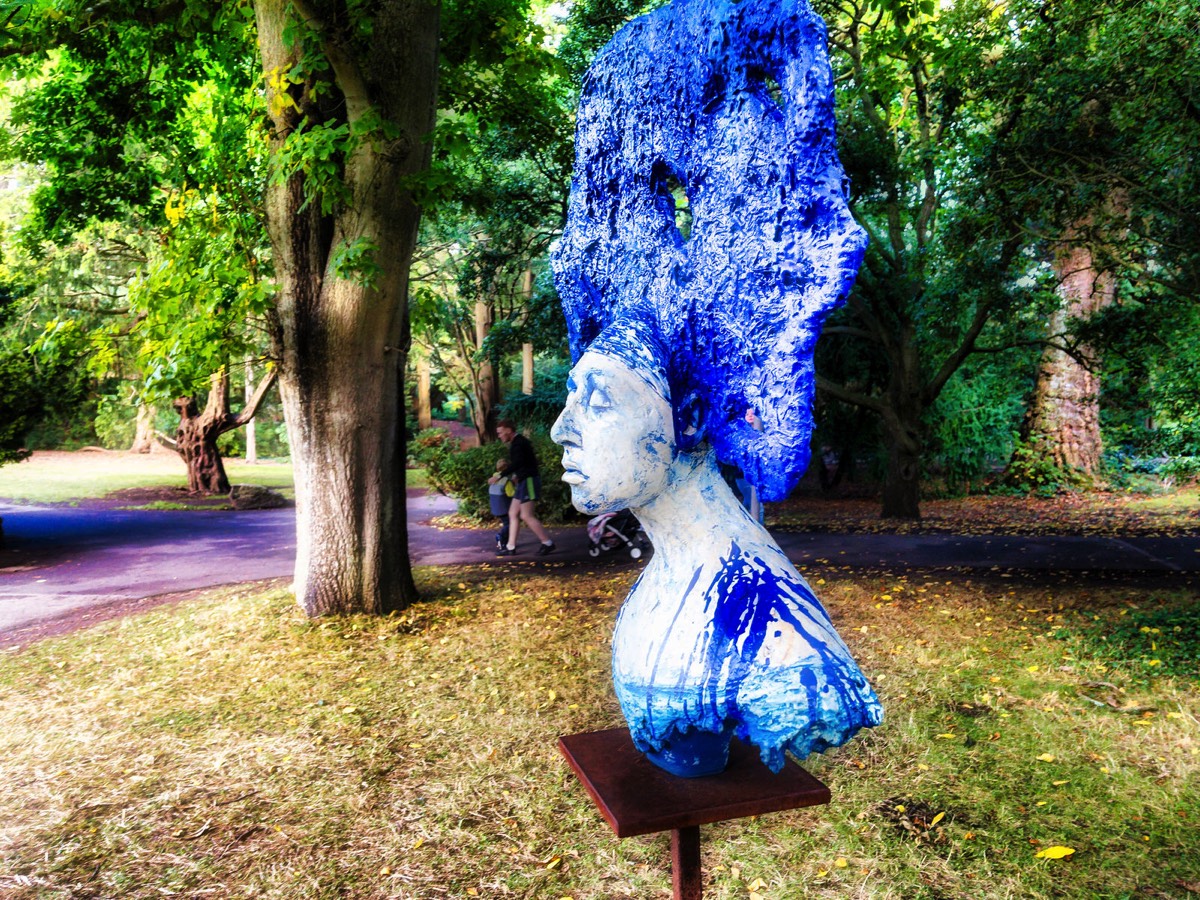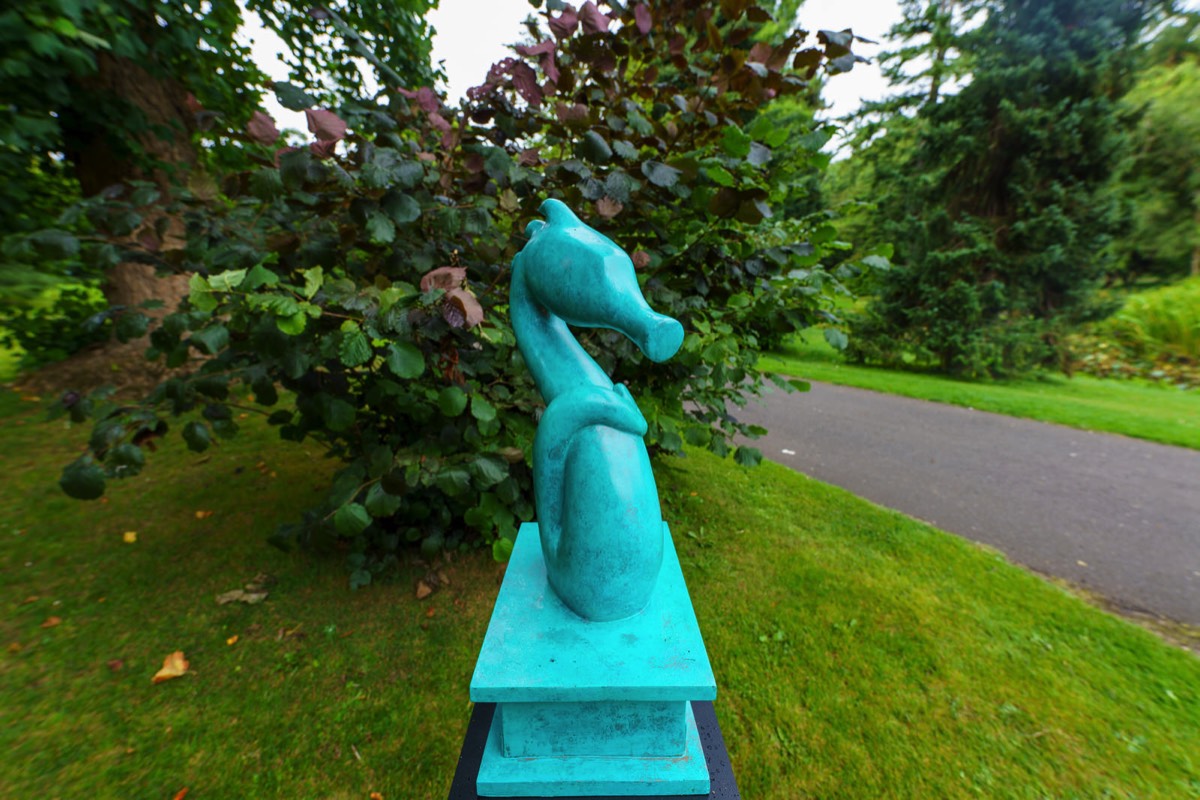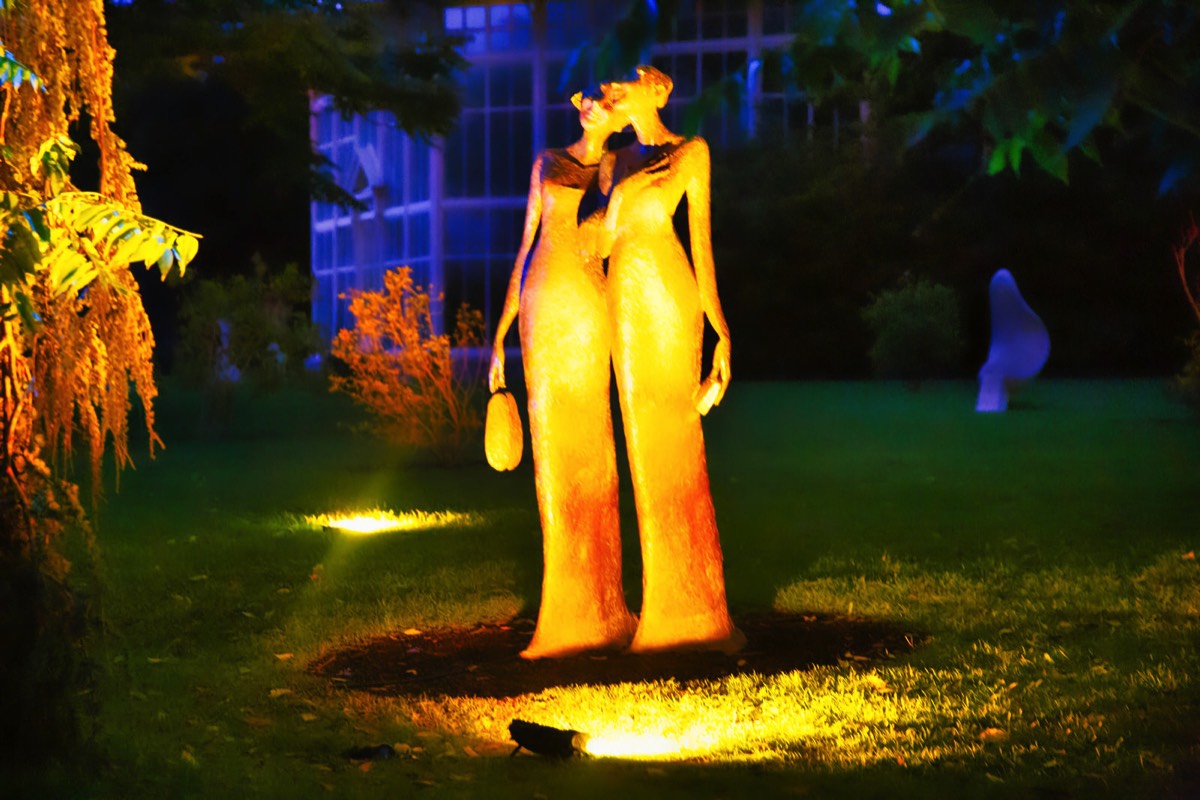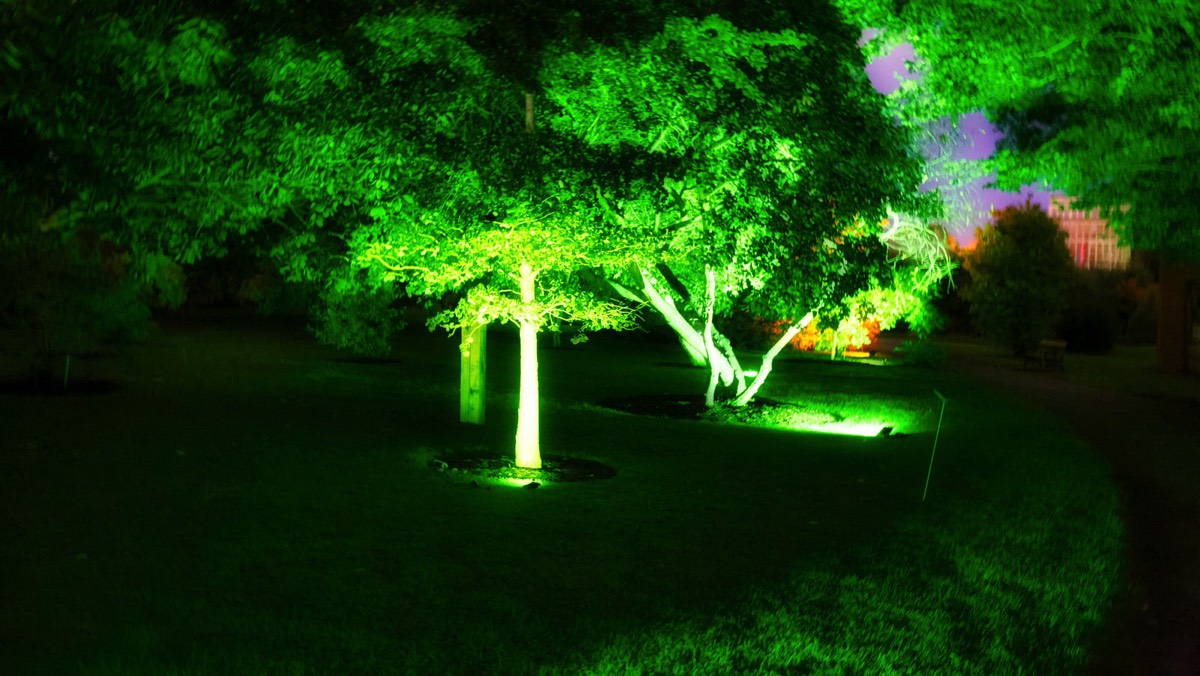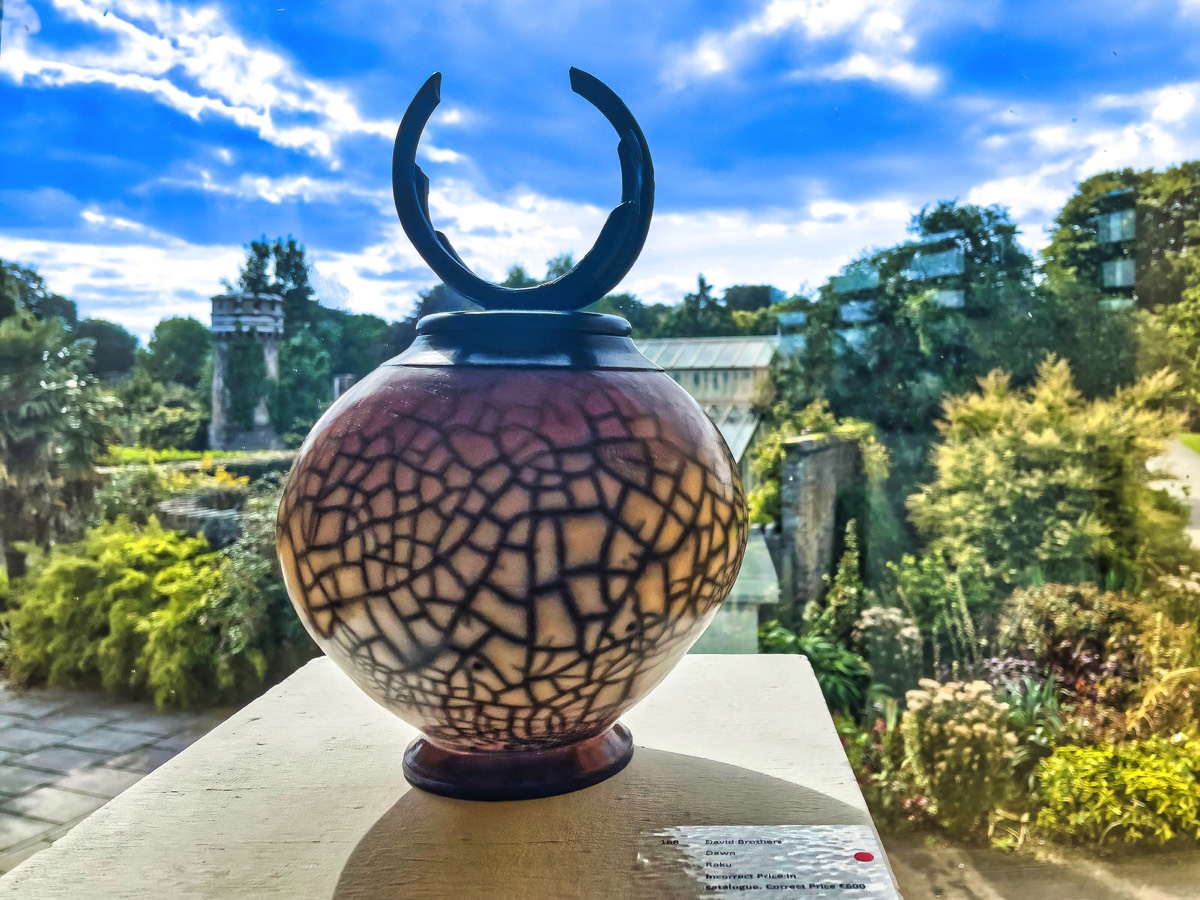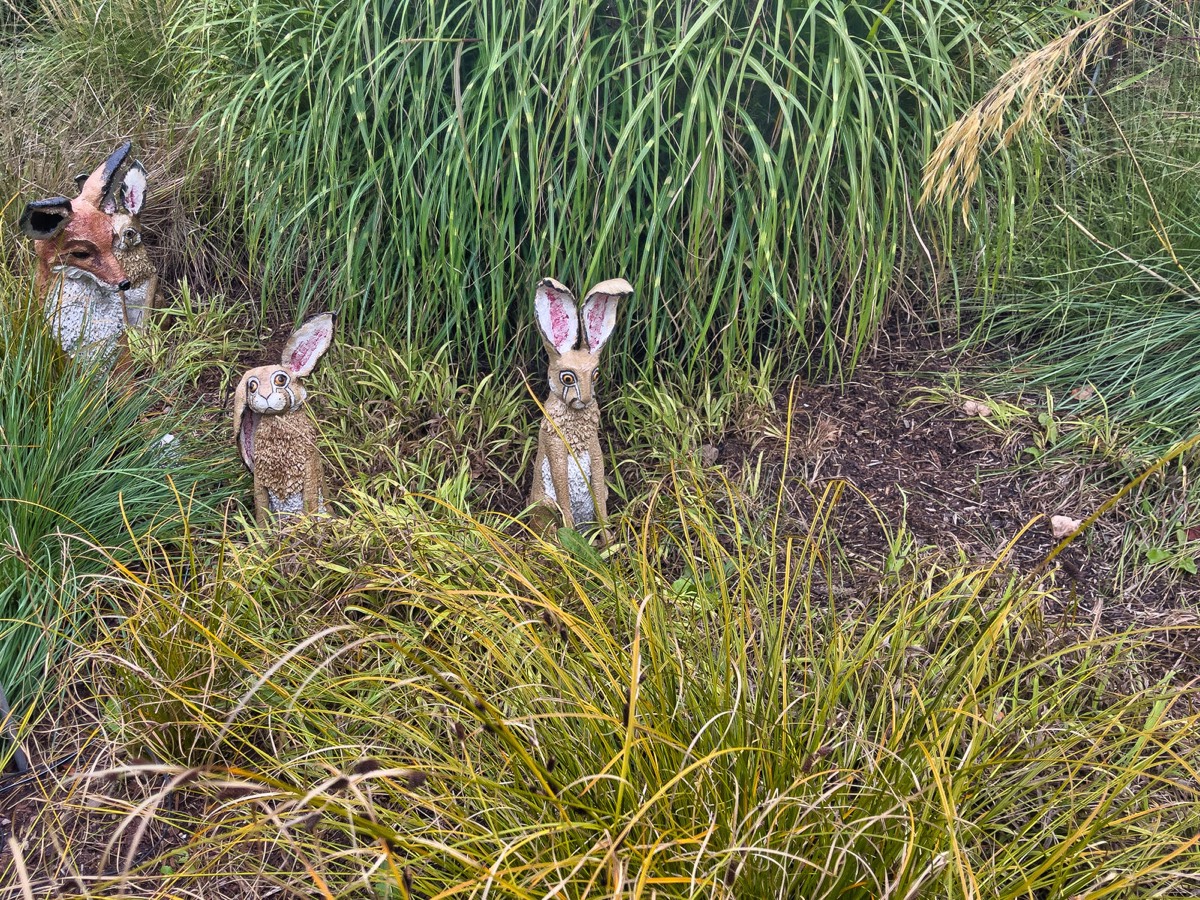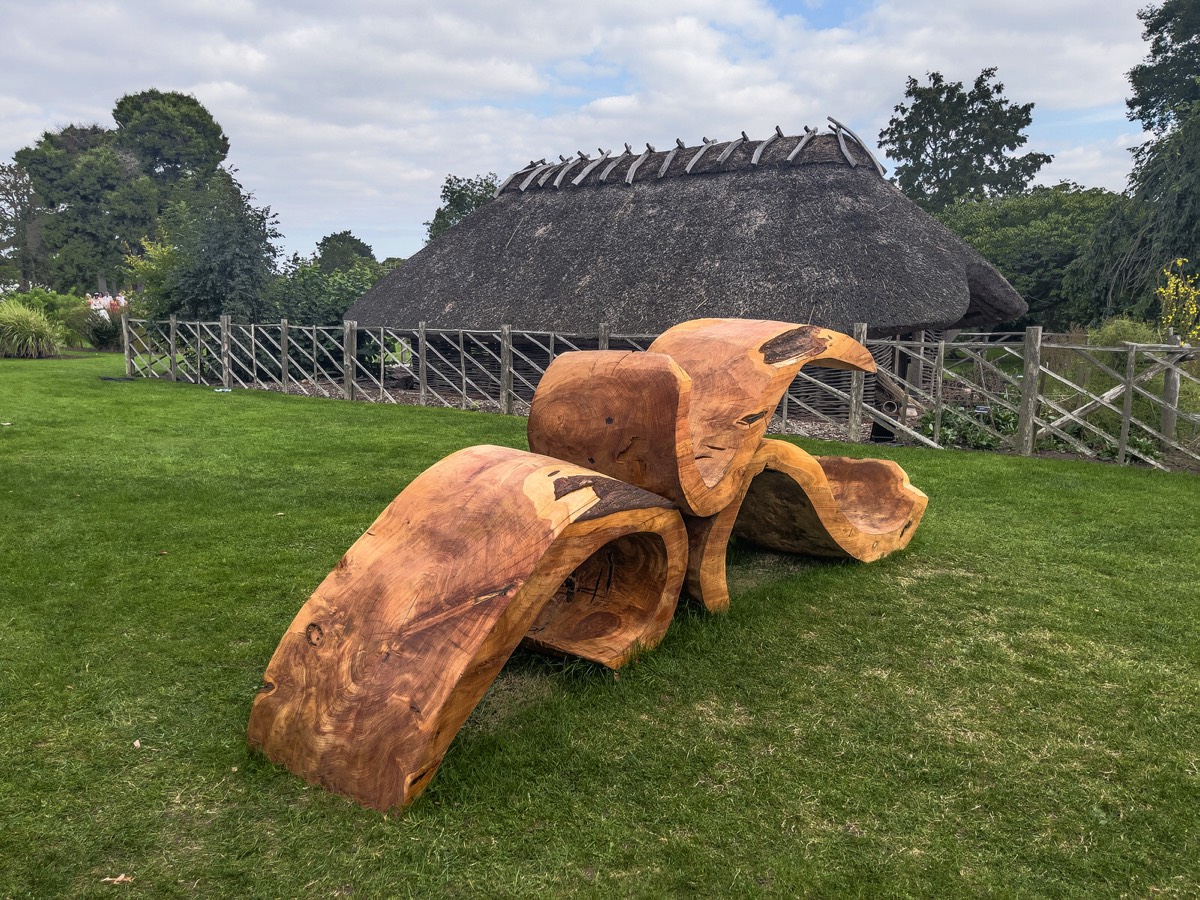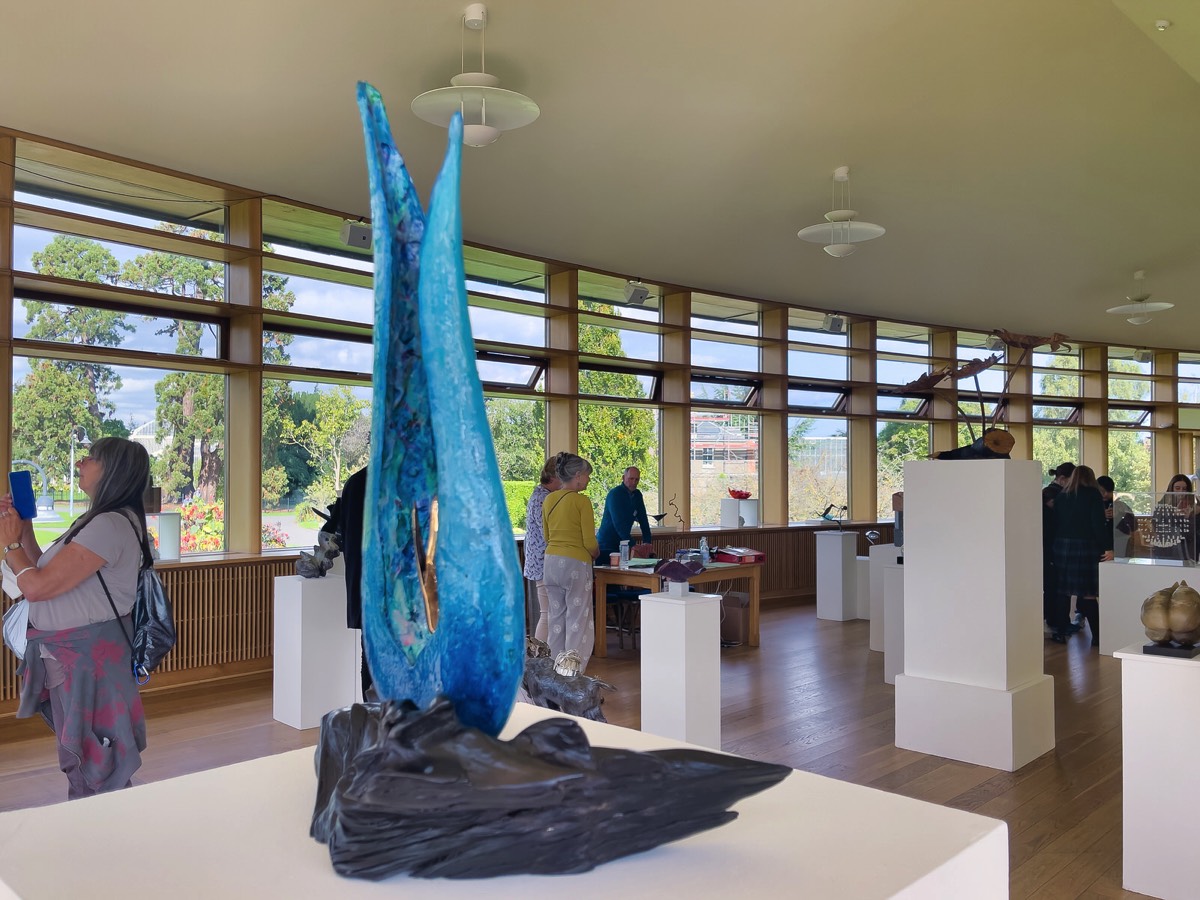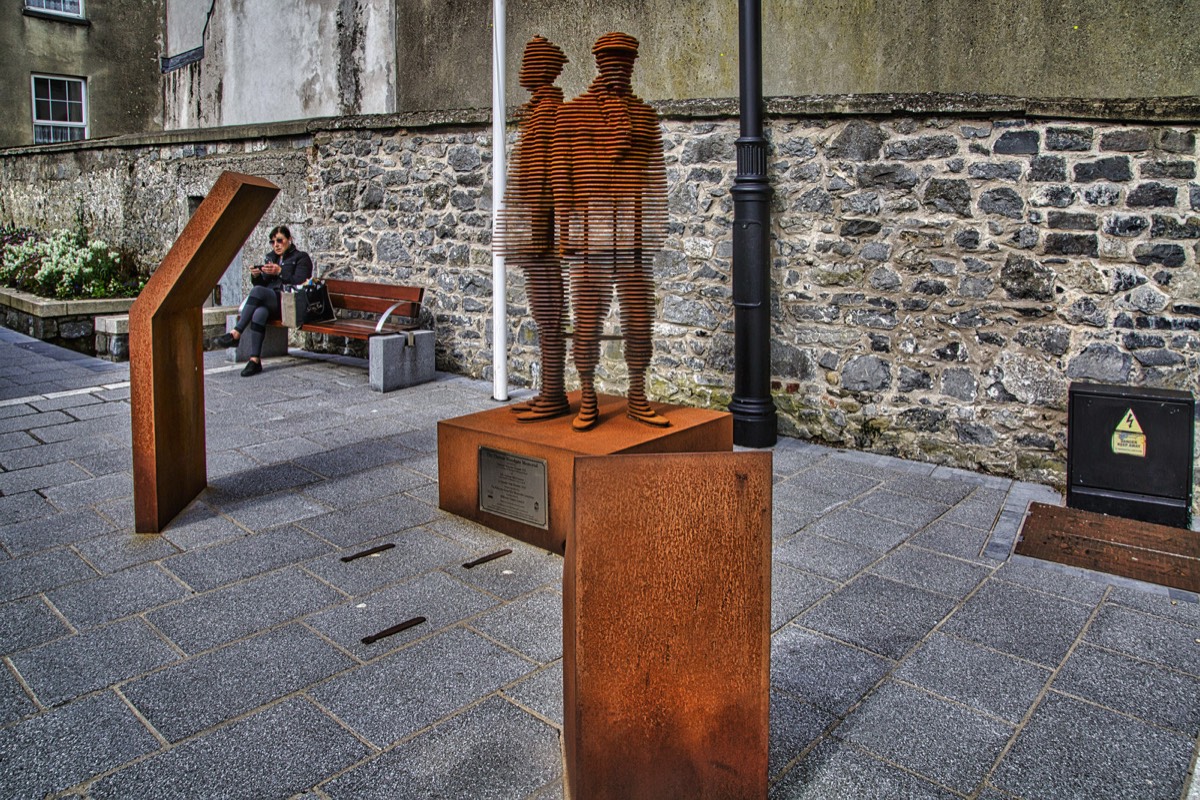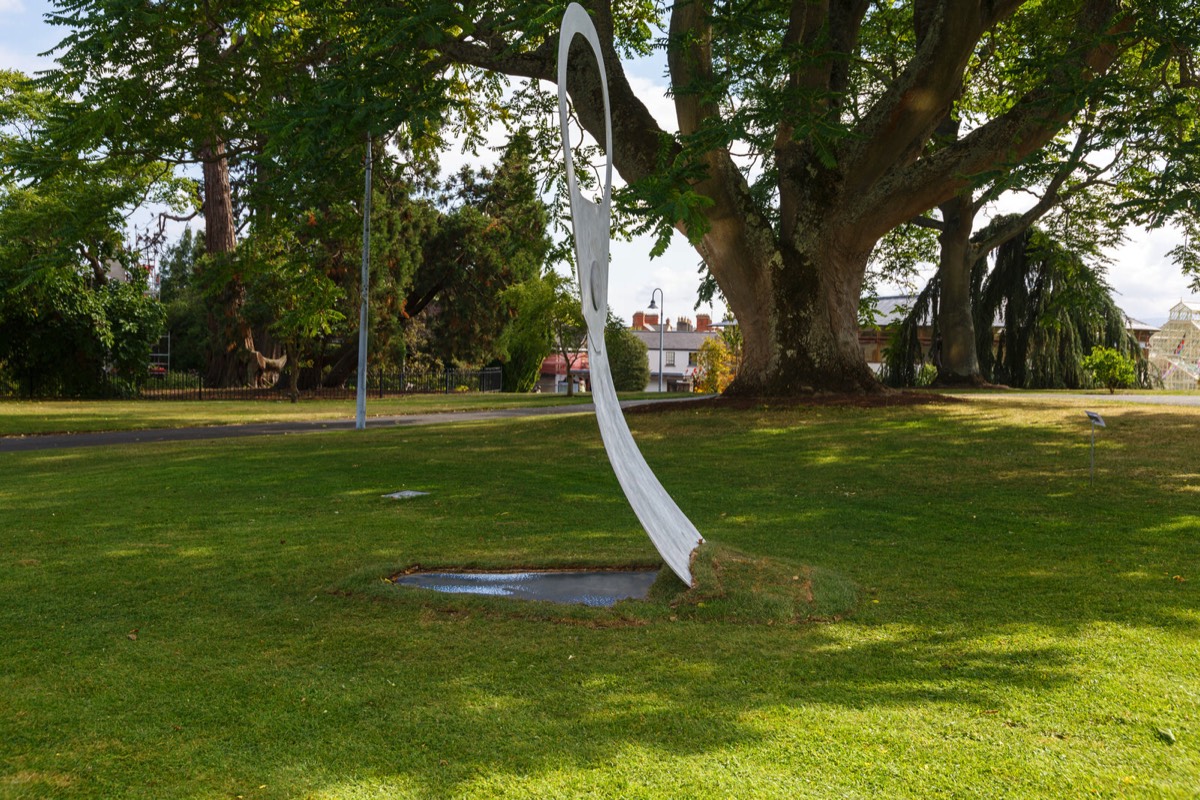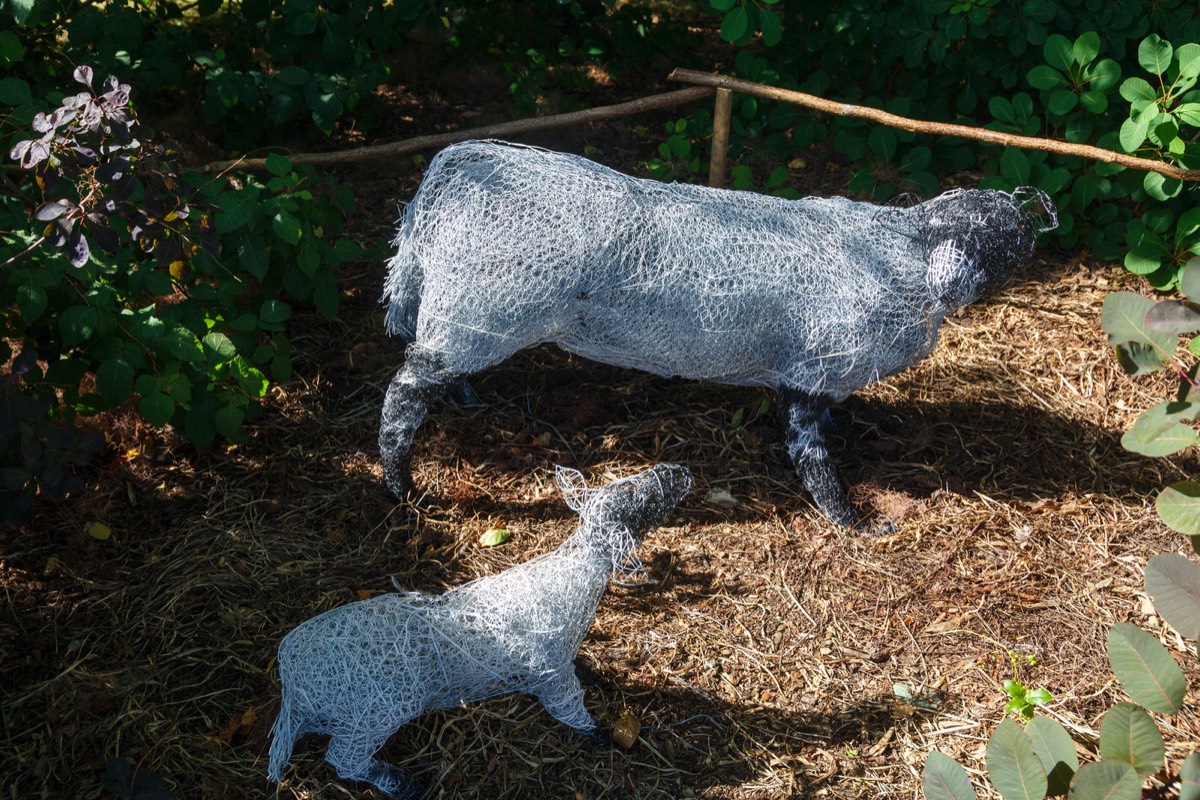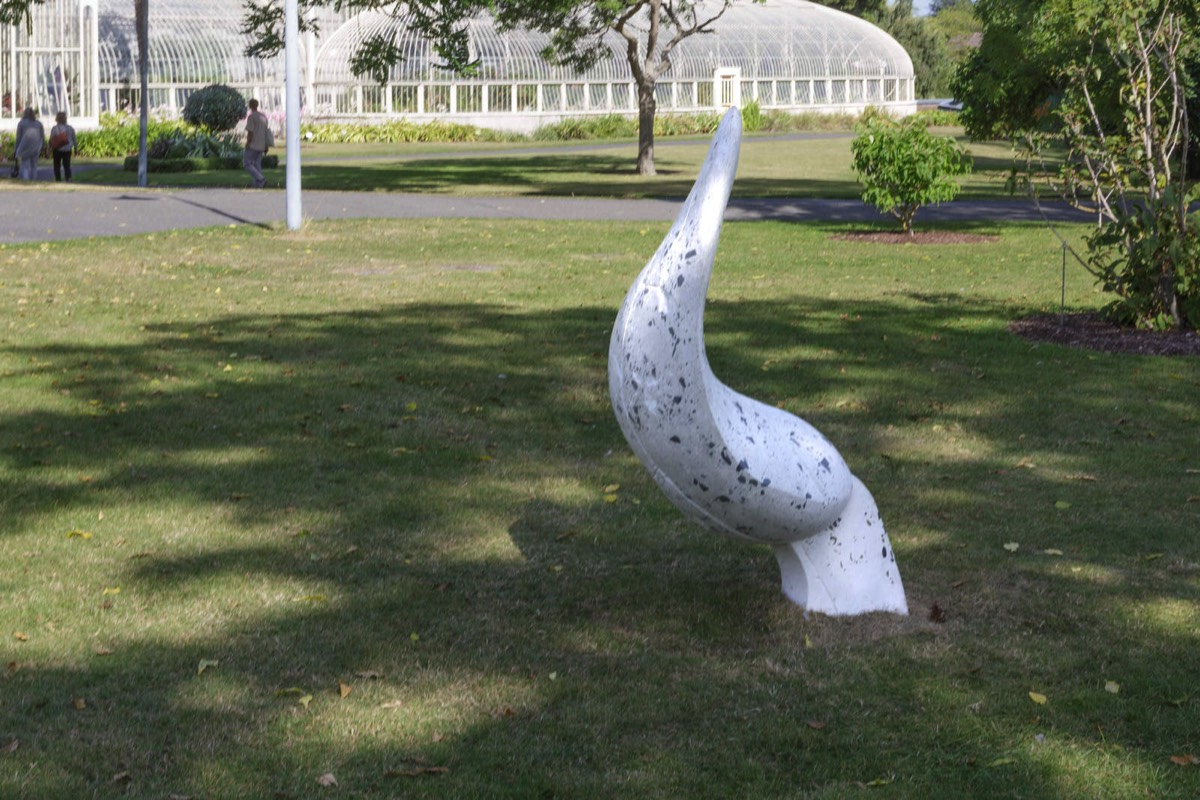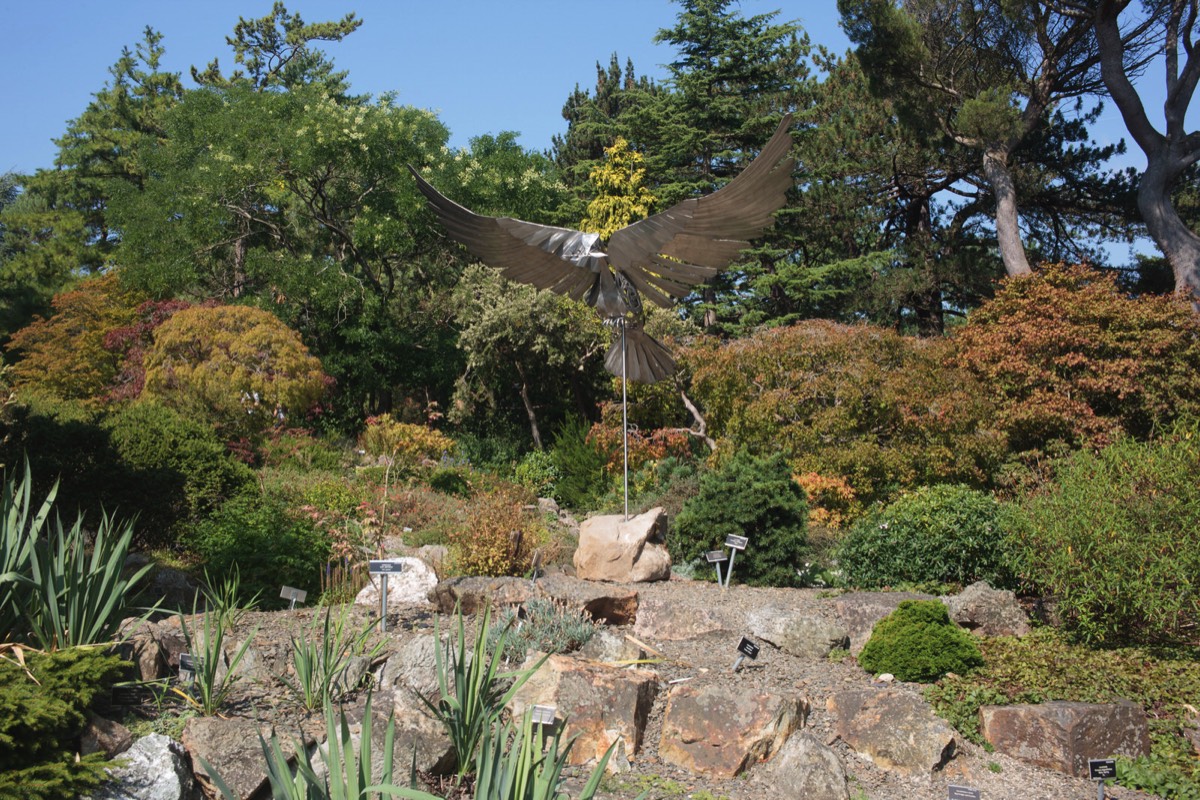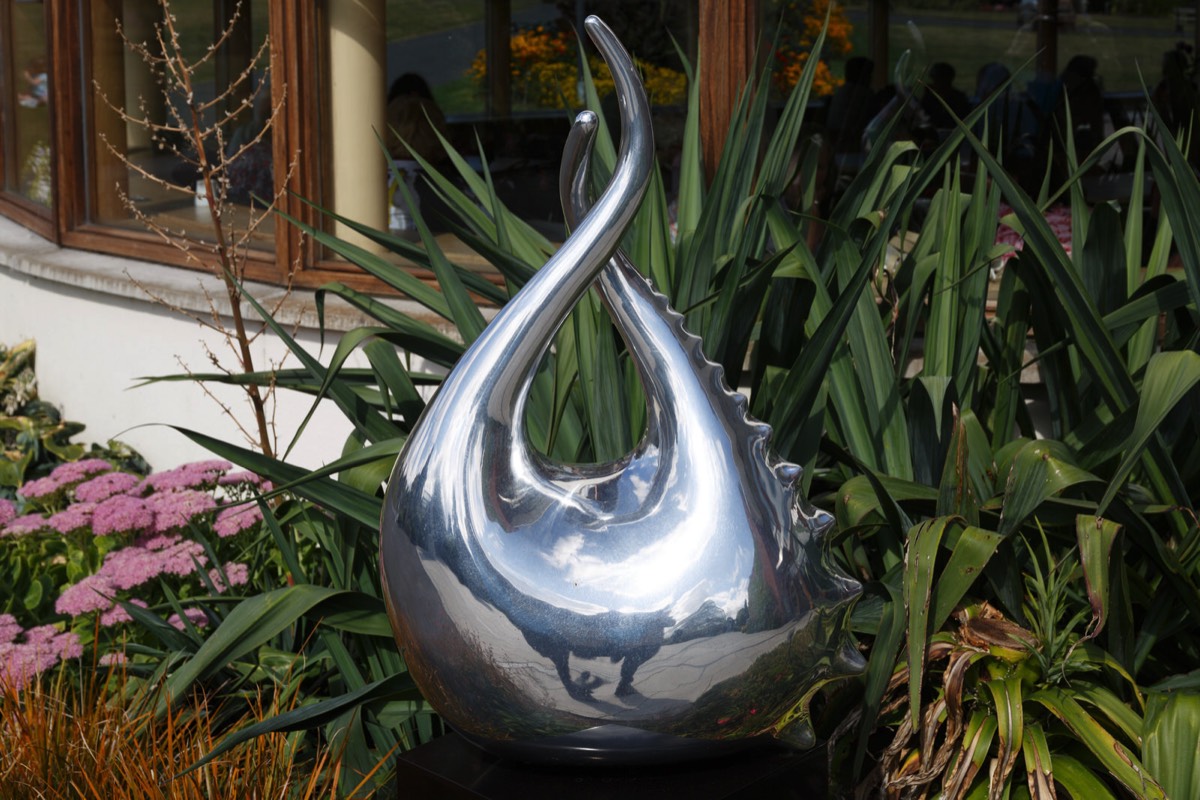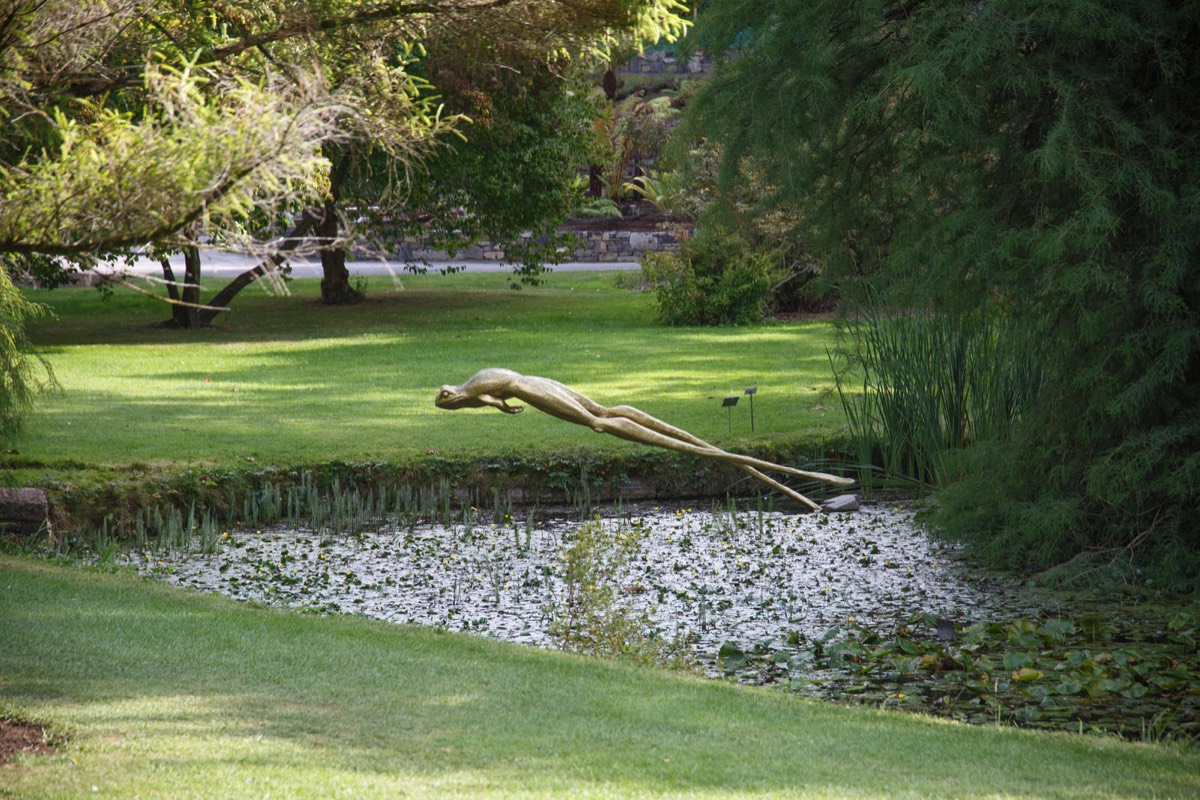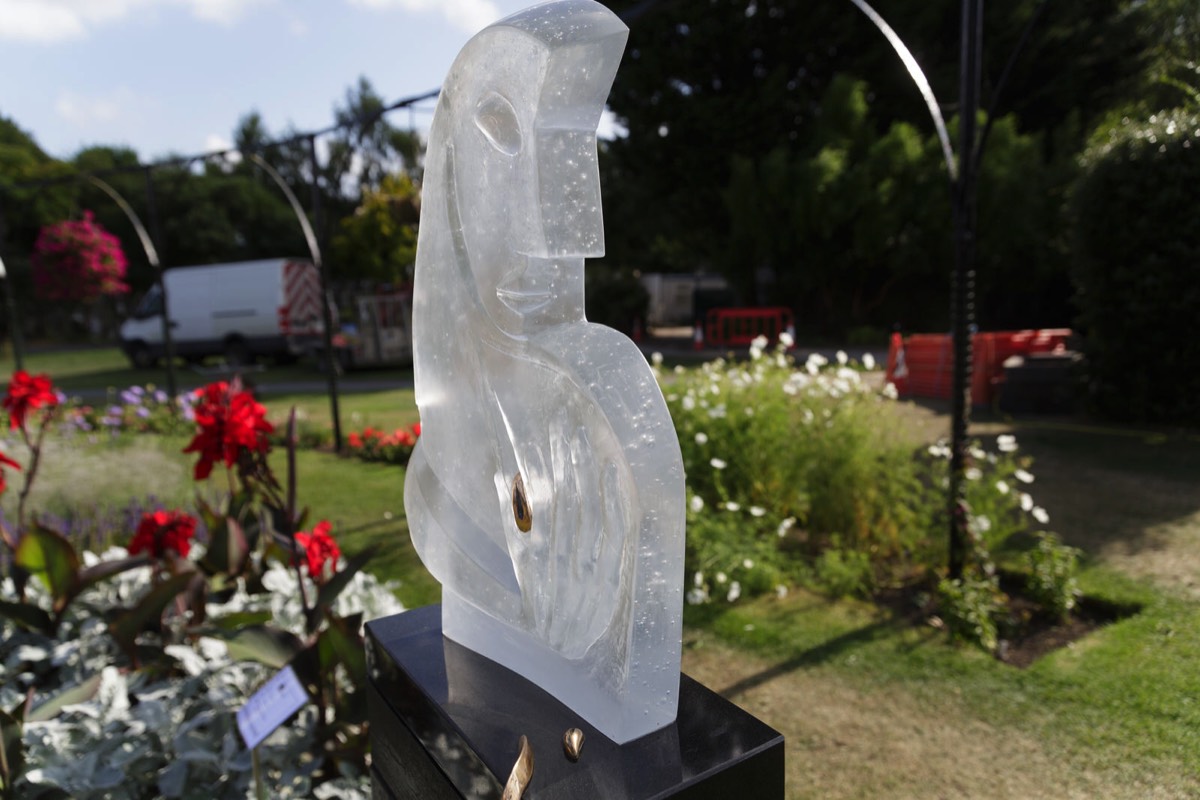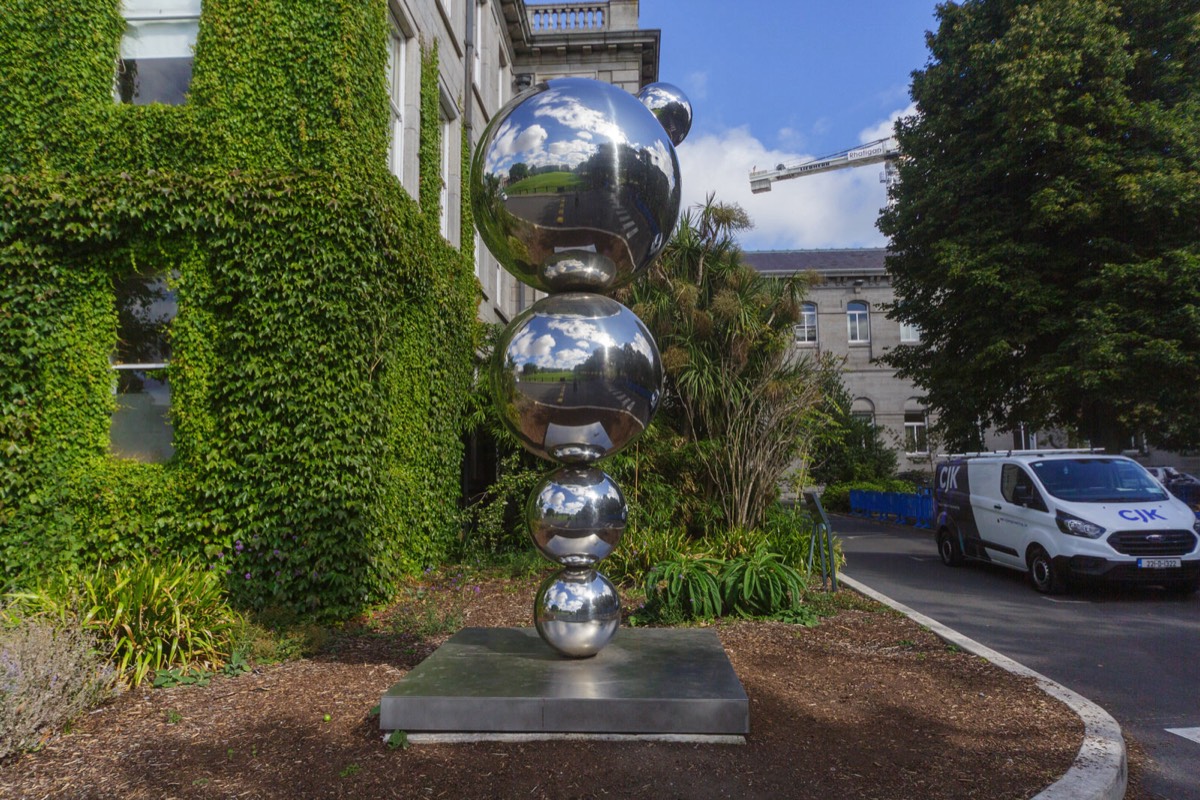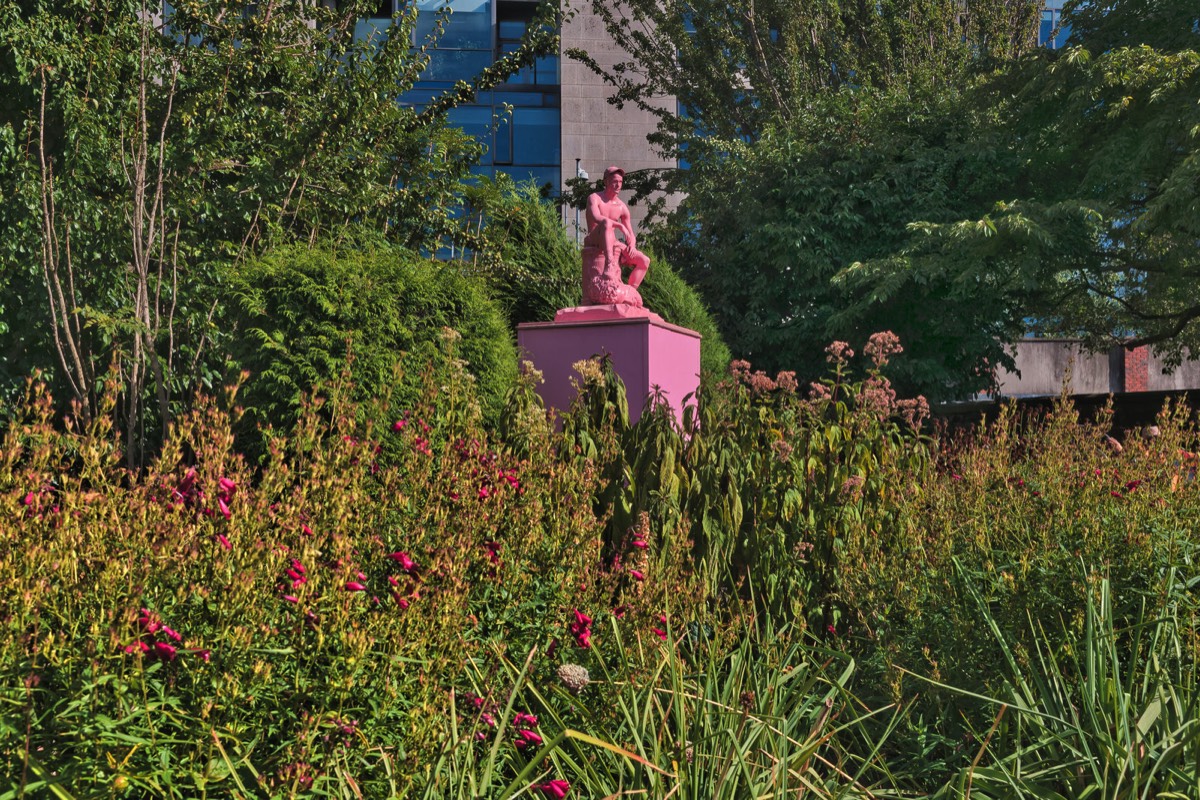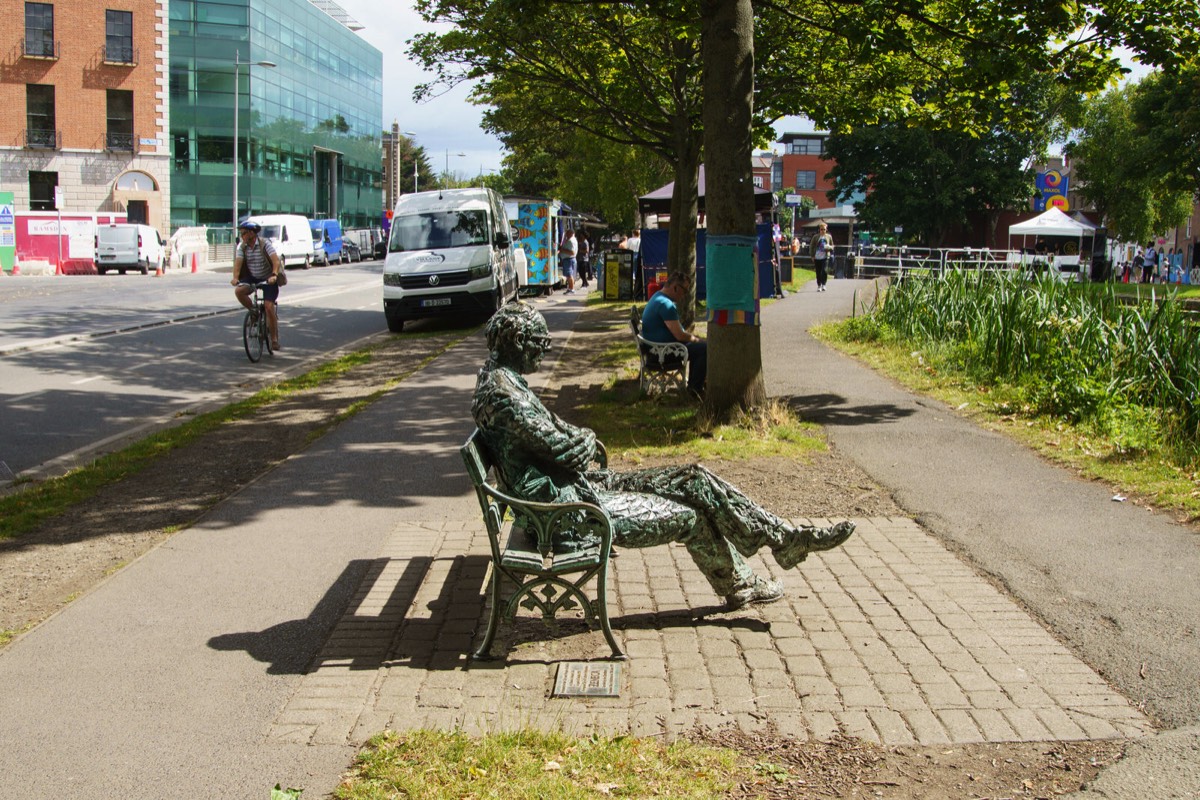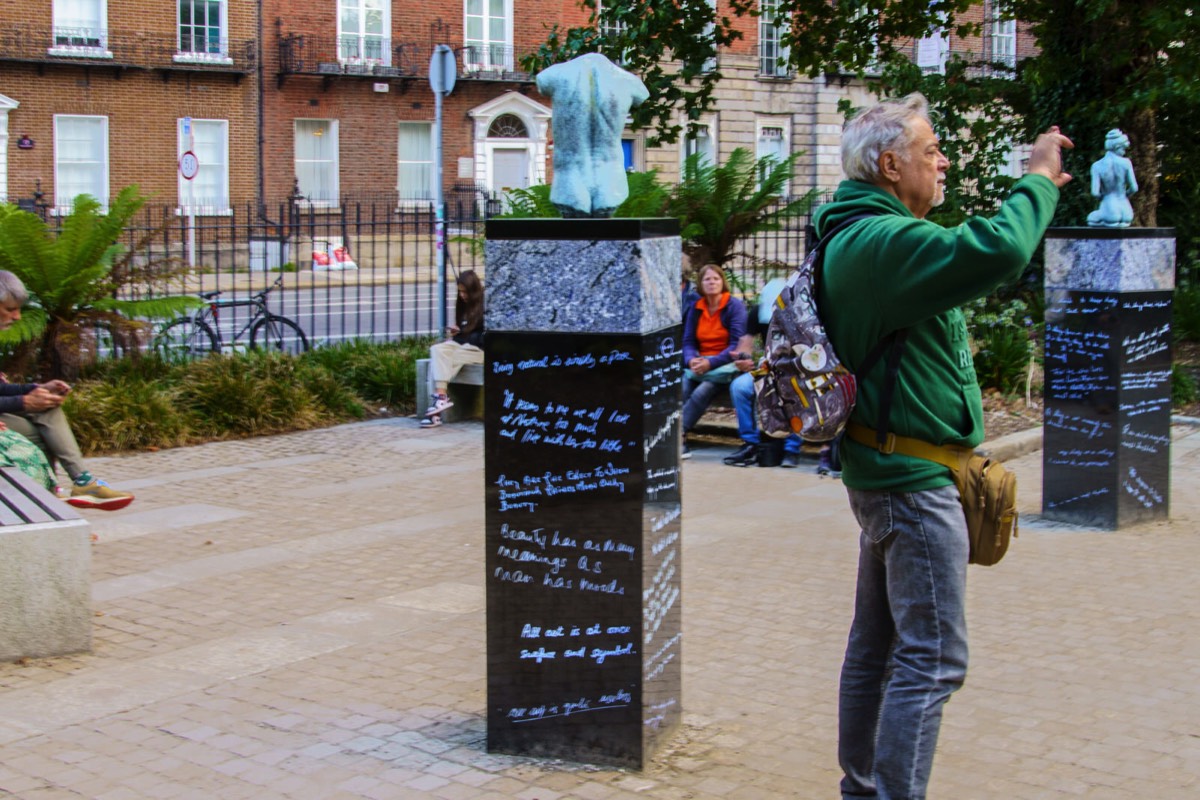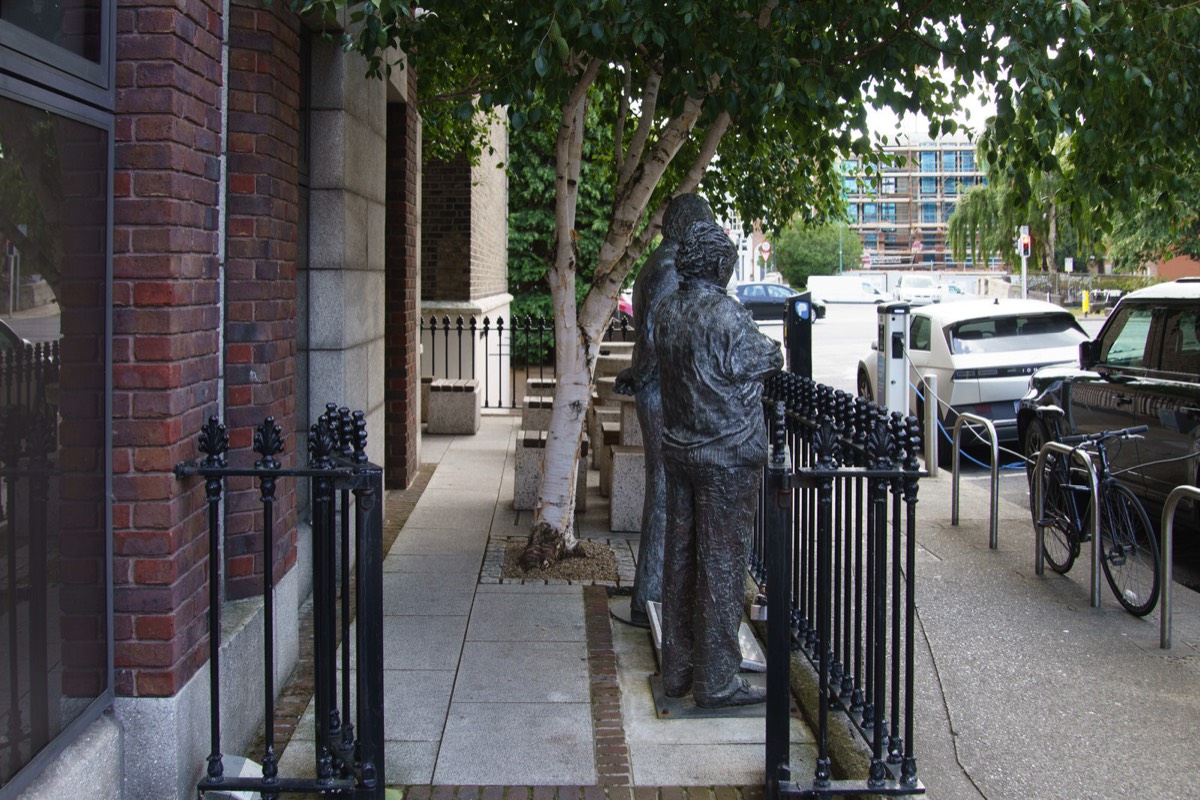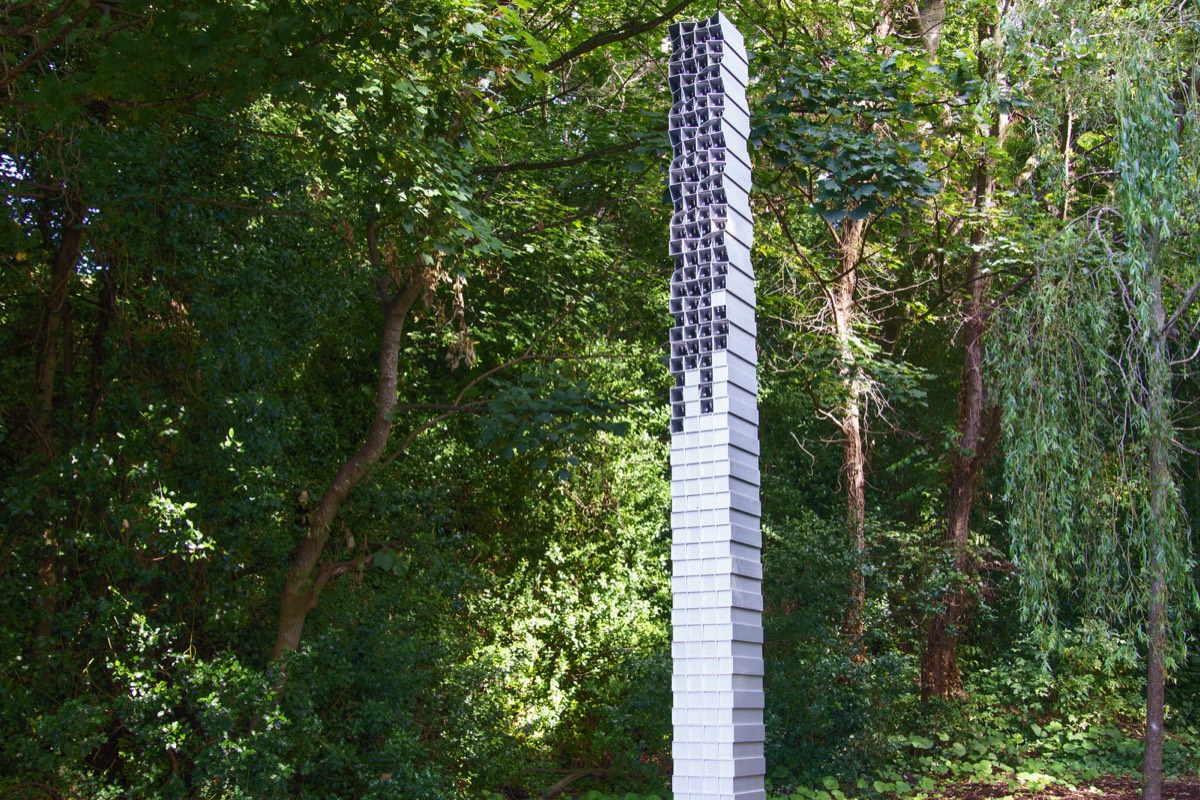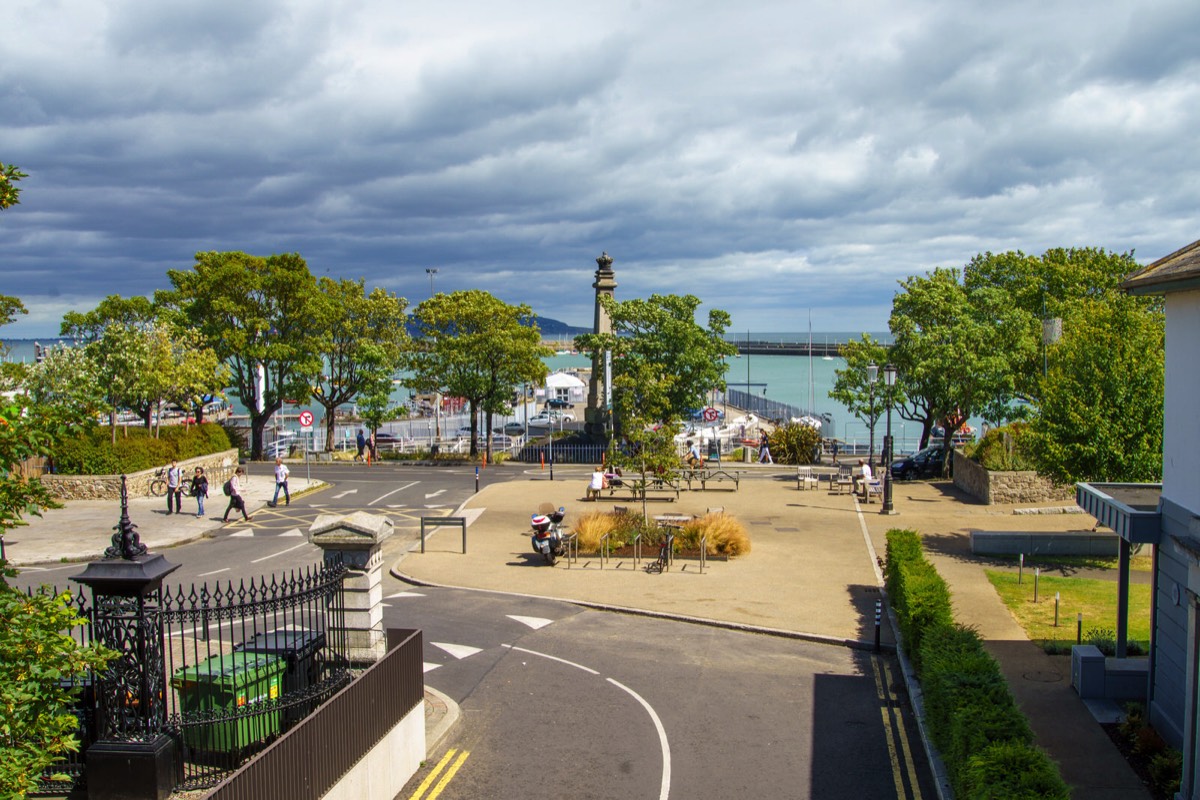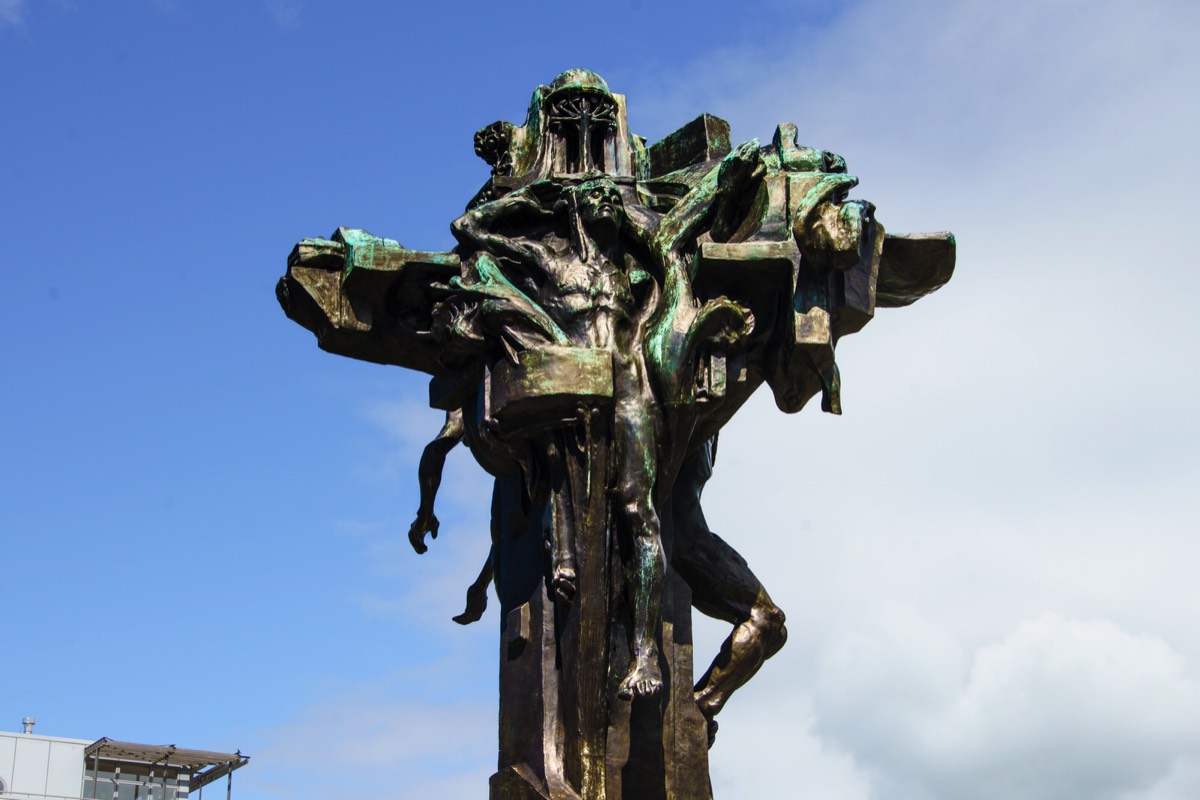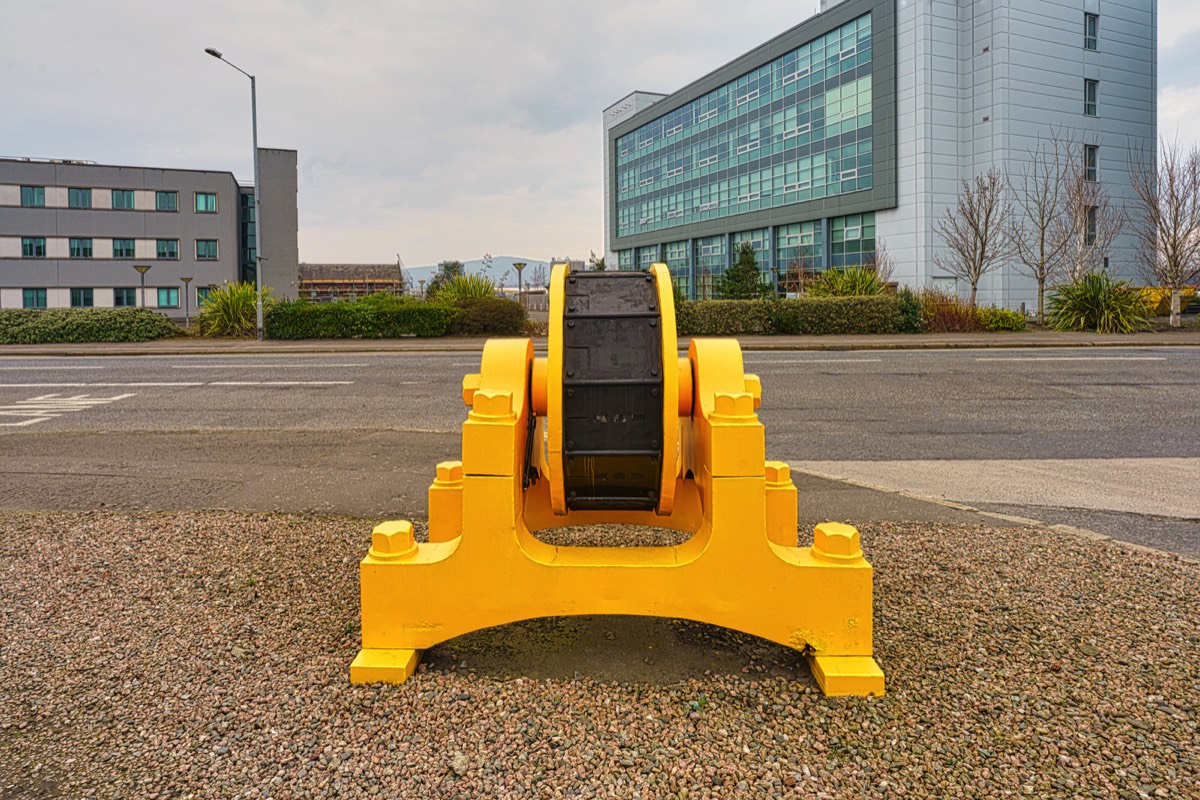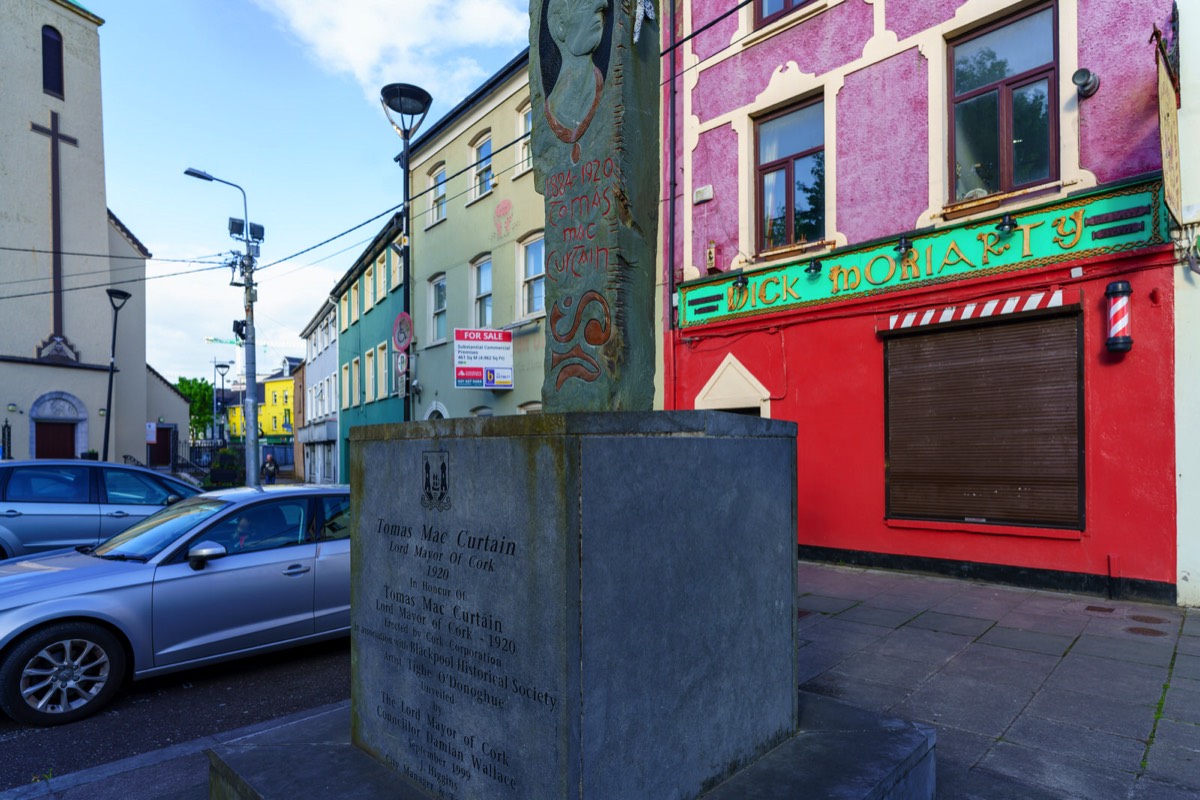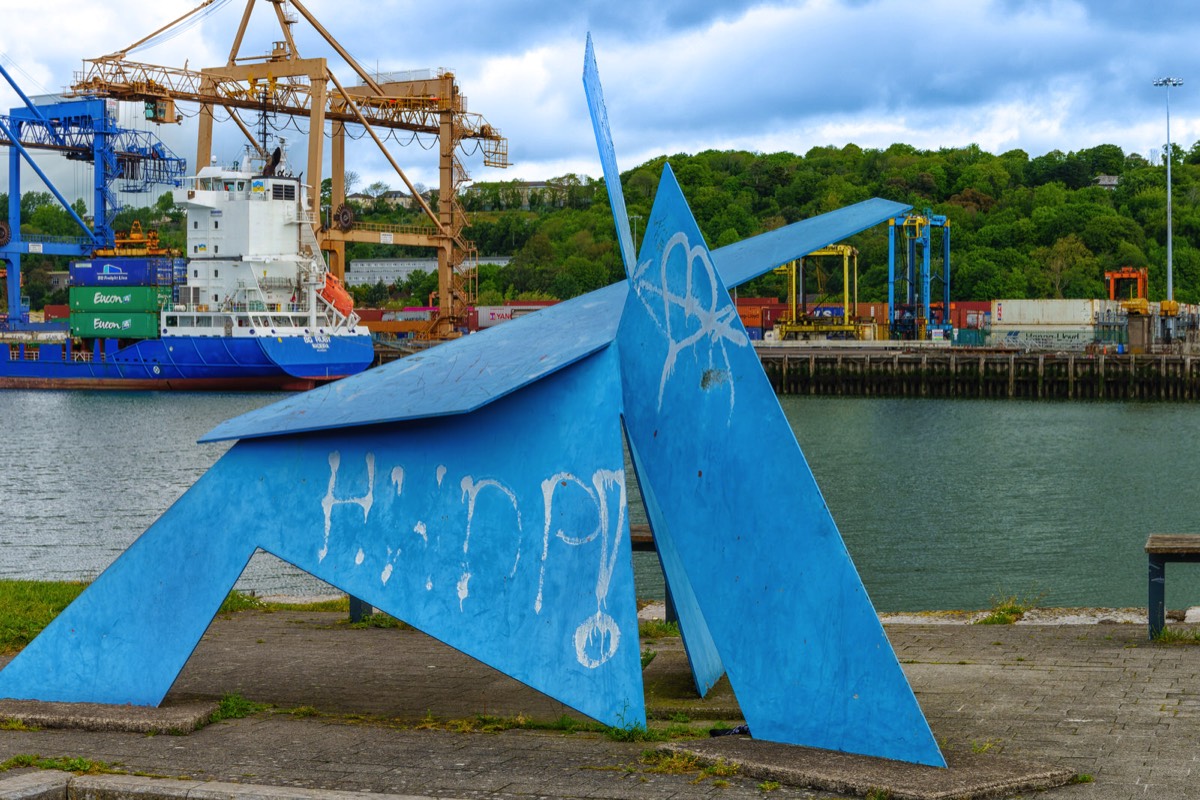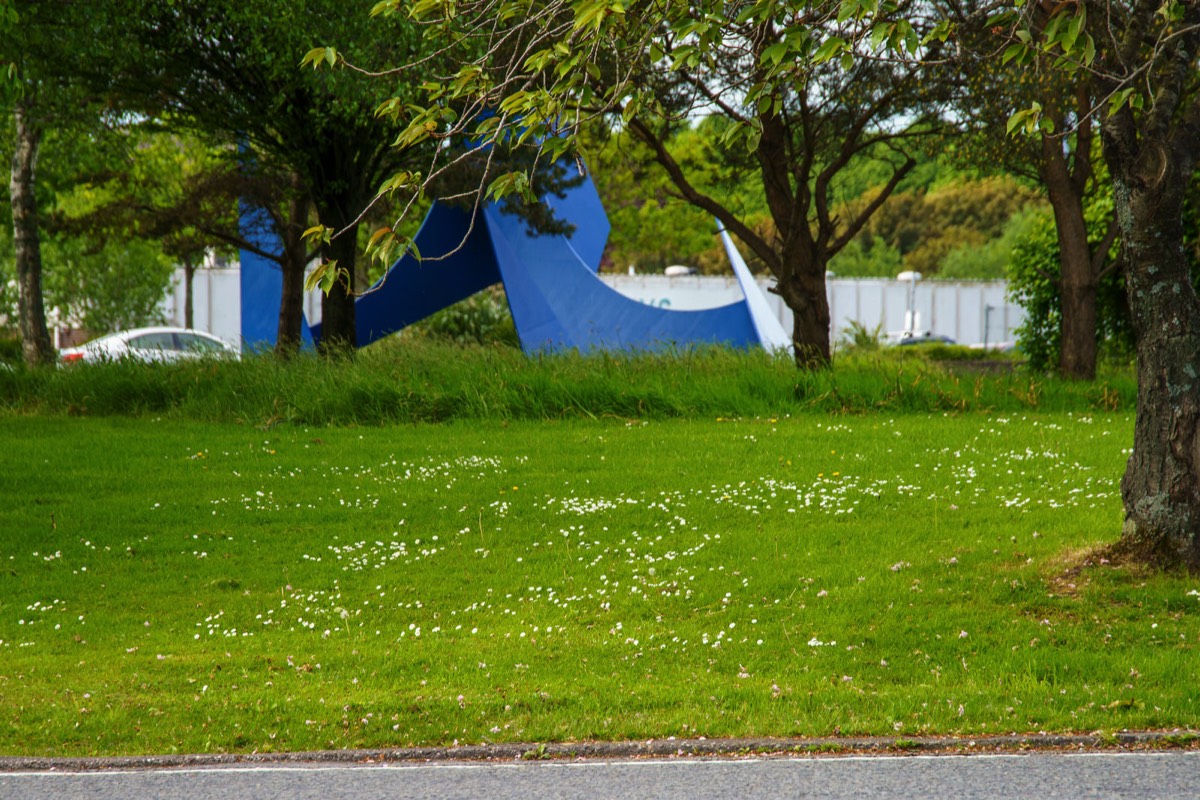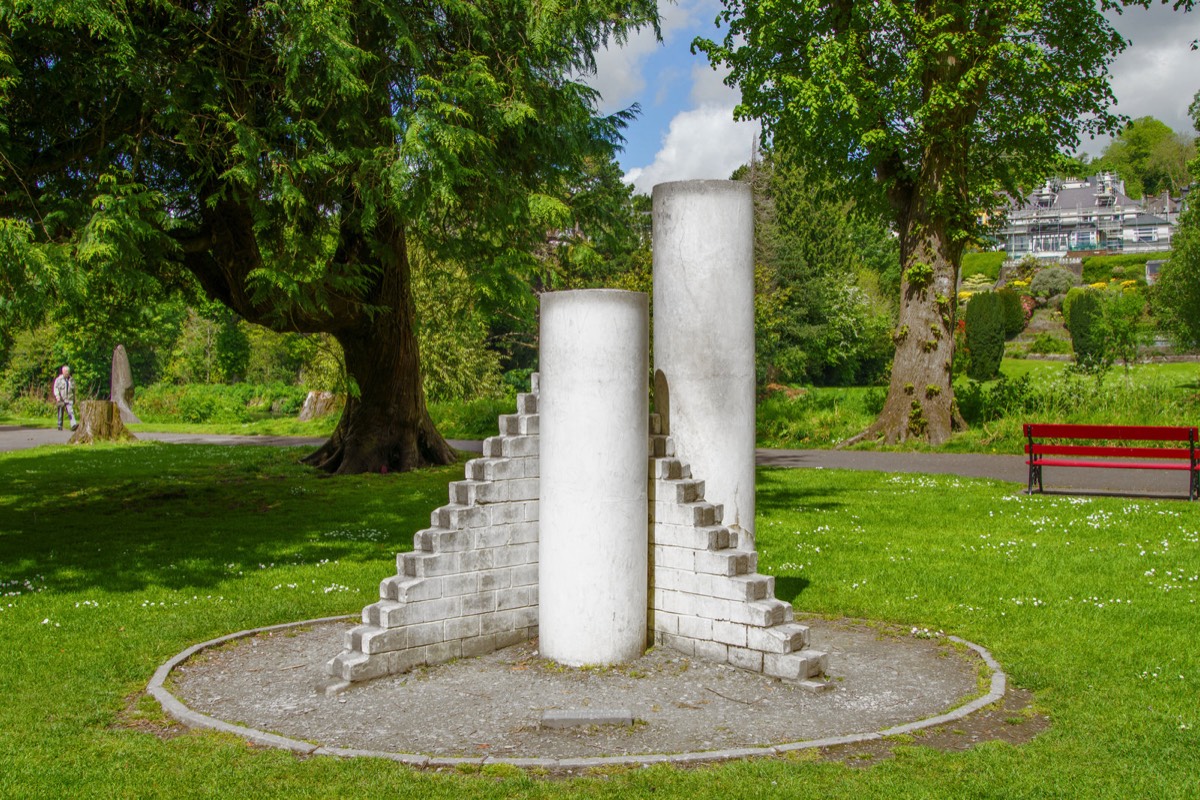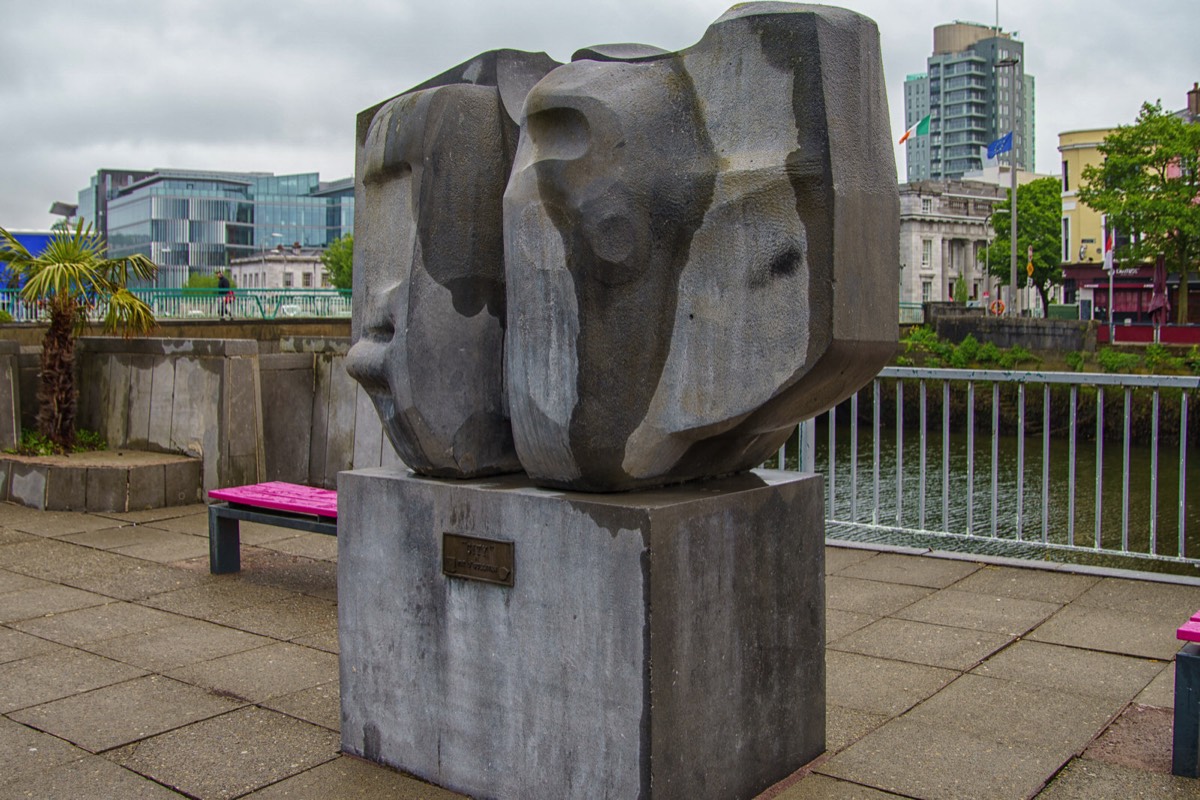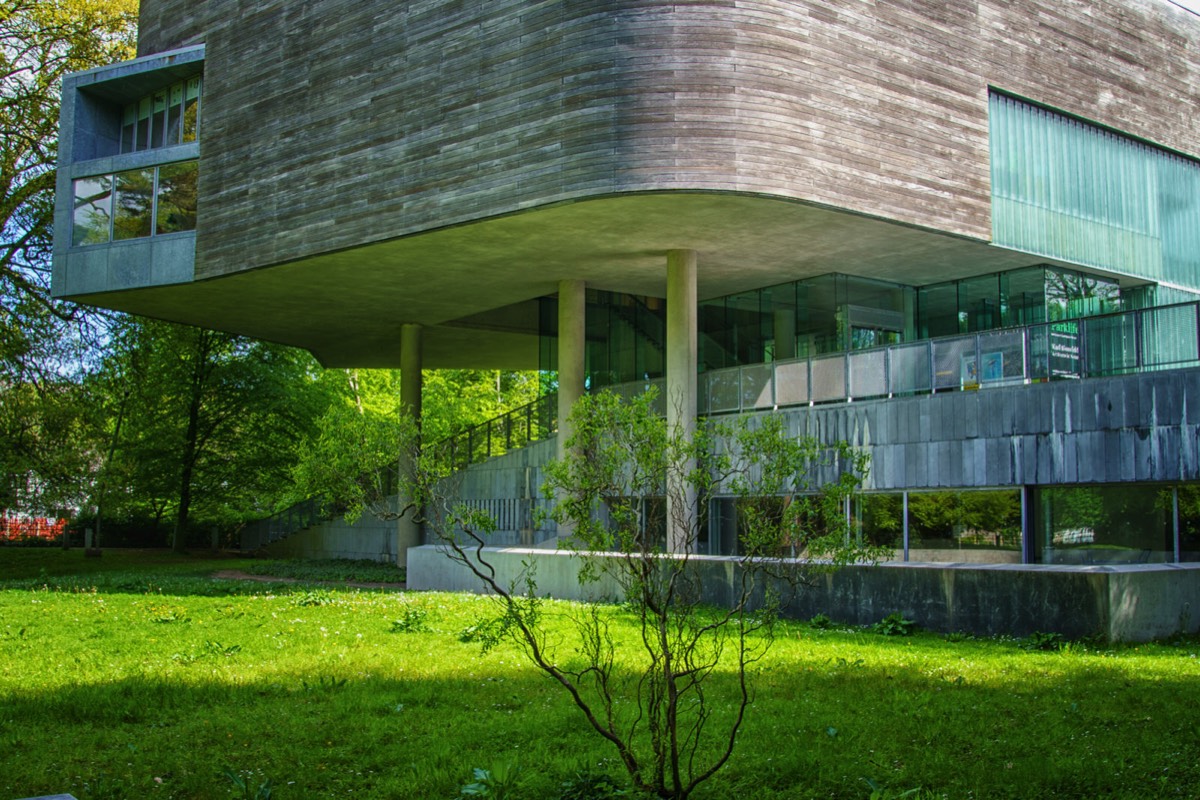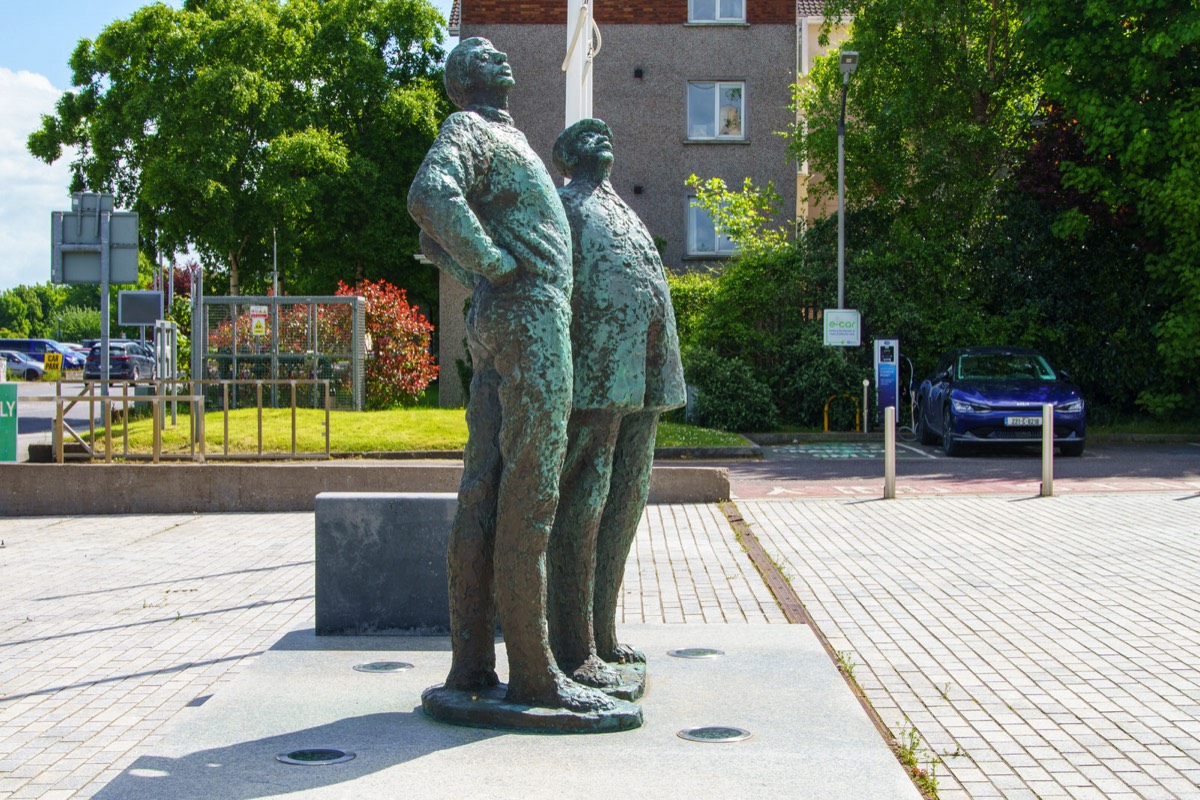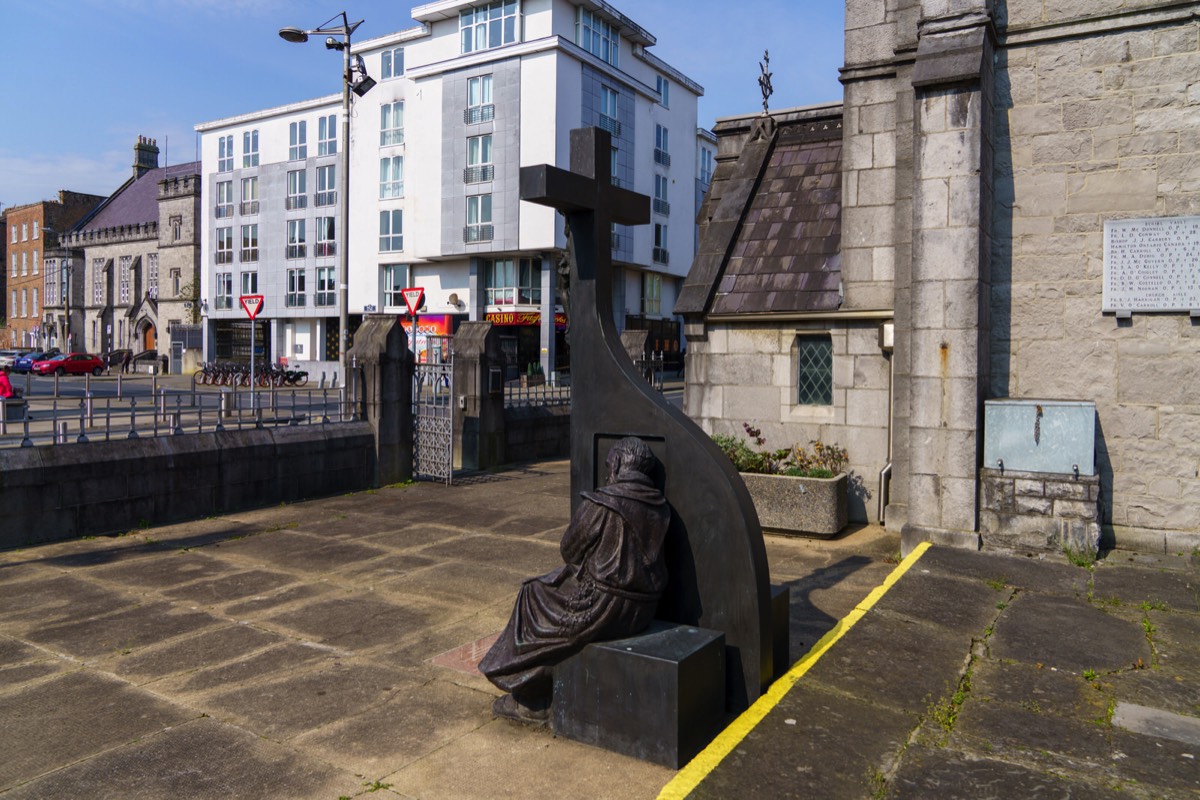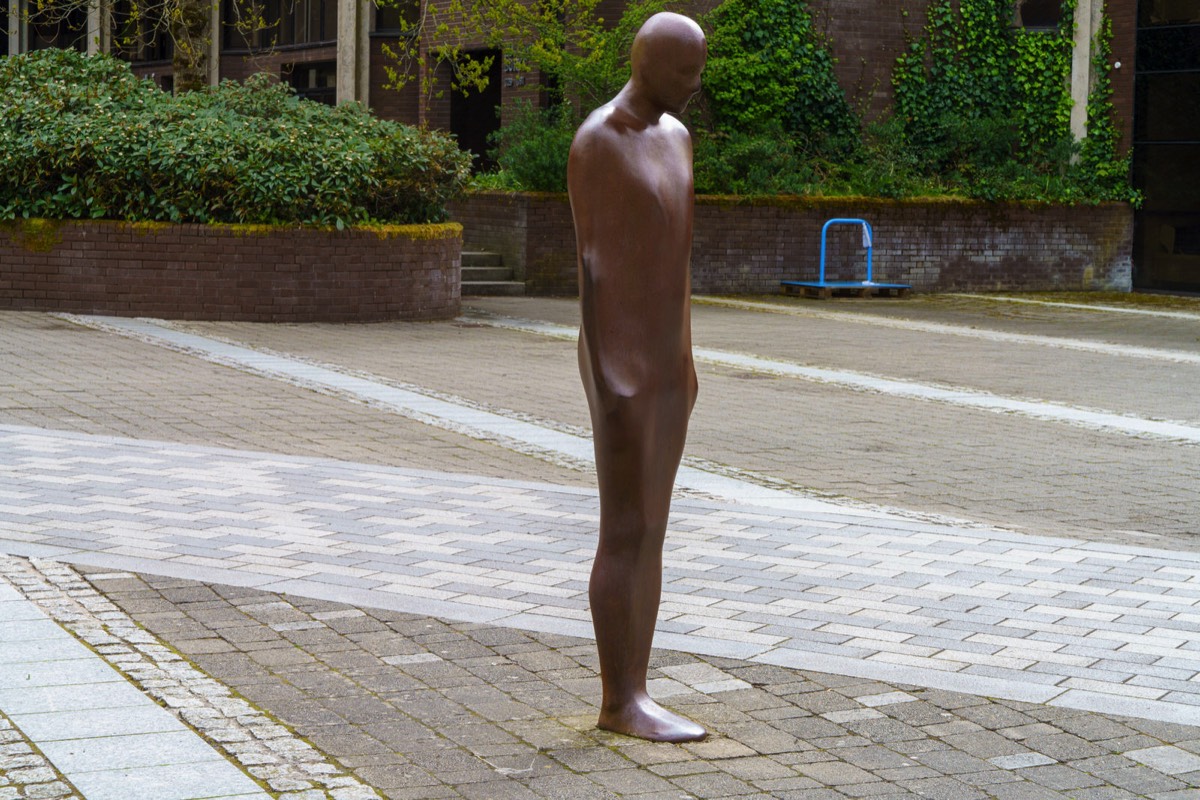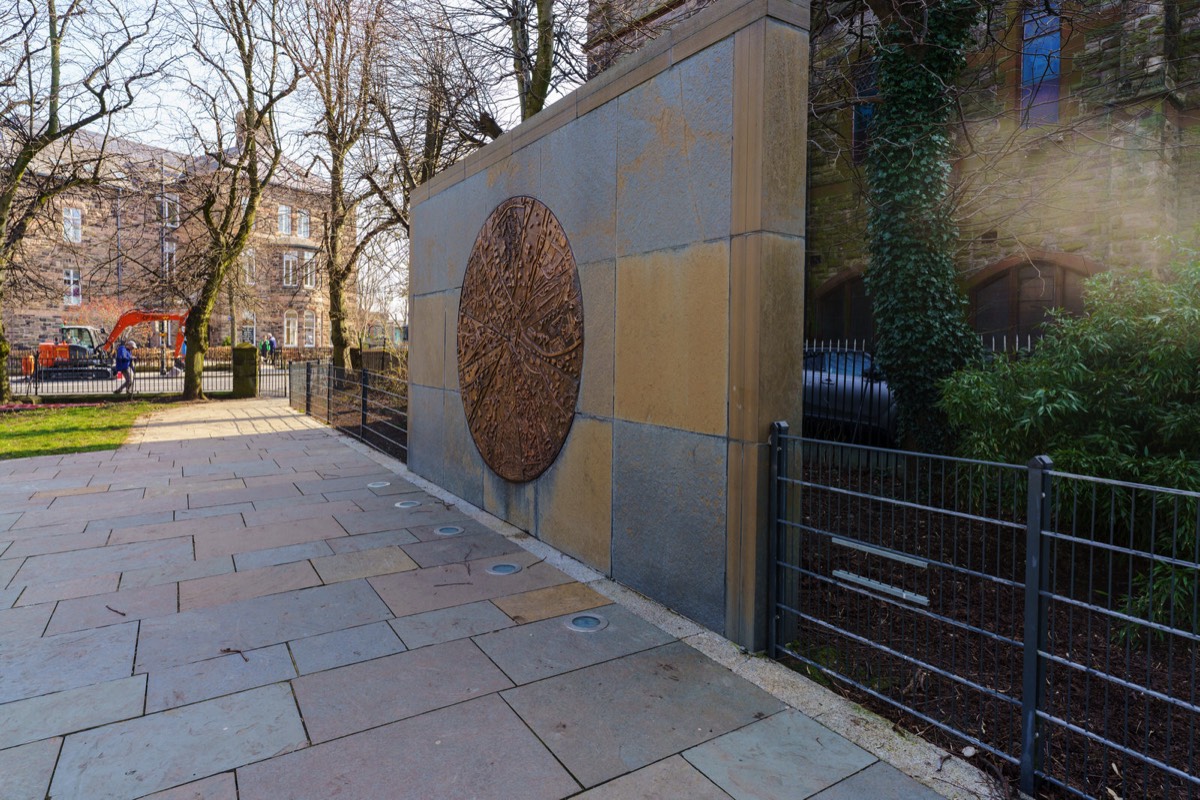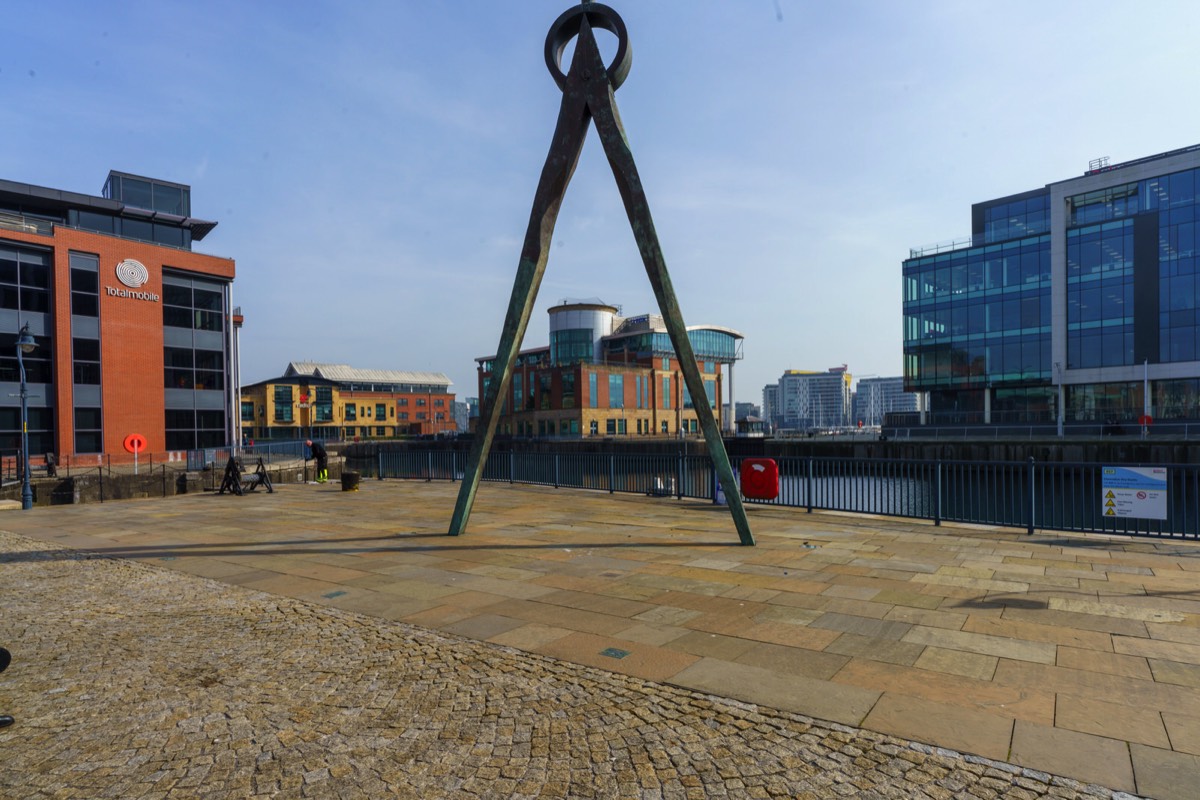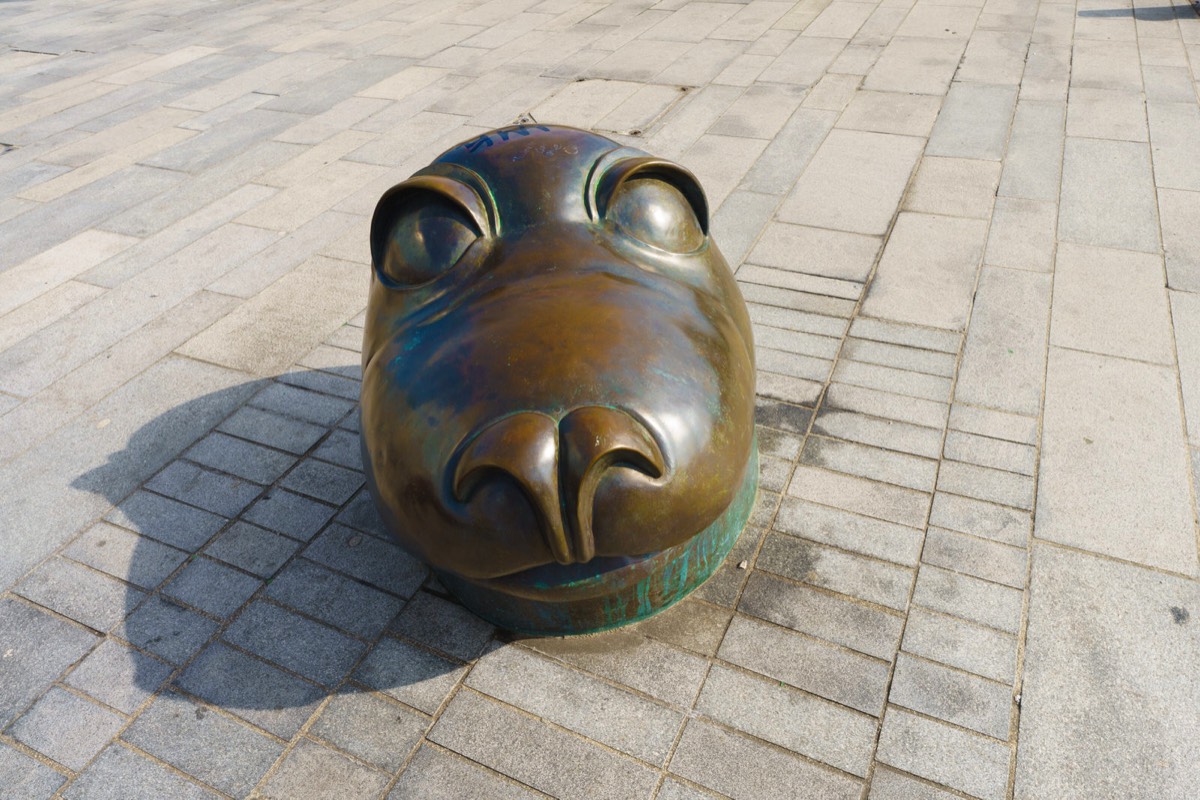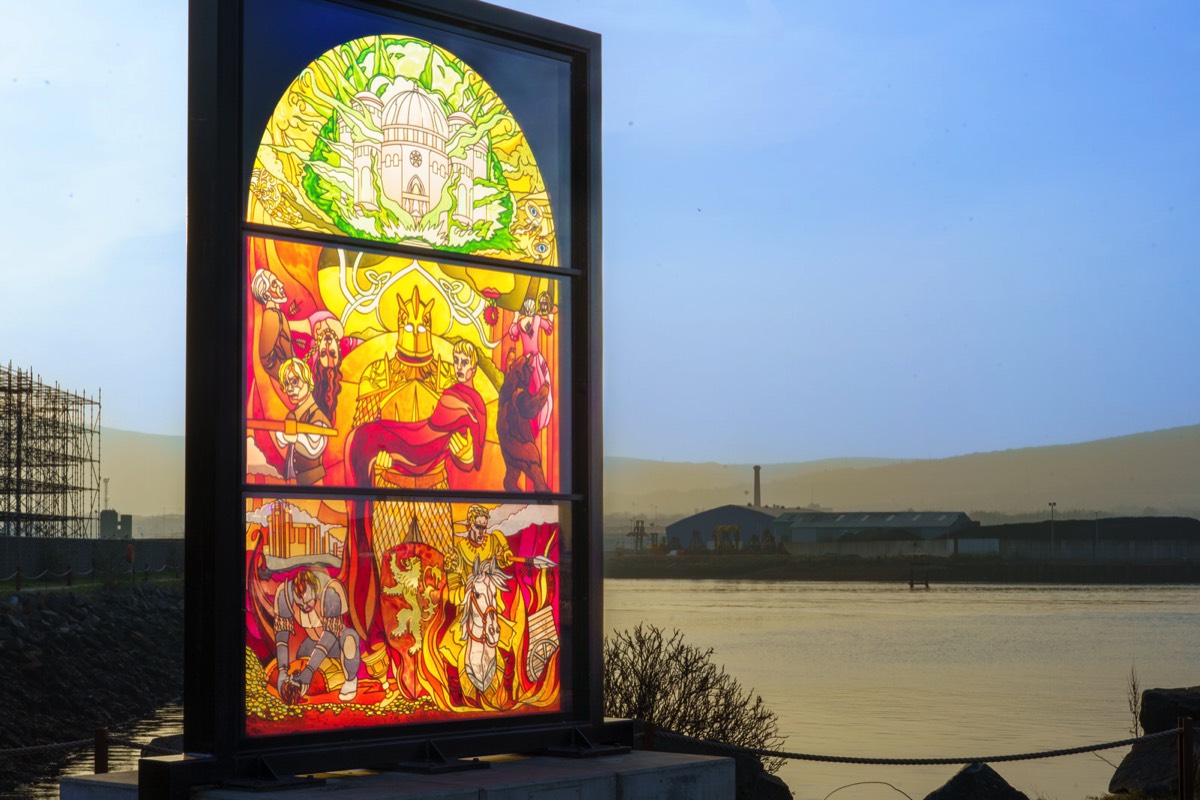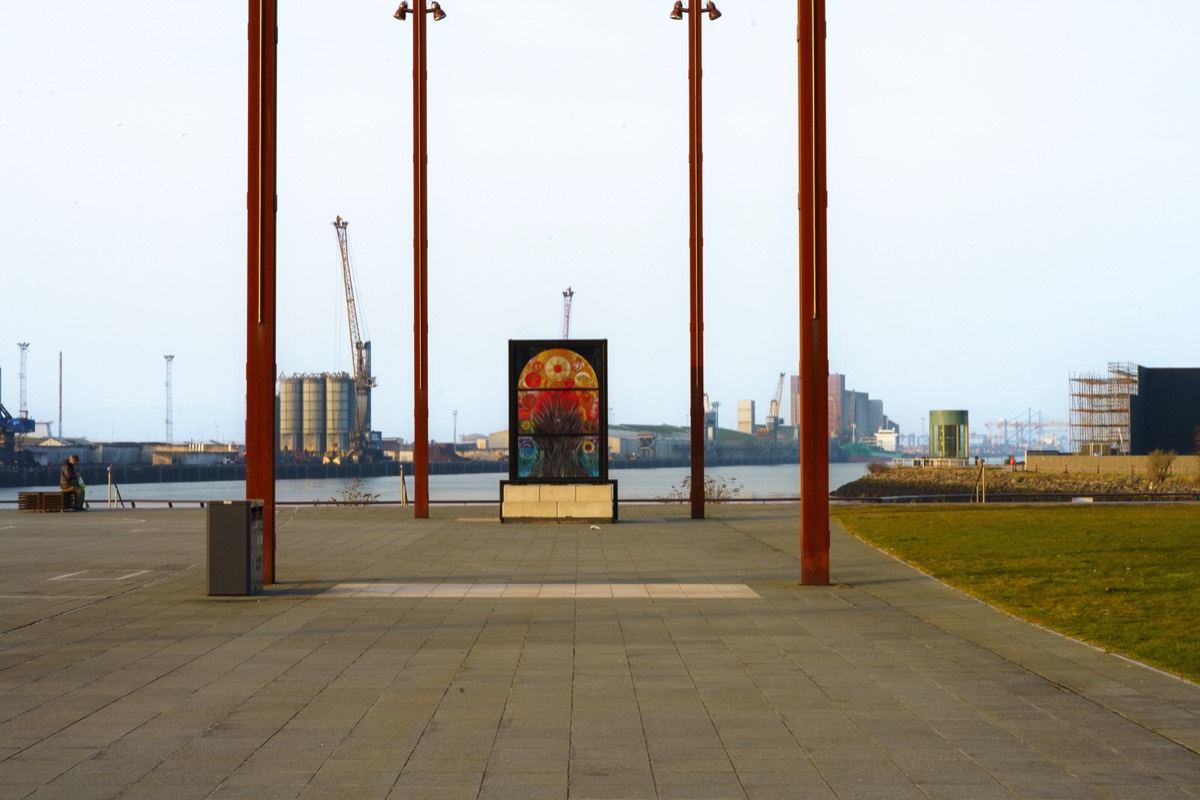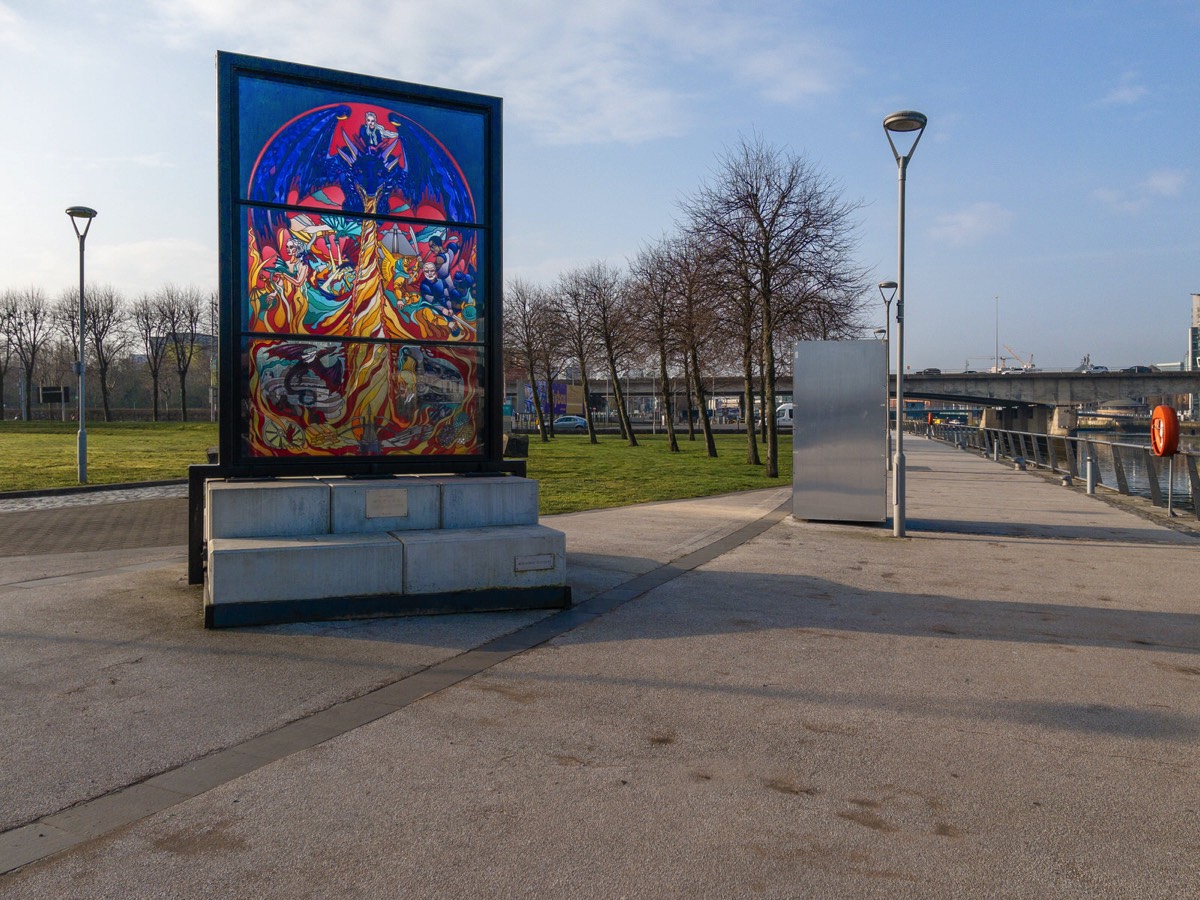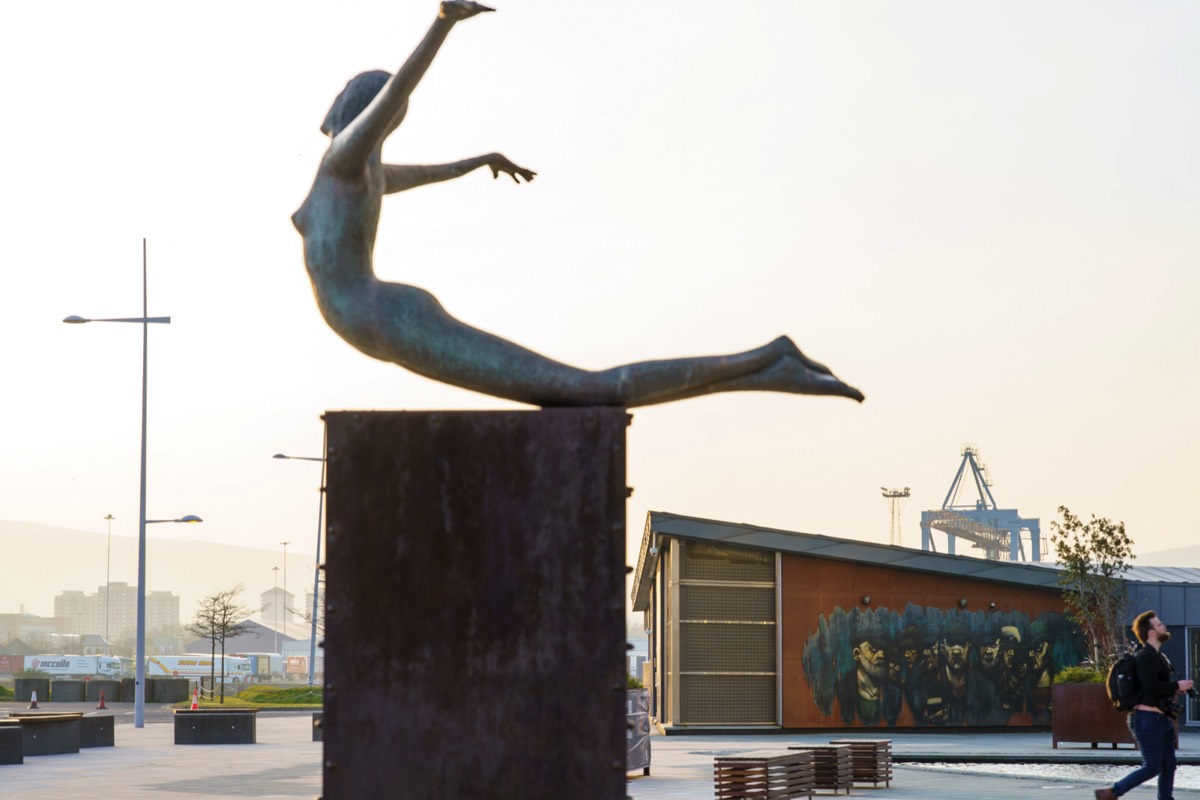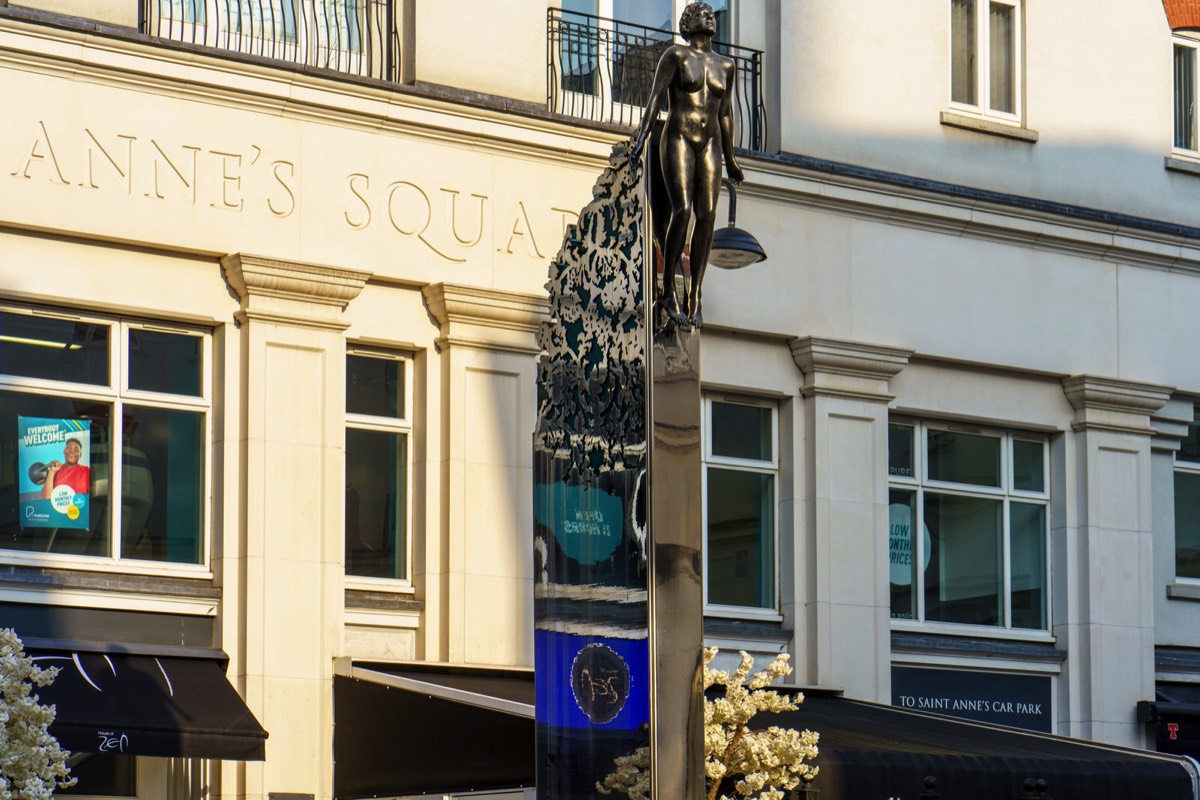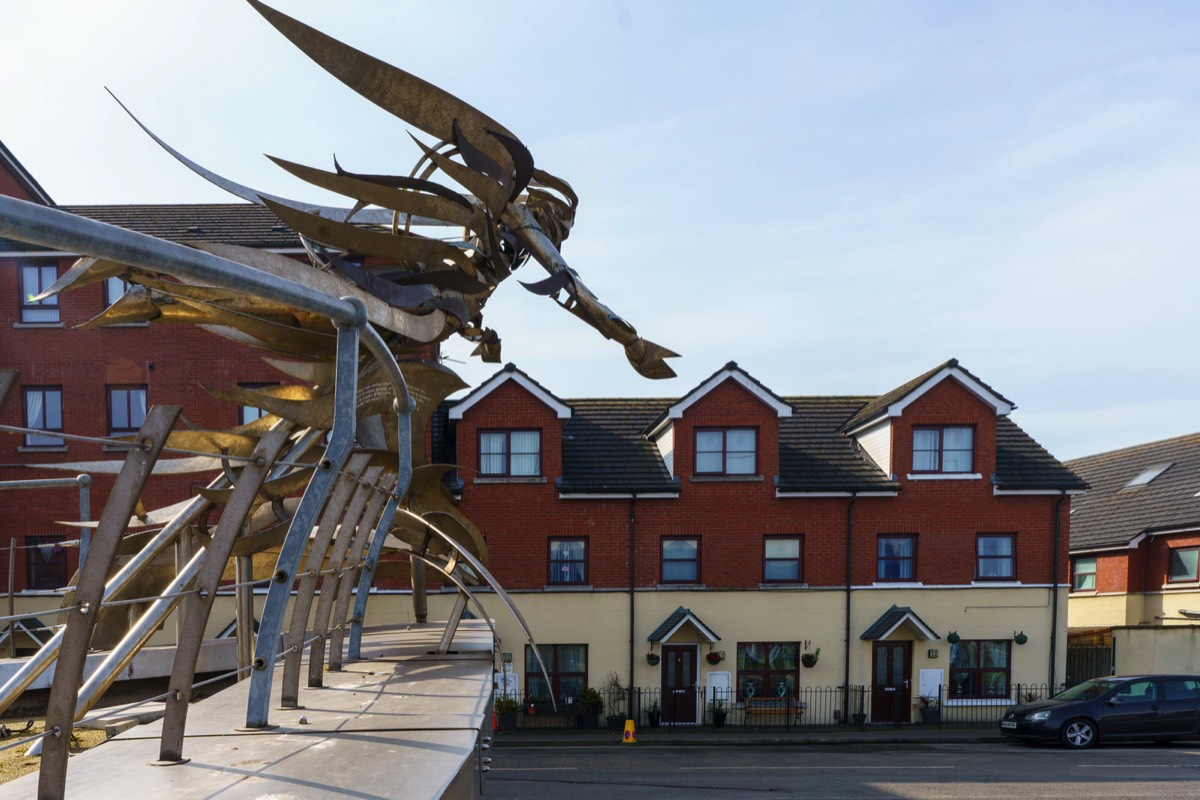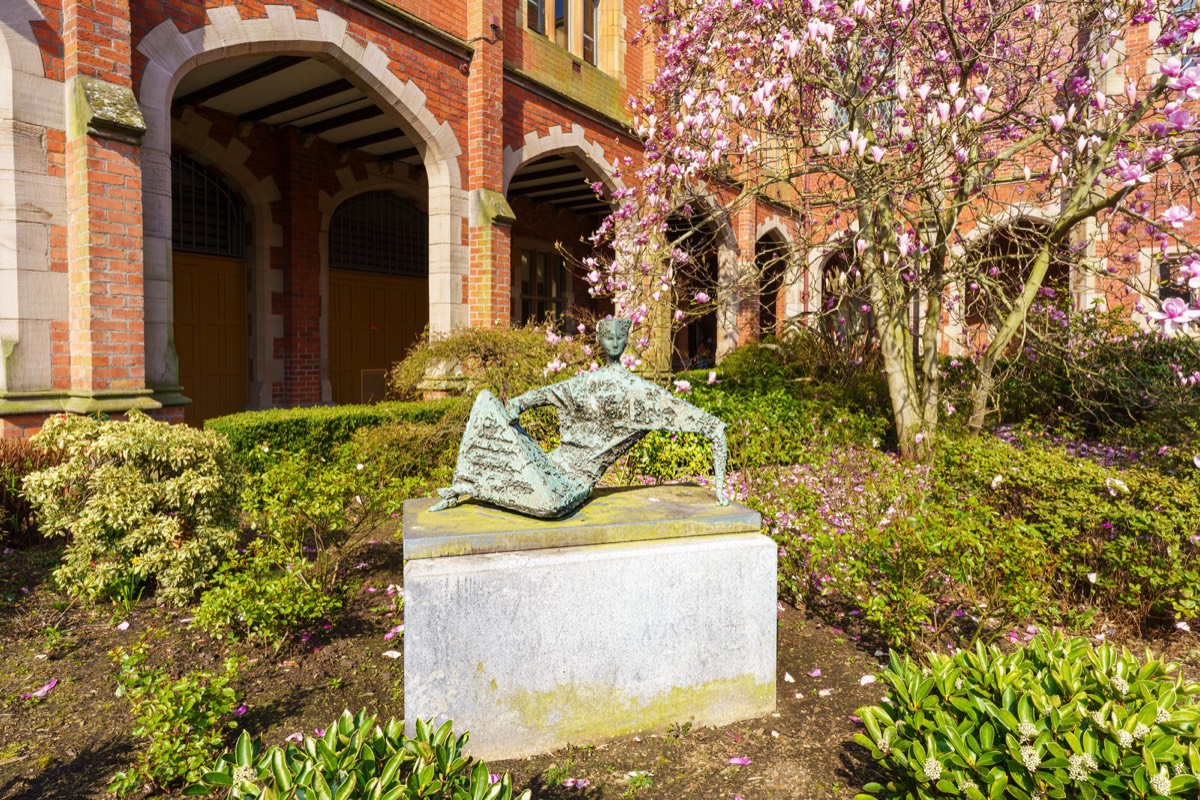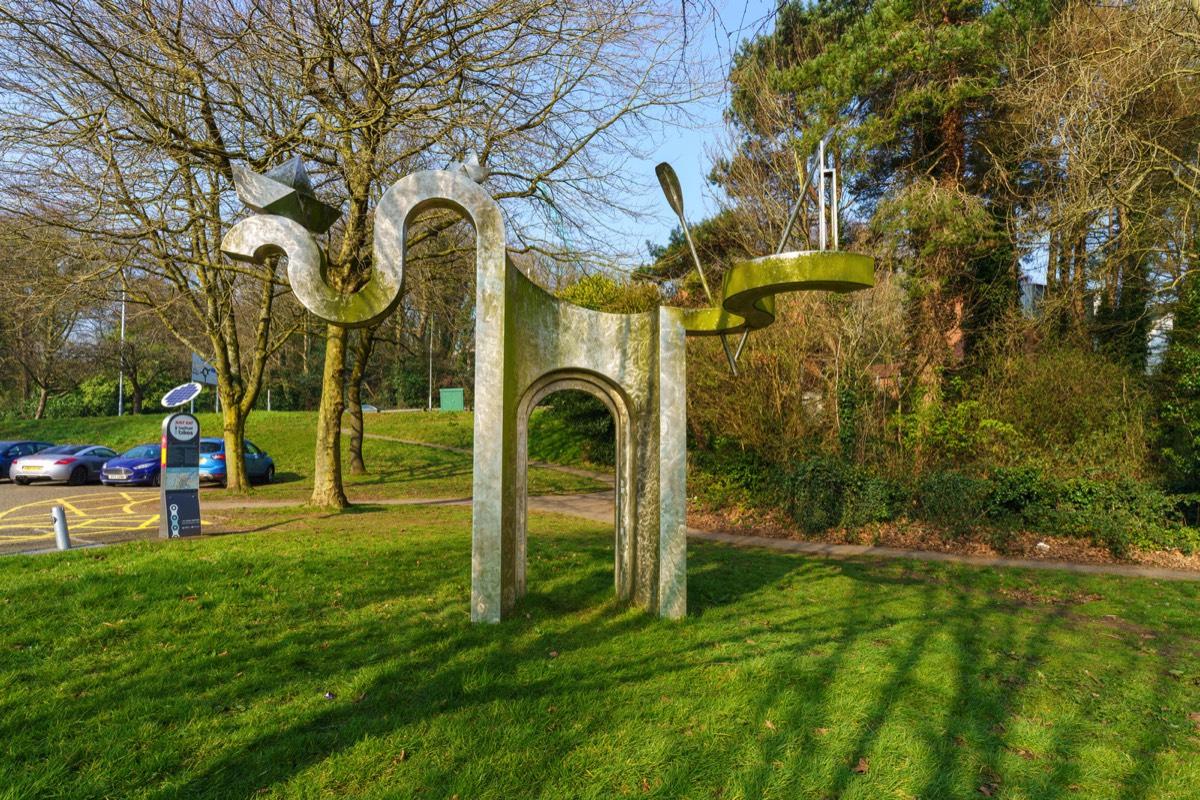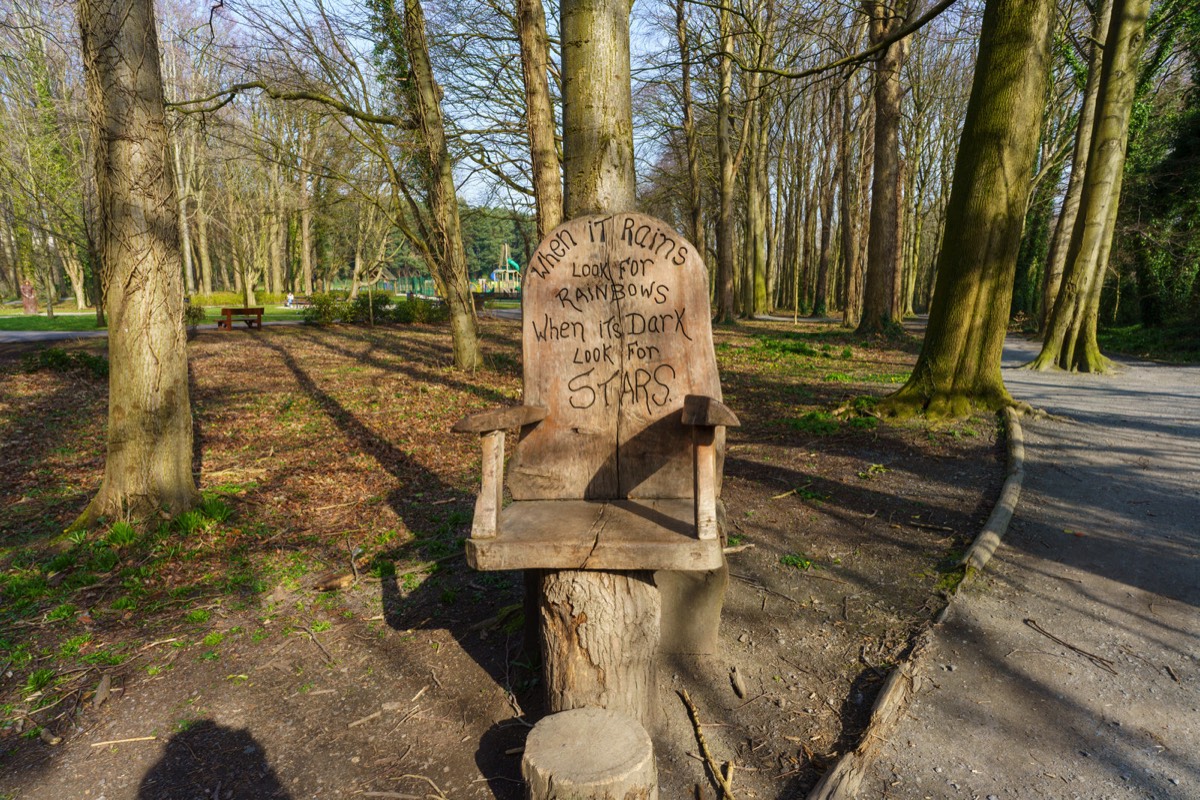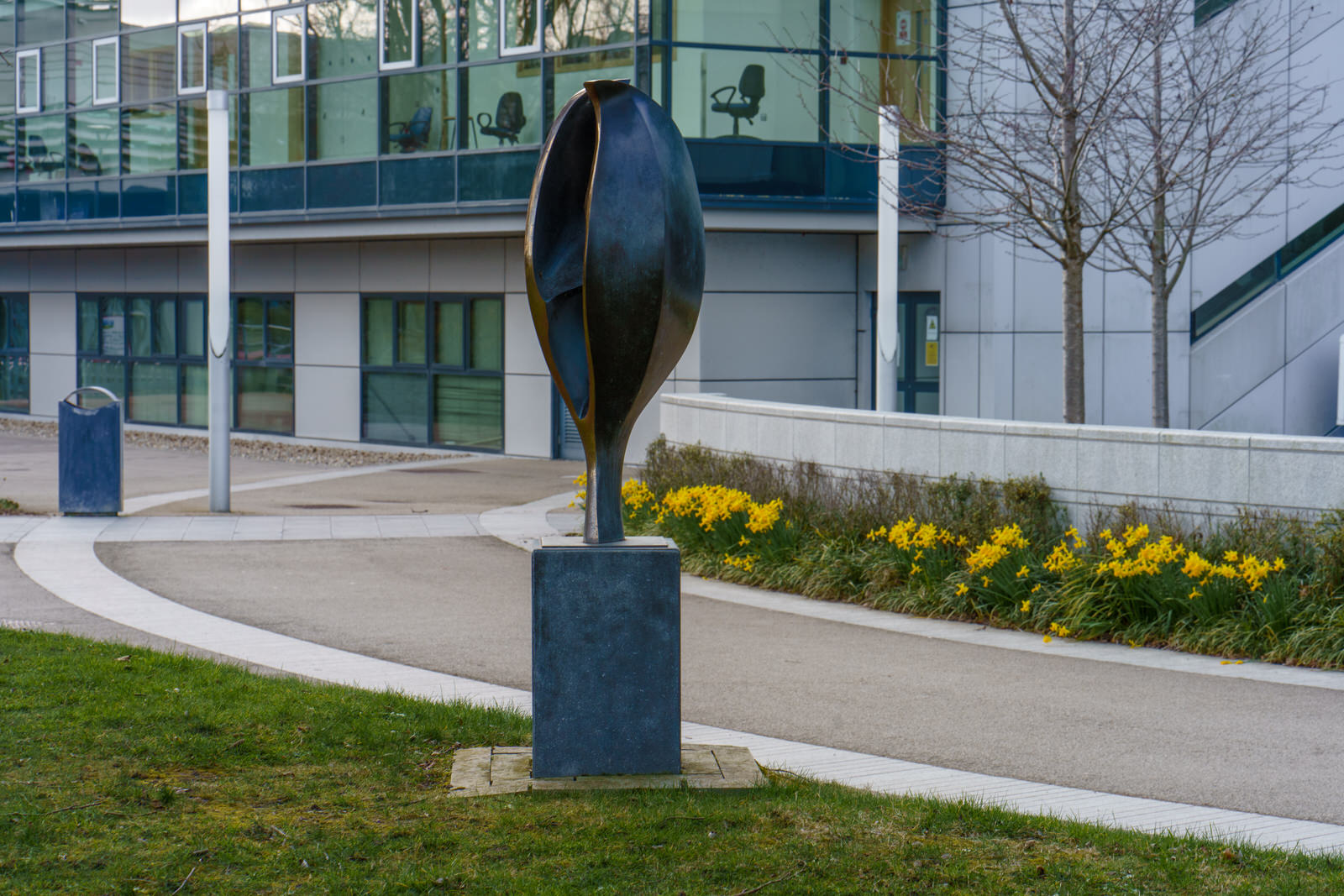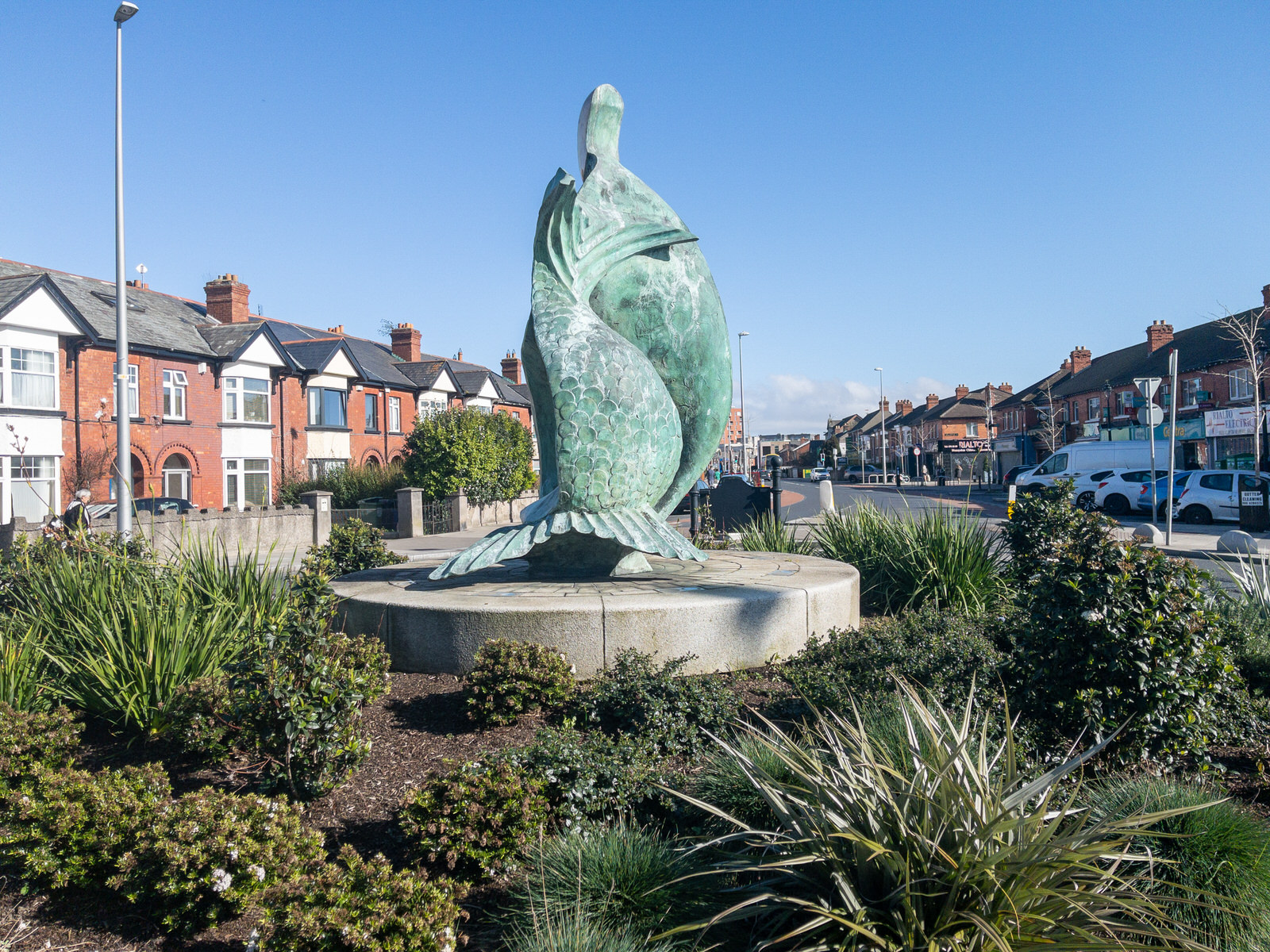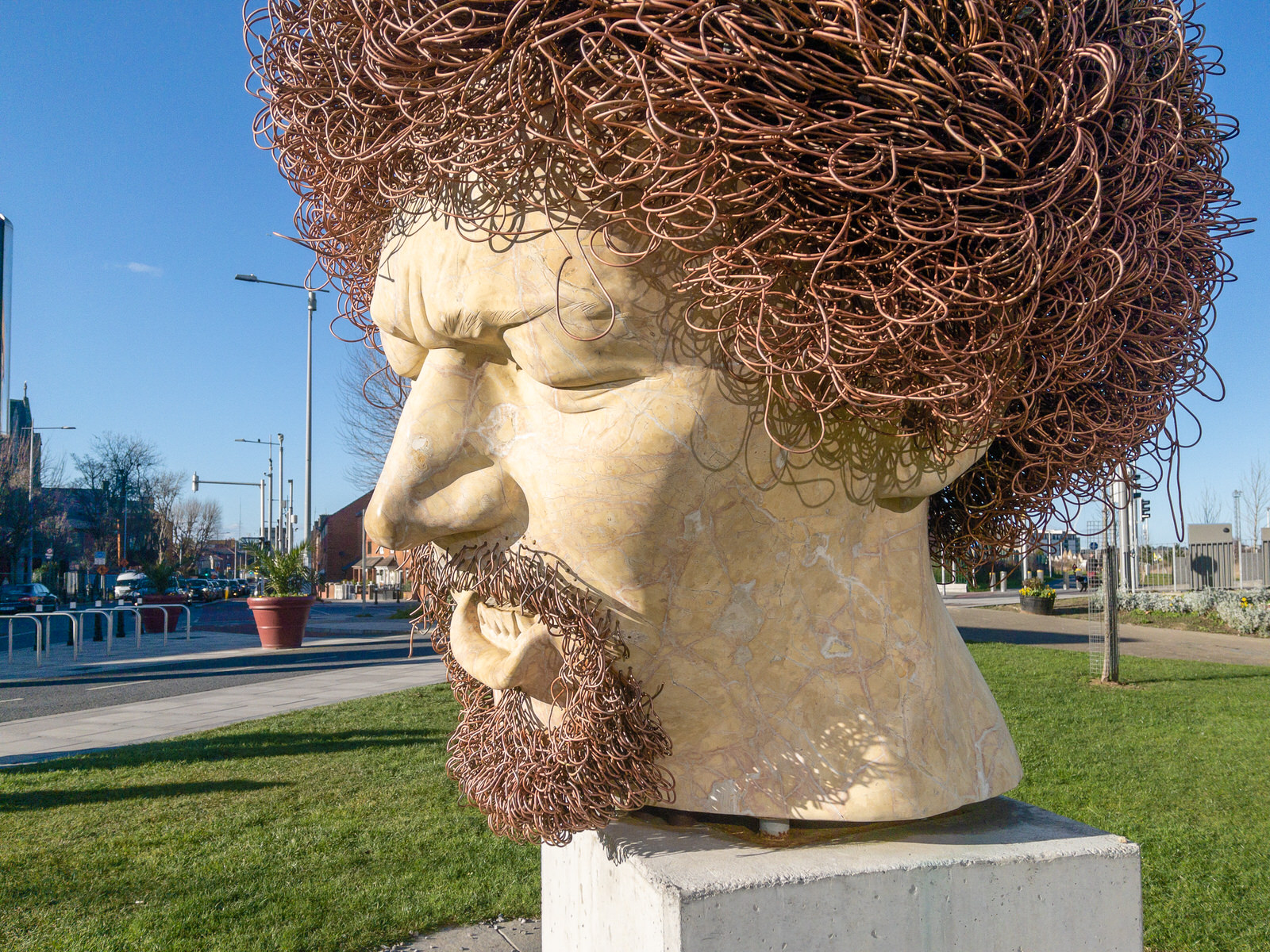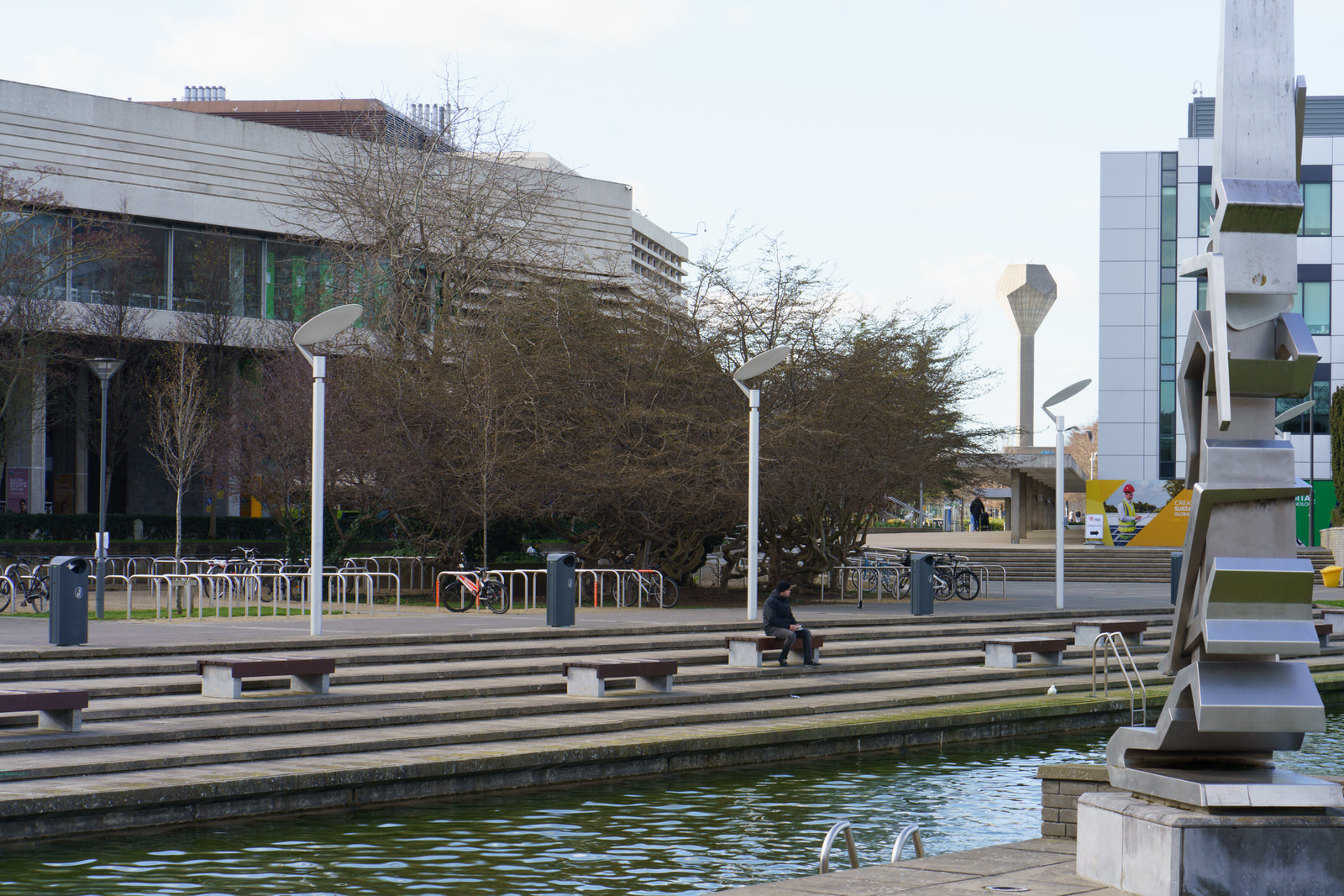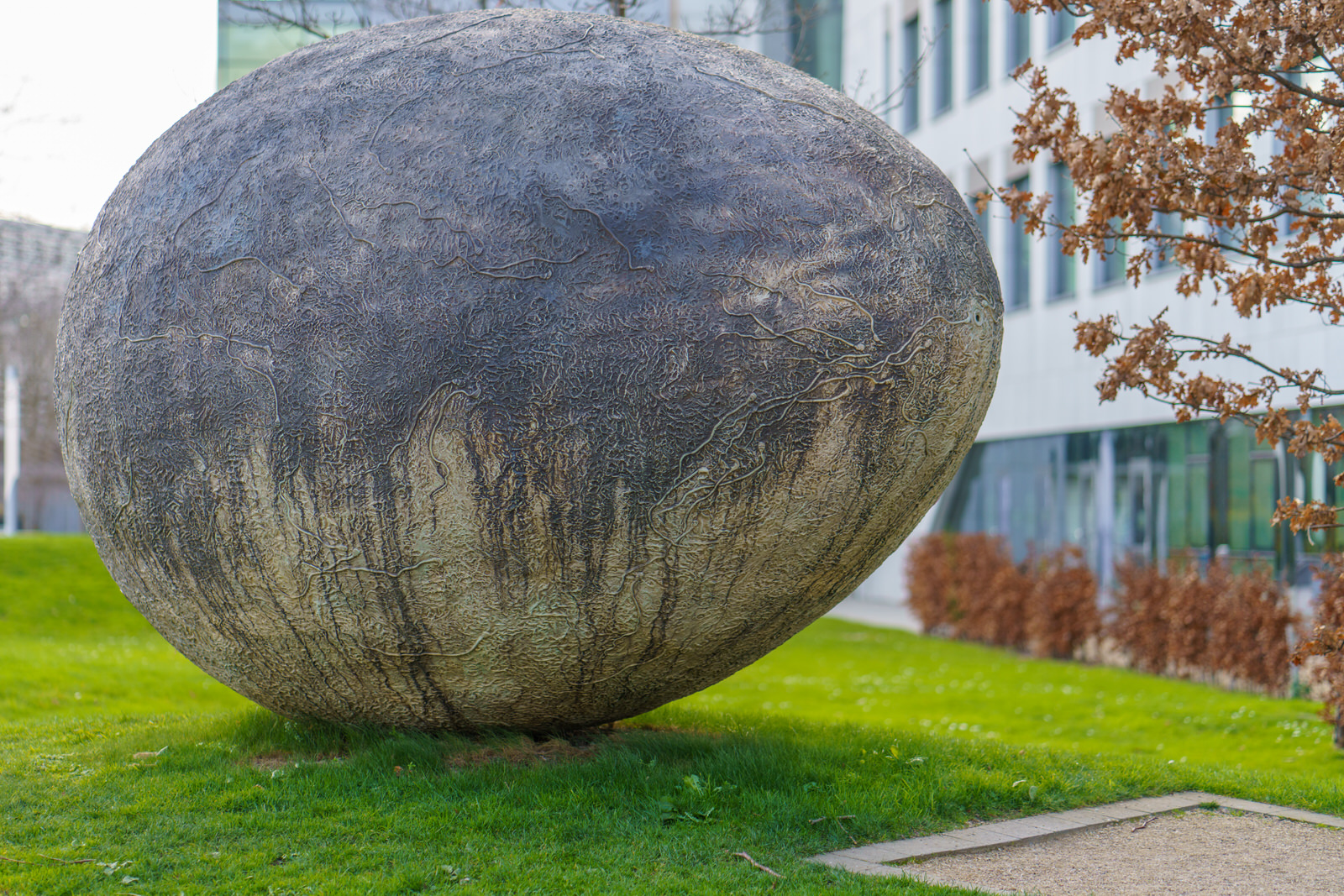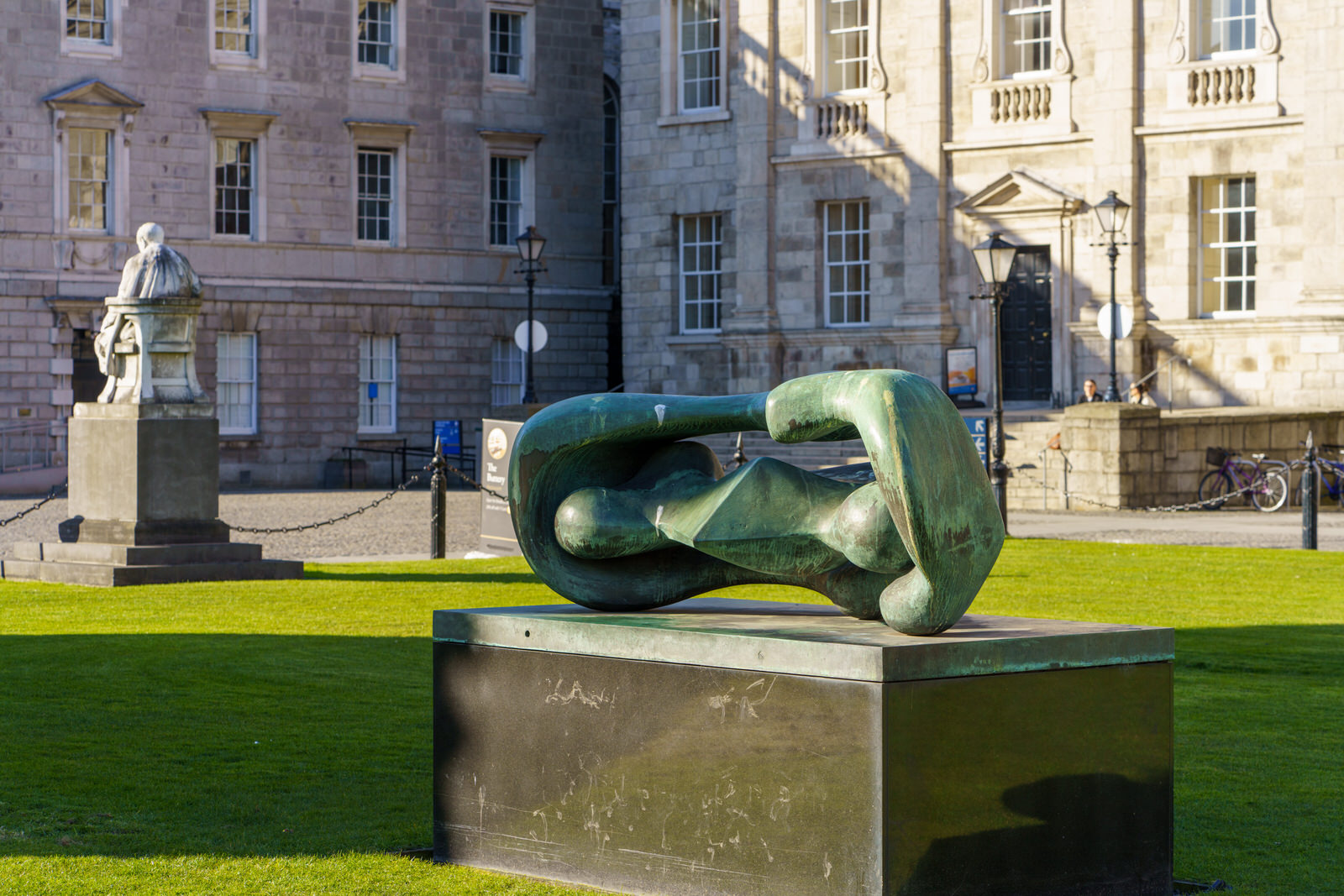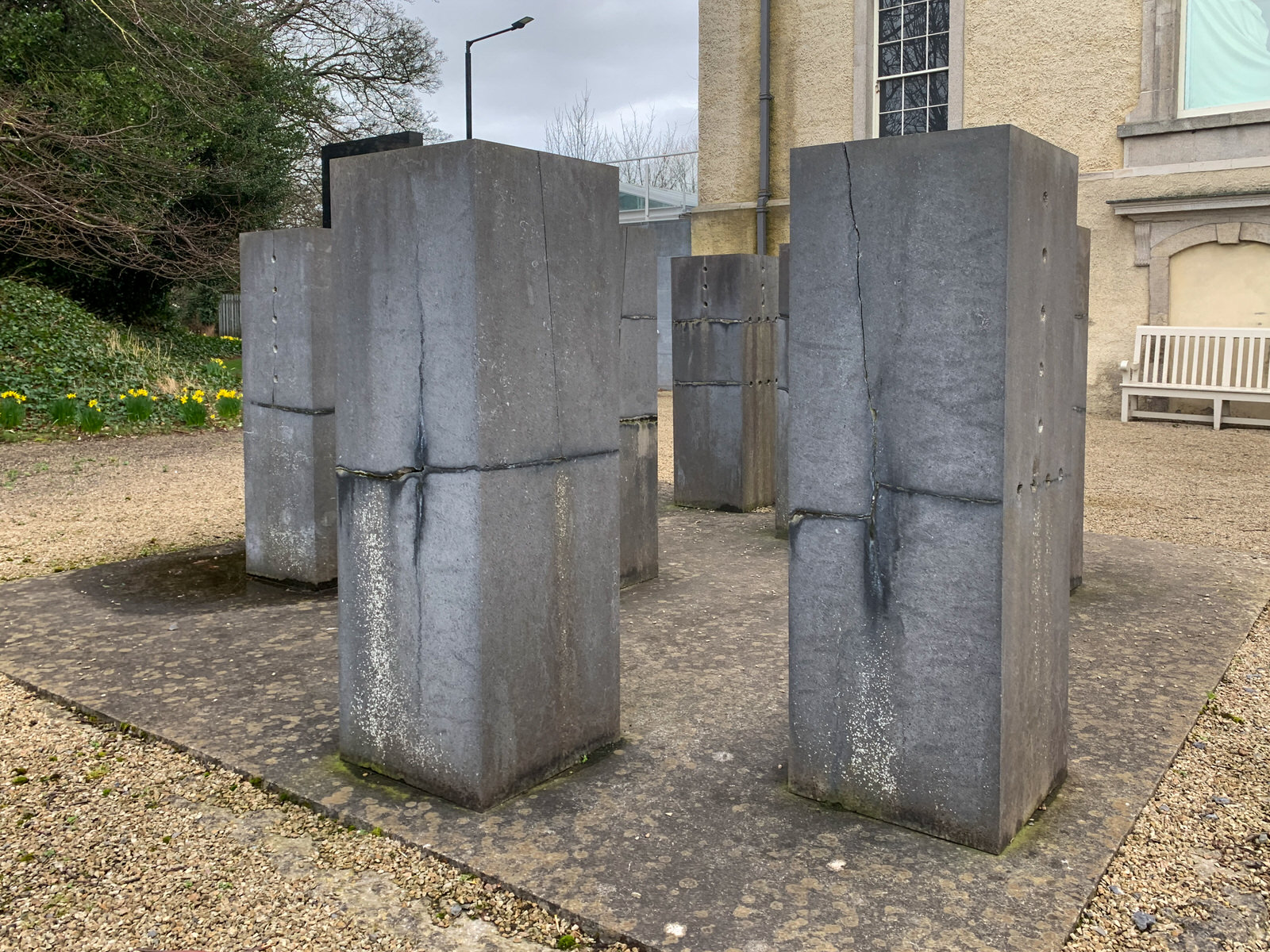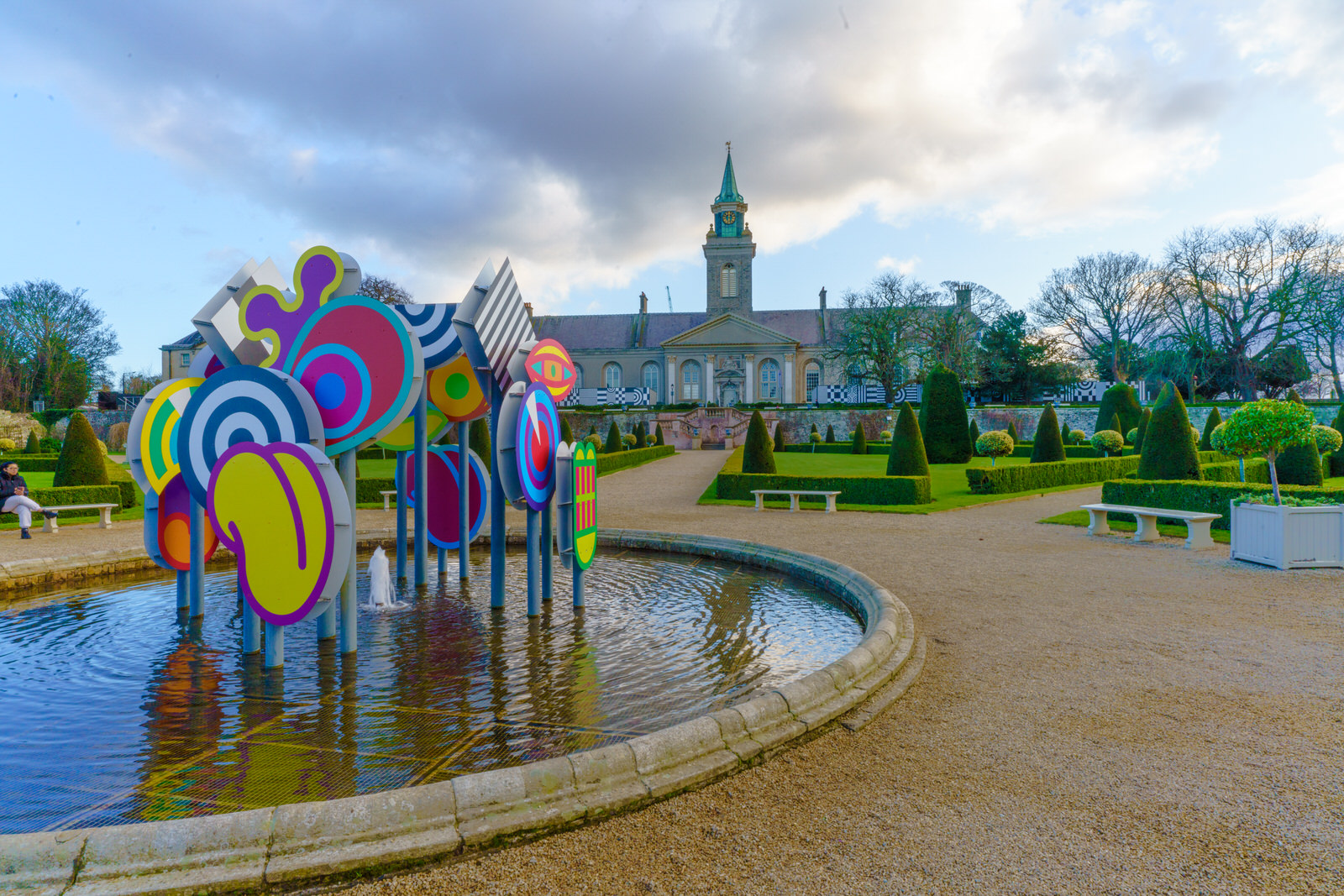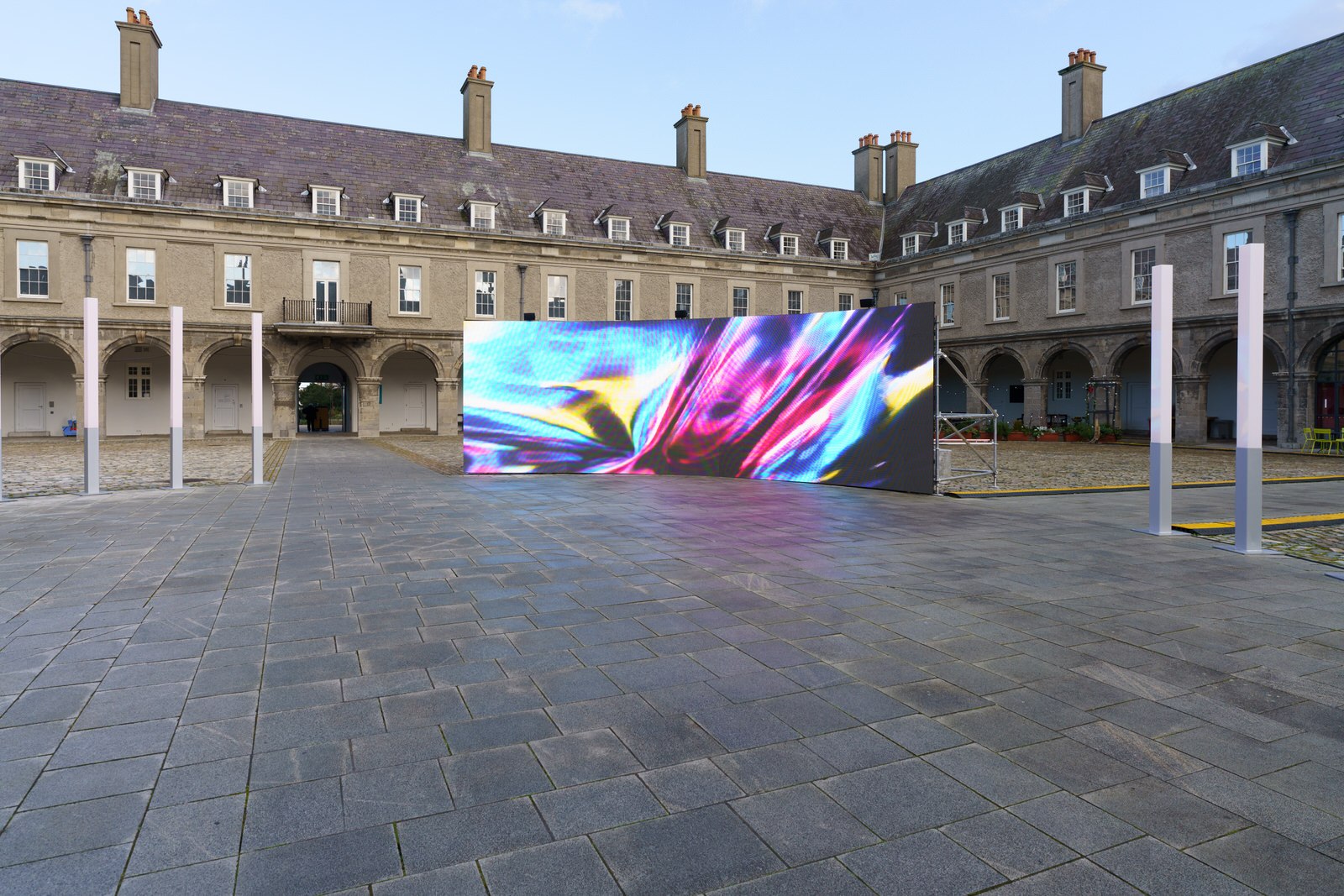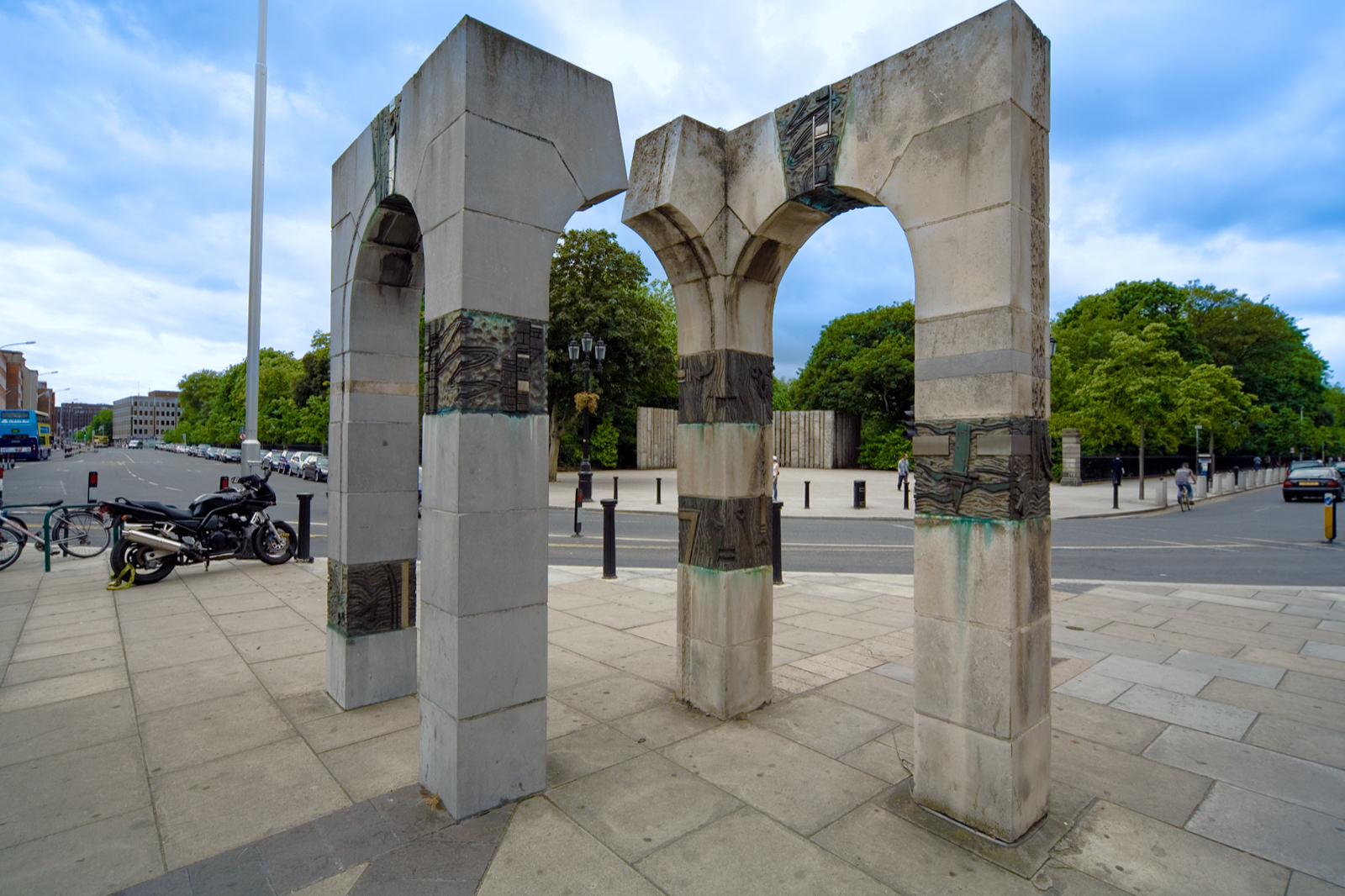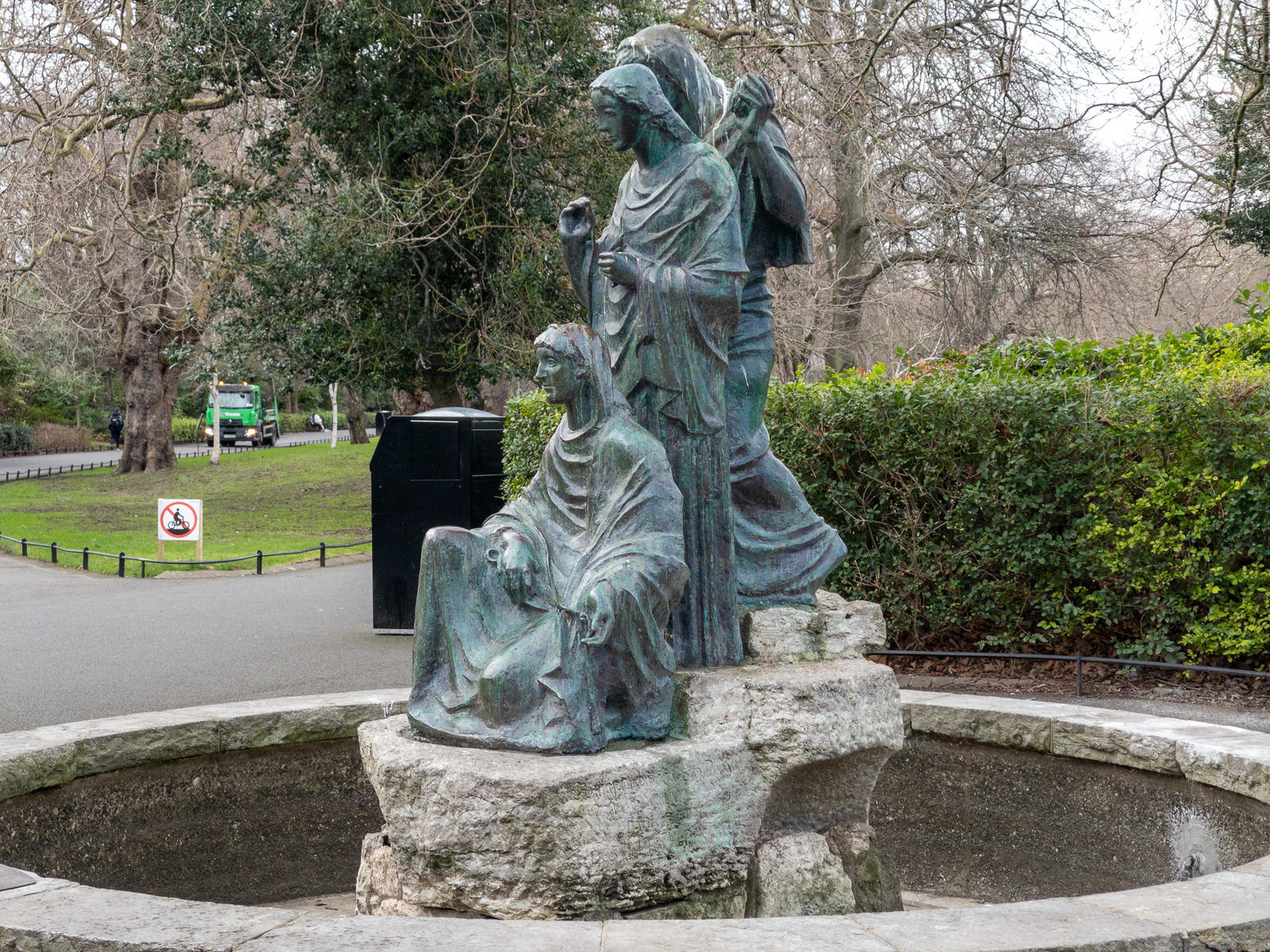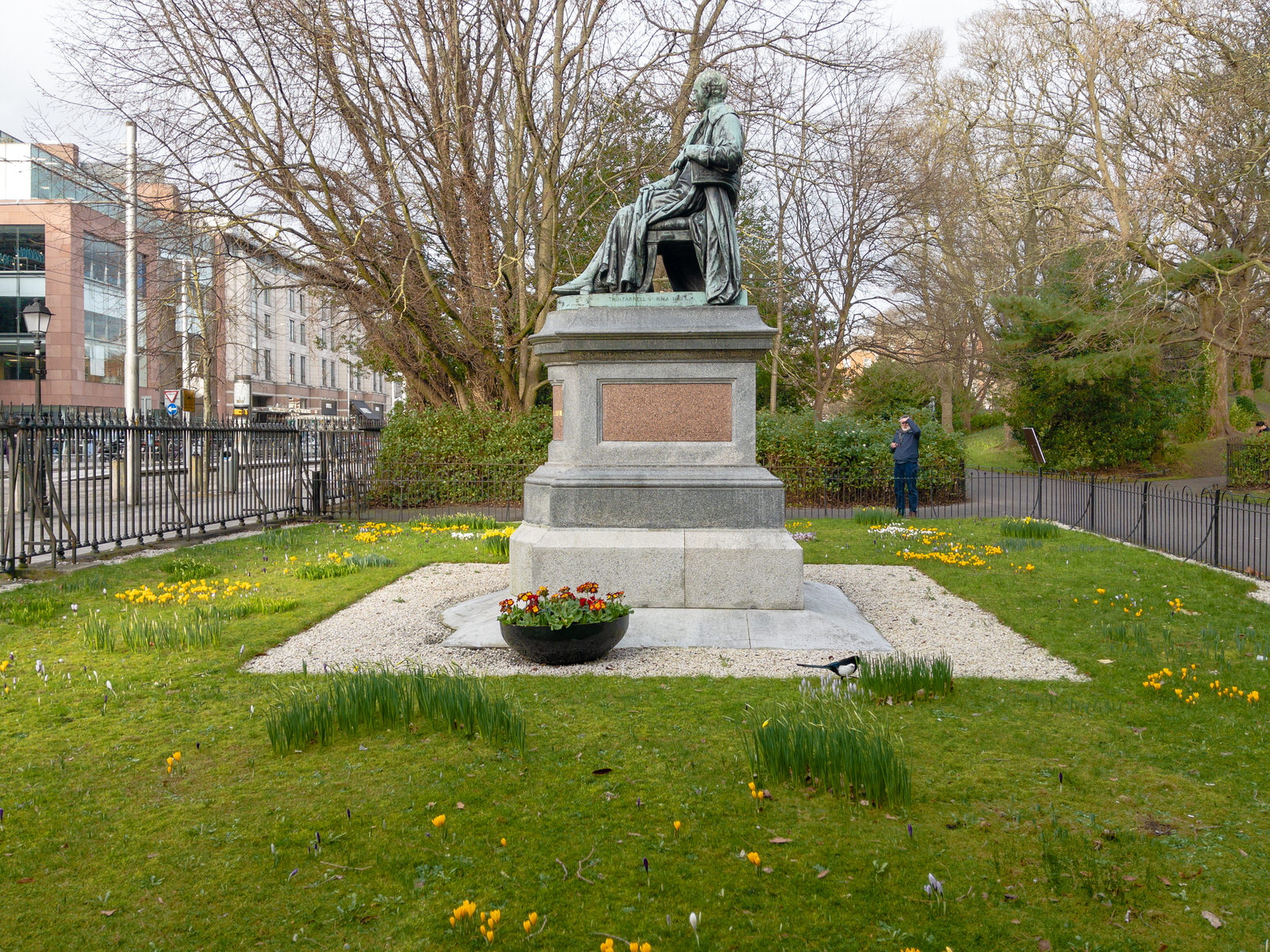UNUSUAL CHRISTMAS TREEWOLFE TONE SQUARE NEAR THE JERVIS SHOPPING CENTRE
WIND SCULPTURE BY EAMONN O’DOHERTYSUNDAY 20 NOVEMBER 2022
SFERA CON SFERA BY ARNALDO POMODORO
RECLINING CONNECTED FORMSBY HENRY MOORE
NEOPETS SCULPTURES BY BUNNY ROGERSKILDARE STREET
CARE FOR A CUP OF TEATHE TEAPOT THE REAL NATIONAL SYMBOL OF IRELAND
HORSE RIDER AND A QUADRUPEDBY MICHAEL QUANE RHA
CORTEN STEEL SCULPTURE OF A HORSE AT BRIDGEFOOT STREET PARK
A LONELY NEGLECTED BRONZE COWWAITING PATIENTLY AT WOOD QUAY
GOAT SCULPTURES BY KATY GOODHUE DILLON'S PARK ON COLIEMORE ROAD IN DALKEY 2008
FOUR LEGS GOOD BY KATY GOODHUE SCULPTURE IN CONTEXT 2022
I first came across Katy Goodhue's work in March 2008 when I visited Dillon's Park in Dalkey
TRIBUTE HEAD II IN MERRION SQUARE PARK BY DAME ELISABETH JEAN FRICK
ÉIRE MEMORIAL BY JEROME CONNOR RELOCATED WITHIN MERRION SQUARE PARK AFTER IT HAD BEEN RESTORED
Voigtländer is a very old optical company based out of Vienna and to the best of my knowledge it was established in 1756 however it isn’t a wholly independent manufacturer today.
GREEN WASHING BIRD FEEDERBY ANITA REYNOLDS
she has five ranges of framed textile art: Irish Birds, Irish Heritage, Landscapes, The Seasons and Carved in Cloth.
She also creates a range of ceramic Love Birds that are suitable for the garden and has just introduced a new range of ceramic birdhouses.
Her ceramic Woodland Angels are lanterns. They come in Oak, Ash, Beech, Hazel, Meadow and Birch. She presses leaves from her garden into the clay to create pieces that are touched by nature.
INDOOR GALLERYSCULPTURE IN CONTEXT 2 OCTOBER 2022
Today I used a 12 year old Sony VG10E camcorder that uses a crop sensor and produces JPEG rather than RAW images which imposes many limitations. To be honest the camera worked better than I had expected.
A MURDER OF CROWS26 SEPTEMBER 2022
HUMMING BIRD BY RAY DELANEYSCULPTURE IN CONTEXT SEPTEMBER 2022
RAVEN PLACE BY CATHERINE E GREENESCULPTURE IN CONTEXT SEPTEMBER 2022
FISH BY GUNVOR ANHOJ26 SEPTEMBER 2022
Gunvor Anhøj hails from a family of engineers and priests so perhaps it is no surprise she ended up a sculptor.
THE SOULS OF THE TREES - EBONY AND OAKEXCELLENT SCULPTURES BY MERCE CANADELL
THE MOMENT BY GERALDINE CARLA MURPHY SCULPTURE IN CONTEXT 2021 PUBLISHED SEPTEMBER 2022
HYBRID BY MICHELLE MAHER SCULPTURE IN CONTEXT 2021 PUBLISHED SEPTEMBER 2022
DELIQUESCENCE IAYELET LALOR - SCULPTURE IN CONTEXT 2021
SEAHORSE BY JESSICA CHECKLEY SCULPTURE IN CONTEXT 2 SEPTEMBER 2021
THE BEST NIGHT BY BOB QUINNPHOTOGRAPHED AT NIGHT DURING THE SCULPTURE IN CONTEXT EXHIBITION
REMNANT ECOLOGIES BY JONY EASTERBY I WAS LEFT IN THE DARK IN THE BOTANIC GARDENS
DAWN BY DAVID BROTHERSPHOTOGRAPHED DUBLIN CITY CENTRE 21 SEPTEMBER 2022
Sculpture in Context is the longest running, most prestigious sculpture exhibition in Ireland. Staged annually in the National Botanic Gardens in Dublin, this unique exhibition showcases the inspiring and extraordinary work of both established and emerging artists throughout the magnificent 50 acres of landscaped gardens located in Glasnevin, just three kilometres from Dublin City Centre.
THE MAD HATTERS BY LEONA DEVINESCULPTURE IN CONTEXT 20 SEPTEMBER 2022
Anna Donovan works as a ceramics and mixed media artist with a studio in Conway Mill, Belfast, Northern Ireland. Her work ranges from figurative sculpture to jewellery with pots in between.
NEO BY ANNA DONOVAN SCULPTURE IN CONTEXT 20 SEPTEMBER 2022
Anna Donovan works as a ceramics and mixed media artist with a studio in Conway Mill, Belfast, Northern Ireland. Her work ranges from figurative sculpture to jewellery with pots in between.
CASCADE BY CONLETH GENTI USED AN iPHONE 12 PRO MAX AND A CANON 5D MkIII
EMERGING BLOSSOM BY BROCK BUTLER I USED AN iPHONE 12 PRO MAX
THOMAS WOODGATE MEMORIALMARCH 2021 AND SEPTEMBER 2022
In 2021 I used a Sony 7RIV with a Sony PZ 28-135mm Lens and in 2022 I uses a Canon 5D MkIII with a Sigma 24-105mm Lens.
Thomas was from Callan in Co Kilkenny, the son of Edward and Hanora Woodgate of Mill Street, and until recently it was assumed that he was 18 when he signed up to the Royal Air Force in late 1918. He died on board RMS Leinster on 10 October 1918, when it was torpedoed by a German submarine close to the Kish Lighthouse while on its way to Holyhead.
ANCHORED VOID BLACK STEEL SCULPTURE BY MICHAEL WARREN
UNDER PRESSURE BY EDWARD COOKSCULPTURE IN CONTEXT SEPTEMBER 2022
LAMB AT FOOT BY PAMELA BYRNESCULPTURE IN CONTEXT SEPTEMBER 2022
Kenneth Drew is a practising sculptor with a studio in Ashtown, Dublin. He is also a sculpture tutor at Whitehall College, City of Dublin ETB. He works in a wide range of materials and scales from studio pieces to larger outdoor forms. He exhibits on a regular basis and works on private commissions for medium and larger scale sculptural forms. He has work in the Art for the State Collection and private collections in the US, Netherlands, Kuwait, UK Australia and throughout Ireland.
GERMINATION BY KEN DREW AT SCULPTURE IN CONTEXT 2022I ALWAYS LOOK FORWARD TO SEEING WHAT THIS ARTIST HAS ON DISPLAY
Kenneth Drew is a practising sculptor with a studio in Ashtown, Dublin. He is also a sculpture tutor at Whitehall College, City of Dublin ETB. He works in a wide range of materials and scales from studio pieces to larger outdoor forms. He exhibits on a regular basis and works on private commissions for medium and larger scale sculptural forms. He has work in the Art for the State Collection and private collections in the US, Netherlands, Kuwait, UK Australia and throughout Ireland.
CELTIC PEACE DOVE BY NIGEL CONNELL BASSCANON 1Ds MKIII AND CANON 5D MKIII
DUEL BY ANA DUNCANSCULPTURE IN CONTEXT 1 SEPTEMBER 2022
SKYSCRAPER BY AYELET LALORSCULPTURE IN CONTEXT 1 SEPTEMBER 2022
Born in 1974, Ayelet studied at Grennan Mills Craft School, Glasgow School of Art, and NCAD, Dublin, graduating with a BA in 1996, and MA in 2009. She was surrounded by independent, free thinking women growing up. This has shaped her work greatly, the strong female form being central to her artwork, embellished by strong decorative aspects of colour, pattern and texture.
QUACK-QUACK BY PETR HOLECEKSCULPTURE IN CONTEXT 1 SEPTEMBER 2022
Between the years 1996 to 2001 he studied at University in Ceske Budejovice, CR, Pedagogical Faculty, and specialized in Art and Civic Education. In the Spring of 2003 he attended a drawing studies course at the National Gallery of Ireland, and in 2004 he was an art assistant in the studio of Patrick O’Reilly in Dublin
DROPS OF THE HEART BY MERCE CANADELLSCULPTURE IN CONTEXT 1 SEPTEMBER 2022
Since then she has continued studying different techniques and the use of different materials, covering mould making, sculptural ceramics, carved wood and painted textiles.
She has been in Ireland since 2002.
APPLES AND ATOMS BY EILIS O'CONNELLTRINITY COLLEGE CAMPUS IN DUBLIN AUGUST 2022
In 1932, Ernest Walton and John Cockcroft split the nucleus of a Li (lithium) atom, often termed ‘splitting the atom’. The experiment was carried out in the Cavendish Laboratory at the University of Cambridge, England. Albert Einstein declared that their experiment was the first demonstration of his famous E=mc2 equation.
Commemorating the 80th anniversary of the experiment, Trinity College Dublin invited six artists to submit a design responding to a brief to commemorate Ernest Walton’s research achievements as well as over 30 years of dedication to science education. Eilís O’Connell’s design was selected by an interdisciplinary panel including representatives from the Walton family, the School of Physics, the College Art Collections, the students, and external visual arts professionals.
Ernest Thomas Sinton Walton (6 October 1903 – 25 June 1995) was an Irish physicist and Nobel laureate. He is best known for his work with John Cockcroft to construct one of the earliest types of particle accelerator, the Cockcroft–Walton generator. In experiments performed at Cambridge University in the early 1930s using the generator, Walton and Cockcroft became the first team to use a particle beam to transform one element to another. According to their Nobel Prize citation: "Thus, for the first time, a nuclear transmutation was produced by means entirely under human control."
INITIAL PREVIEW OF SCULPTURE IN CONTEXT 2022 BOTANIC GARDENS 29 AUGUST 2022
DAVID AND GOLIATH BY JAM SUTTON THE MULTI-DISCIPLINED BRITISH ARTIST
In reality I only photographed North Wall Quay rather than the whole area.
North Wall is an area east of the inner north side of Dublin, along the River Liffey. It contains the entire north side of Dublin Docklands and includes the International Financial Services Centre, Spencer Dock, and further east the main part of Dublin Port.
LIFE SIZED STATUE OF PATRICK KAVANAGHLOCATED ON WILTON TERRACE NOT MESPIL ROAD
BY DANNY OSBORNEOSCAR WILDE ON A ROCK AND TWO MINOR SCULPTURES
This is, without doubt, a favourite of mine and I spend a lot of time trying to get the "best photograph ever" but it does not bother me that I need to try again.
BRIAN FRIEL AND JOHN B KEANE COFFEE MORNING AT STARBUCKS 5 AUGUST 2022
BUSHY IS A NEW TALL SCULPTURE IN BUSHY PARK THE PLAQUE HAS BEEN VANDALISED
GEORGE IV MEMORIAL ERECTED IN 1823PHOTOGRAPHED 3 AUGUST 2022
The town was officially renamed Kingstown in 1821 in honour of a visit by the British King George IV, but reverted to its ancient Irish name by resolution of the town council in 1921
CHRIST THE KING BY ANDREW O'CONNOR A LARGE TRIPLE CROSS IN DUN LAOGHAIRE
I have noticed that very few passers-by pay any attention to this large sculpture located beside the LexIcon Library and Cultural Centre in Dun Laoghaire.
BLINKS ON QUEENS ROAD IN BELFAST BELFAST MARCH 2022
Over the years I have experiments with different forms of hosting and software but as I have progressed I have found must hosting service to be very restrictive and constraining so I have tended towards self hosting solutions. I have tried many software solutions but eventually settled of Rapidweaver however I do operate a number of Wordpress Sites which I will discontinue over the next two years.
One problem that I have had is that according to Google my sites failed to meet their strict requirements for mobile sites [Core Web Vitals]. I have tried multiple solutions but the changes have been minor. At best my rating was about 37%
Recently things at Rapidweaver have become complicated and as a result I may not be able to depend on their software going forward so I have had to examine other solutions and one that I investigated is Sparkle which performs very well if Google Core Web Vitals is the gold standard. I should mention that I do intend to remain with Rapidweaver and I will employ their new solutions going forward but I will also employ other solutions. I am also testing Blocs 4.
Web Vitals is an initiative by Google to provide unified guidance for quality signals that are essential to delivering a great user experience on the web.
Google has provided a number of tools over the years to measure and report on performance. Some developers are experts at using these tools, while others have found the abundance of both tools and metrics challenging to keep up with.
Site owners should not have to be performance gurus in order to understand the quality of experience they are delivering to their users. The Web Vitals initiative aims to simplify the landscape, and help sites focus on the metrics that matter most, the Core Web Vitals.
Core Web Vitals are the subset of Web Vitals that apply to all web pages, should be measured by all site owners, and will be surfaced across all Google tools. Each of the Core Web Vitals represents a distinct facet of the user experience, is measurable in the field, and reflects the real-world experience of a critical user-centric outcome.
The metrics that make up Core Web Vitals will evolve over time. The current set for 2020 focuses on three aspects of the user experience—loading, interactivity, and visual stability—and includes the following metrics (and their respective thresholds).
VERONICA GUERIN 5 JULY 1959 - 26 JUNE 1996 PHOTOGRAPHED 2 JULY 2022
SELECT IMAGES TO VIEW MORE PHOTOGRAPHS
BLUE METAL SCULPTURE WITH NO NAME BY JOHN BURKEWILTON ROUNDABOUT IN CORK MAY 2022
CHA AND MIAH WHEN THEY WERE BOYSSTATUES BY BRENDAN BYRNE AT THE KINGSLEY HOTEL IN CORK
KNOWN TO THE STUDENTS AS BROWN THOMASSCULPTURE AT LIMERICK UNIVERSITY
FLYING FIGURES SCULPTURE PHOTOGRAPHED MARCH 2022
THE SEARCHER BY ROSS WILSON CS LEWIS SQUARE AT CONNSWATER IN BELFAST
GLASS OF THRONES 2 THE RED WOMAN MELISANDRE LOCATED AT THE LAGAN WEIR
BLACK TULIPBY EAMONN CEANNT
RIALTOBY SANDRA BELL
LUKE KELLY STATUE AT GUILD STREETVANDALISED MANY TIMES
In July 2020 a A man has appeared in court charged in connection with the vandalism of a statue of Luke Kelly in Dublin. It was alleged that the defendant had sprayed the statue of the former Dubliners’ singer in Guild Street with blue paint on Sunday evening at 4.45pm.
SCULPTURE AT ENTRANCE TO ST KILIAN'S GERMAN SCHOOL ON ROEBUCK ROADUCD COLLEGE CAMPUS
The photograph is a bit confusing because a row of black and orange bollards can be seen through part of the sculpture ... I am assuming that the sculpture is a representation of the saint.
FORME IN MUTAZIONDEUCD COLLEGE CAMPUS
There are at least 35 examples of public art throughout the campus and having obtained a detailed map I hope to photograph all of them over the next few months.
Zennaro (b.1926, Venice) is a leading Italian exponent of the Concrete Art movement. Concrete Art is a form of abstraction that dismisses any analogies to nature or the natural world. This work was donated by the late Italian Ambassador to Ireland Dr. Francesco Carlo Gentile.
NOAH'S EGG AT UCD CAMPUSBY RACHEL JOYNT
Rachel Joynt was commissioned by leading horse-trainer Dermot Weld to make this sculpture for the new Veterinary Medicine building. The quote beside the piece 'Omne vivum ex ovo' means all things come from the egg. Sperm like shapes cover the surface of the egg and include depictions of bulls, rats and hamsters as well as man. The sculpture is decorated with small holes, which create a planetarium-like effect when viewed from the pointed end.
Rachel Joynt (born 1966 in County Kerry) is an Irish sculptor who has created some prominent Irish public art. She graduated from the National College of Art and Design in Dublin in 1989 with a degree in sculpture.
Her father, Dick Joynt,[2] was also a sculptor. Rachel Joynt is preoccupied by ideas of place, history and nature, and her work often examines the past as a substrate of the present. Her commissions include People's Island (1988) in which brass footprints and bird feet criss-cross a well-traversed pedestrian island near Dublin's O'Connell Bridge. She collaborated with Remco de Fouw to make Perpetual Motion (1995), a large sphere with road markings which stands on the Naas dual carriageway. This has been described by Public Art Ireland as 'probably Ireland's best known sculpture' and was featured, as a visual shorthand for leaving Dublin, in The Apology, a Guinness advert. Joynt also made the 900 underlit glass cobblestones which were installed in early 2005 along the edge of Dublin's River Liffey; many of these cobblestones contain bronze or silver fish.
PRESS RELEASE:
'NOAH'S EGG', a giant cast-bronze egg sculpture, was unveiled on Tuesday 8 June 2004 by leading trainer, Dermot Weld at the UCD Veterinary School in Belfield. The sculpture was a gift from Dermot Weld to the UCD Faculty of Veterinary Medicine.
Noah's Egg represents the beginnings and potential of life, and symbolises both the field of veterinary medicine and the scholarly pursuits and ambitions of the Veterinary students and staff.
Noah's Egg, which was created by Rachel Joynt, is an interactive sculpture. It is decorated with small holes, which create a planetarium-like effect when viewed from the pointed end. The Egg's ochre, shell-like surface is richly textured with sperm-like shapes of various creatures including man, bull, rabbit, guinea pig, rat, mouse and hamster. At night, Noah's Egg will be illuminated by a warm red glow like an incubator light. Noah's Egg sits outside the UCD Veterinary Faculty's new state-of-the-art premises at Belfield.
At the unveiling ceremony Dr Hugh Brady, President of UCD said, "It is our ambition that the UCD Veterinary School be recognised as an international leader in veterinary education, research and clinical service. We are delighted that a graduate of the faculty, Dermot Weld, has generously donated this magnificent sculpture to UCD as a symbol of this ambition."
UCD's Faculty of Veterinary Medicine moved to its new purpose-built facility at Belfield in 2002. The new building provides students with an ideal environment to undertake their studies in Veterinary Medicine, with laboratories suited to the pursuit of innovative research and a superbly planned veterinary hospital to observe and practice veterinary medicine first hand. The Veterinary School is adjacent to the Faculties of Agriculture and Science and the Conway Institute for Biomolecular and Biomedical Research, which ensures that the School is well positioned to participate in the exciting developments in the life sciences at UCD.
RECLINING AND CONNECTED FORMS BY HENRY MOORE
For some strange reason this appears to be ignored by visitors and tourists who photograph everything except this.
Years ago Henry Moore provided , on loan, a sculpture which became known as 'The King And Queen' and it was located on the Library forecourt but as he was not happy about the location he decided that it should be returned. He had not been happy with the location because he felt that there was a conflict with the forecourt lanterns and because there was not enough sunlight on the north facing forecourt.
The university worked persistently to find a replacement for the King and Queen and eventually proposed the work by Pomodoro which is now permanently installed on the forecourt and which appears to have been made for it. A perfect outcome.
Eventually Trinity obtained another work by Henry Moore, for which a location in Library Square was agreed and where it has remained.
Henry Spencer Moore OM CH FBA (30 July 1898 – 31 August 1986) was an English artist. He is best known for his semi-abstract monumental bronze sculptures which are located around the world as public works of art. As well as sculpture, Moore produced many drawings, including a series depicting Londoners sheltering from the Blitz during the Second World War, along with other graphic works on paper.
His forms are usually abstractions of the human figure, typically depicting mother-and-child or reclining figures. Moore's works are usually suggestive of the female body, apart from a phase in the 1950s when he sculpted family groups. His forms are generally pierced or contain hollow spaces. Many interpreters liken the undulating form of his reclining figures to the landscape and hills of his Yorkshire birthplace.
Moore became well known through his carved marble and larger-scale abstract cast bronze sculptures, and was instrumental in introducing a particular form of modernism to the United Kingdom. His ability in later life to fulfil large-scale commissions made him exceptionally wealthy. Despite this, he lived frugally; most of the money he earned went towards endowing the Henry Moore Foundation, which continues to support education and promotion of the arts.
BRENDAN BEHAN AT BINNS BRIDGE23 FEBRUARY 2022
Brendan Behan was an Irish Republican, poet, short story writer, novelist, and playwright who wrote in both English and Irish. He is widely regarded as one of the greatest Irish writers and poets of all time. Behan died on 20 March 1964 at 41 years of age, when he collapsed at the Harbour Lights bar in Dublin.
In September 2003 a sculpture of Brendan Behan was unveiled at Binns Bridge on the banks of Dublin's Royal Canal.
8 LIMESTONES BY ULRICH RUCKRIEM I USED AN iPHONE XR
Created by artist, designer and nightclub pioneer Niall Sweeney, Club Chroma Chlorologia is a newly commissioned series of site-specific works installed in the gardens and grounds of the 17th-century Royal Hospital Kilmainham, which combine to create unlikely interventions that you can encounter, discover and take part in every time you visit the formal garden.
On August 1 and 2 2021, Saturn was at opposition, meaning the Earth will be located between the ringed planet and the sun. This is when the outer planet is at its most luminous, making for a brilliant night sky view.
Sweeney is a graphic designer from Dublin who makes up one half of Pony Ltd. The studio team were, as their website states, “born from the big smoke of Dublin and the seven hills of Sheffield, this studio is a perfect example of pulling fragments from all directions until the last piece completes the jigsaw.” Pony Ltd are well known for their theatrical and minimalist posters for Panti Bliss.
NIALL SWEENEY'S FOUNT OF SATURN 2021ROYAL HOSPITAL KILMAINHAM
Created by artist, designer and nightclub pioneer Niall Sweeney, Club Chroma Chlorologia is a newly commissioned series of site-specific works installed in the gardens and grounds of the 17th-century Royal Hospital Kilmainham, which combine to create unlikely interventions that you can encounter, discover and take part in every time you visit the formal garden.
On August 1 and 2 2021, Saturn was at opposition, meaning the Earth will be located between the ringed planet and the sun. This is when the outer planet is at its most luminous, making for a brilliant night sky view.
Sweeney is a graphic designer from Dublin who makes up one half of Pony Ltd. The studio team were, as their website states, “born from the big smoke of Dublin and the seven hills of Sheffield, this studio is a perfect example of pulling fragments from all directions until the last piece completes the jigsaw.” Pony Ltd are well known for their theatrical and minimalist posters for Panti Bliss.
DREAMSPHERE BY AOIFE DUNNEROYAL HOSPITAL KILMAINHAM
Hypnotically staged in the IMMA Courtyard, DREAMSPHERE – a site-specific installation devised by IMMA artist-in-residence Aoife Dunne – transports spectators to an immersive mindscape. Exploring the notion of consciousness as an exteriorised shared space in which to roam and reside, audiences are encircled by arresting sounds and screens. The ensuing visualisations, unfolding at a frenetic pace, send viewers on a surreal trip through the tumultuous mind; teasing future prospects of consciousness-sharing whilst exploiting technology to stretch the psychological parameters of human experience.
Dunne’s long-standing penchant for melding physical and digital disciplines is made manifest by the onscreen projections. From the material splendour of her costuming to the tactility of obscure found objects, a miscellany of palpable textures is transported to this virtual dimension, stoking visual-haptic sensations within the viewer. Heightening the multi-sensorial feel of Dunne’s dream realm, sonic idiosyncrasies soundtrack the performer’s fevered envisioning; furthering allusions to mental overwhelm and entrapment already sparked by the work’s enclosed structure.
DREAMSPHERE epitomises the multi-hyphenate nature of Dunne’s practice: the installation’s myriad features, unlimited to sculpture, sound, performance and film, were single handedly conceived by the artist, reflecting her tireless dexterity and flair for phantasmagoria.
Digital installation artist Aoife Dunne creates visually-arresting, immersive environments fusing sculpture, video, sound, performance, technology, and costume. Fuelled by a fascination with digital and material culture, Dunne’s idiosyncratic touch is laced with references to the surreal and hyper-real. Exploring an ethos rooted in post-pop and post-internet, Dunne’s work envelops audiences in abstract, detail-driven virtual and physical realms. Her multi dimensional approach to crafting large-scale, experiential work is informed by a diverse creative background steeped in dance, performance, fashion and musical composition. Bulldozing through the boundaries of what conventional exhibitions entail, Dunne reaps continent-crossing acclaim for her inimitable aesthetic and site-specific, colourfully chaotic work.
Aoife Dunne studied Fine Art Media at The National College of Art and Design and received her BFA in 2016. Since graduating, Dunne has held numerous exhibitions internationally, including The Museum of Contemporary Art Denver, The Royal Academy of Arts London, and upcoming solo shows in Puerto Rico, New York, London, Dublin, Paris, and Tokyo.
Artist website: aoifedunne.com Follow Aoife Dunne on Instagram: @efadone
BRONZE BUST OF JAMES CLARENCE MANGAN ST STEPHEN'S GREEN FEBRUARY 2022
Bronze bust, 'MANGAN', on a socle [plinth] with a marble relief of a woman's head, 'Roisin Dubh'. Sculptor Oliver Sheppard.
James Clarence Mangan, born James Mangan (Irish: Séamus Ó Mangáin; 1 May 1803, Dublin – 20 June 1849), was an Irish poet. He freely translated works from German, Turkish, Persian, Arabic, and Irish, with his translations of Goethe gaining special interest. After the Great Famine in Ireland, he began writing patriotic poems, such as A Vision of Connaught in the Thirteenth Century. Mangan was troubled, eccentric, and an alcoholic. He died early from cholera. After his death, Mangan was hailed as Ireland's first national poet and admired by writers such as James Joyce and William Butler Yeats.
Oliver Sheppard RHA (10 April 1865 – 14 September 1941) was an Irish sculptor, most famous for his 1911 bronze statue of the mythical Cuchullain dying in battle. His work was also part of the art competitions at the 1924 Summer Olympics and the 1928 Summer Olympics.
"Róisín Dubh" ( "Dark Rosaleen" or "Little Dark Rose"), written in the 16th century, is one of Ireland's most famous political songs. It is based on an older love-lyric which referred to the poet's beloved rather than, as here, being a metaphor for Ireland. The intimate tone of the original carries over into the political song. It is often attributed to Antoine Ó Raifteiri, but almost certainly predates him
TRACE BY GRACE WEIRHAS IT DISAPPEARED WITHOUT TRACE
This is a very old photograph dating from 6 August 2006. Unfortunately I do not know what camera was used but I suspect that it was a Canon IXUS [known as a Powershot in the USA].
From about 1988 until 2013 this large sculpture by sculptor Grace Weir stood across the street from St Stephen’s Green, near Merrion Row. I thought that the sculpture was "Portals" but I recently discovered that it was "Trace".
Unfortunately this sculpture had to be removed to make room for traffic that had to be diverted because of the extension of the LUAS green line. It is now in storage but it has been discovered in 2017 it was discovered that four of the Portland-stone blocks were missing.
Trace had been commissioned in 1988 as part of Dublin’s millennium celebrations. It was made from limestone and Portland stone, with the latter taken from the Custom House and donated to the artist when the building was undergoing restoration works in the late 1980s.
Grace Weir studied at the National College of Art and Design and also at Trinity College Dublin, where she won an award for her Masters in Multi-Media graduation project. She co-represented Ireland at the 49th International Venice Biennale in 2001 with her video installation 'around now'.
Grace Weir collaborated with an astrophysicist exploring aspects of Einstein's relativity and was commissioned by Cornerhouse in Manchester UK to make two film works ‘Dust defying gravity' and ‘Bending spacetime in the basement' in regard to this. They were premiered at her solo show titled ‘a fine line' at Cornerhouse, Manchester UK in September 2003. In May 2005 she was elected a member of Aosdána. Her work is held in many collections including that of the Irish Museum of Modern Art.
THE THREE FATES BY GERMAN SCULPTOR JOSEF WACKERLE
A public sculpture depicting The Three Fates 'spinning and measuring the thread of man's destiny'. The bronze statue was created by German sculptor Josef Wackerle about 1956 and gifted to the Irish people by the West German people in gratitude for aid in the wake of the Second World War.
Bronze sculpted statue of three robed and hooded female figures cast in two sections, highest figure with left hand raised and holding spool of string, middle figure standing with right hand raised, third and lowest crouching, each figure holding piece of thread. Three brass plaques fixed to top of wall around fountain, that facing east inscribed 'With gratitude for the help given to German children by the Irish people after World War II. Roman Herzog president of the Federal Republic of Germany 23.03.1997'; inscription repeated in Irish and German. Plaque to south side inscribed 'This fountain designed by the sculptor Josef Wackerle is the gift of the people of the German Federal Republic to mark their gratitude for Ireland's help after the war of 1939-45. Group portrays the legendary Three Fates spinning and measuring the thread of man's destiny'; inscription repeated in Irish on plaque to north.
Operation Shamrock was a scheme bringing refugee children from mainland Europe to Ireland in the aftermath of the Second World War. It was organised by the Irish Red Cross, and involved about 500 children, mostly from Germany, who stayed for three years before returning home.
Irish assistance to Germany reinforced in Britain the perception, fostered by wartime neutrality, that Ireland was pro-Nazi. Conversely, West Germany in the 1950s had gratitude for Ireland's postwar relief aid, and ties grew between the countries. In January 1956 a memorial fountain sculpted by Joseph Wackerle and commissioned by the German Gratitude Fund was unveiled in St Stephen's Green, Dublin, by the West German ambassador.
In 1961, the German war cemetery was opened near St Kevin's Hostel, Glencree, for graves of German aviators killed in Ireland during the war. In 1974, the hostel became the Glencree Centre for Peace and Reconciliation, which played a role in the Northern Ireland peace process in the 1990s.
German-language courses provided for refugees in Dublin led to the foundation of St Kilian's German School.
In March 1997, a reunion of over 300 foster-children and families was held at the German embassy in Dublin, attended by Presidents Mary Robinson of Ireland and Roman Herzog of Germany.
As part of The Gathering Ireland 2013, 21 refugee children from Germany, France and Austria returned to Glencree.
Joseph Wackerle (15 May 1880, Partenkirchen – 20 March 1959, Partenkirchen) was a German sculptor. His work was also part of the art competitions at the 1928 Summer Olympics and the 1932 Summer Olympics.
Wackerle's grandfather was a wood carver, and his father was a builder. He was educated at the School of Applied Arts and at the Academy of Fine Arts in Munich. At 26, he was appointed artistic director of the Nymphenburg Porcelain Manufactory in Munich. From 1913 to 1917 he worked as a teacher at the Museum of Decorative Art in Berlin. He became a lecturer at the Munich Academy, where he taught until 1950.
In 1937, Joseph Goebbels proposed Wackerle, who was the Reich Culture Senator, for the German National Prize for Art and Science. In 1940, on his 60th Birthday, Wackerle received the Goethe Medal for Art and Science after a recommendation from Adolf Hitler. He was highly rated as an artist by the Nazi rulers, and in August 1944 he was named by Adolf Hitler on the list of the most important German sculptors, which freed him from military duty.
After the end of World War II Wackerle continued his artistic career and was still highly regarded in the Munich area. In 1953, he was awarded the Visual Arts Promotion Prize by the city of Munich.
He died in 1959 and is buried in the cemetery of Partenkirchen.
THE WB YEATS STATUE IN ST STEPHEN'S GREEN BY HENRY MOORE
The Yeats memorial garden with a sculpture by Henry Moore.
Published on 8 July 2020: "Today, the Office of Public Works is delighted to announce the reopening of the William Butler Yeats Memorial in St Stephens Green Park, following an extensive programme of conservation works including the rejuvenation of ‘Knife Edge’ a sculpture by the internationally renowned sculpture Henry Moore."
The W.B. Yeats Memorial is situated in an area known as the “Mount”, being a series of irregular terraces, forming an amphitheatre within the park. The creation of the amphitheatre was intentional; to provide an area in the Green that can be used for quiet contemplation or theatre, in the round and oration, reflecting Yeats’ work as a poet & playwright, as much as an informal place for people to gather. It remains today a much loved place, regarded by many as their own shared secret place among the trees.
The sculpture was donated by the W.B. Yeats Memorial Committee and funded by Irish American Philanthropist Mr. J. Kelly and Córas Tráchtála Teoranta. The Committee, who made a formal application to the Office of Public Works to place the proposed memorial in St Stephens Green, as "it was one of Yeats' favourite haunts."
The location of the sculpture was specifically chosen for the attractive views of the lake and waterfall obtained from the setting, which was terraced and paved by the Office of Public Works at the time. It has been cited as one of the finest settings for Henry Moore's 'Knife Edge' by such eminent bodies as the Henry Moore Foundation.
Set onto the terrace in front of the sculpture is a plaque giving the sculpture its context as part of the Memorial. This was created by esteemed Sculptor Michael Biggs, the prominent sculptor and graphic designer responsible for the Arbour Hill Memorial Wall and the Series B Irish Banknotes (circulation 1976-1992).
On October 26th 1967, the W.B. Yeats Memorial was unveiled by the Taoiseach, Mr. Jack Lynch. The recent works included; repair and re-laying of pavements, steps and terraces; conservation of bronze sculpture and plaque; and installation of handrails to improve accessibility to the W.B. Yeats Memorial.
THE SEATED STATUE OF LORD ARDILAUNST STEPHEN'S GREEN IN DUBLIN
A seated statue of Lord Ardilaun on the western side, the man who gave the Green to the city, facing the Royal College of Surgeons which he also sponsored.
Access to the Green was restricted to local residents, until 1877, when Parliament passed an Act to reopen St Stephen's Green to the public, at the initiative of Sir A.E. Guinness, a member of the Guinness brewing family who lived at St Anne's Park, Raheny and at Ashford Castle. He later paid for the laying out of the Green in approximately its current form, which took place in 1880, and gave it to the Corporation, as representatives of the people. By way of thanks, the city commissioned a statue of him, which faces the College of Surgeons. His brother Edward lived at Iveagh House, which his descendants gave in 1939 to the Department of External Affairs (now the Department of Foreign Affairs).
The park is now operated by the Office of Public Works (OPW) on behalf of the Irish state.
This site is currently being rebuilt in the background and the current major project is to switch to PWA during 2022 and this has proved to be more difficult than expected.
A progressive web application (PWA), commonly known as a progressive web app, is a type of application software delivered through the web, built using common web technologies including HTML, CSS, JavaScript, and WebAssembly. It is intended to work on any platform that uses a standards-compliant browser, including both desktop and mobile devices.
As of 2021, PWA features are supported to varying degrees by Google Chrome, Apple Safari, Firefox for Android, and Microsoft Edge but not by Firefox for desktop.
Since a progressive web app is a type of webpage or website known as a web application, they do not require separate bundling or distribution. Developers can just publish the web application online, ensure that it meets baseline "installability requirements", and users will be able to add the application to their home screen. Publishing the app to digital distribution systems like Apple App Store or Google Play is optional.
In 2015, designer Frances Berriman and Google Chrome engineer Alex Russell coined the term "progressive web apps" to describe apps taking advantage of new features supported by modern browsers, including service workers and web app manifests, that let users upgrade web apps to progressive web applications in their native operating system (OS). Google then put significant efforts into promoting PWA development for Android. Firefox introduced support for service workers in 2016, and Microsoft Edge and Apple Safari followed in 2018, making service workers available on all major systems.
By 2019, PWAs were supported by desktop versions of most browsers, including Microsoft Edge (on Windows) and Google Chrome (on Windows, macOS, Chrome OS and Linux).
In December 2020, Firefox for desktop abandoned implementation of PWAs (specifically, removed the prototype "site-specific browser" configuration that had been available as an experimental feature). A Firefox architect noted: "The signal I hope we are sending is that PWA support is not coming to desktop Firefox anytime soon." Mozilla still plans to support PWAs on Android.
Since a progressive web app is a type of webpage or website known as a web application, they do not require separate bundling or distribution. In particular, there is no requirement for developers or users to install the web apps via digital distribution systems like Apple App Store, Google Play, Microsoft Store or Samsung Galaxy Store. To varying degrees, the major app stores support publication of PWAs. Google Play, Microsoft Store, and Samsung Galaxy Store support PWAs, but Apple App Store does not. Microsoft Store publishes some qualifying PWAs automatically (even without app authors' request) after discovering them via Bing indexing.
Progressive web apps are all designed to work on any browser that is compliant with the appropriate web standards. As with other cross-platform solutions, the goal is to help developers build cross-platform apps more easily than they would with native apps. Progressive web apps employ the progressive enhancement web development strategy.
Some progressive web apps use an architectural approach called the App Shell Model. In this model, service workers store the Basic User Interface or "shell" of the responsive web design web application in the browser's offline cache. This model allows for PWAs to maintain native-like use with or without web connectivity. This can improve loading time, by providing an initial static frame, a layout or architecture into which content can be loaded progressively as well as dynamically.
The technical baseline criteria for a site to be considered a progressive web app and therefore "installable" by browsers were described by Russell in a follow-up post and updated since:
Originate from a secure origin. Served over TLS and green padlock displays (no active mixed content). Progressive web apps must be served via HTTPS to ensure user privacy, security, and content authenticity.
Register a service worker with a fetch handler. Progressive web apps must use service workers to create programmable content caches. Unlike regular HTTP web cache, which caches content after the first use and then relies on various heuristics to guess when content is no longer needed, programmable caches can explicitly prefetch content in advance before it's used for the first time and explicitly discard it when it is no longer needed. This requirement helps pages to be accessible offline or on low quality networks.
Reference a web app manifest. The manifest must contain at least the five key properties: name or short_name, start_url, and display (with a value of standalone, fullscreen or minimal-ui), and icons (with 192px and a 512px versions). Information contained in manifest makes PWAs easily shareable via a URL, discoverable by a search engines, and alleviates complex installation procedures (but PWAs still can be listed in a third-party app store). Furthermore, PWAs support native app-style interactions and navigation, including being added to home screen, displaying splashscreens, etc.
Commercial DisclosurePLEASE NOTE THAT LINKS BELOW MAY REDIRECT YOU TO THE AMAZON LOCATION MOST LIKELY TO SHIP TO YOUR ADDRESS
You will find links to buy products from Amazon, Google and other partners. If you click on these links, you’ll find that the URL includes a small extra piece of text which identifies that the click came from my websites. This text is an affiliate code, and it means that I get a small percentage of the money you spend if you choose to buy that product, or, in some cases, other products from the site soon after. These affiliate links help pay the costs of producing my websites and ensure that the content is free to you.

